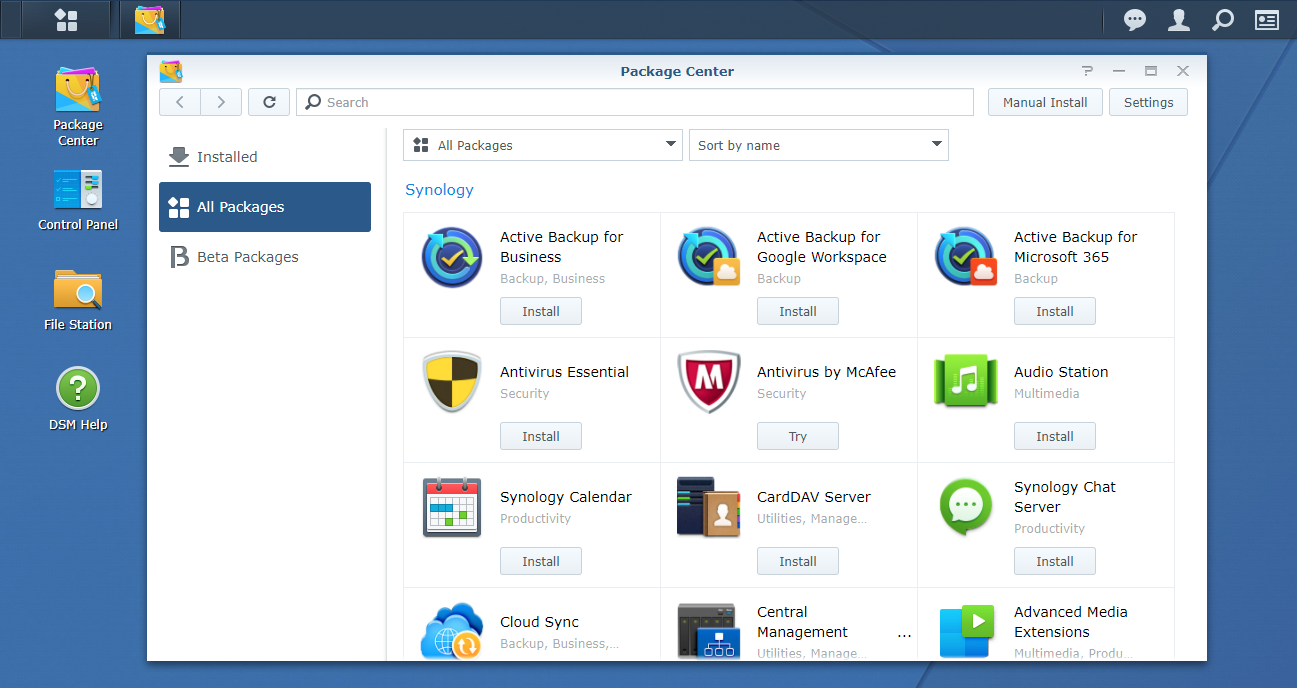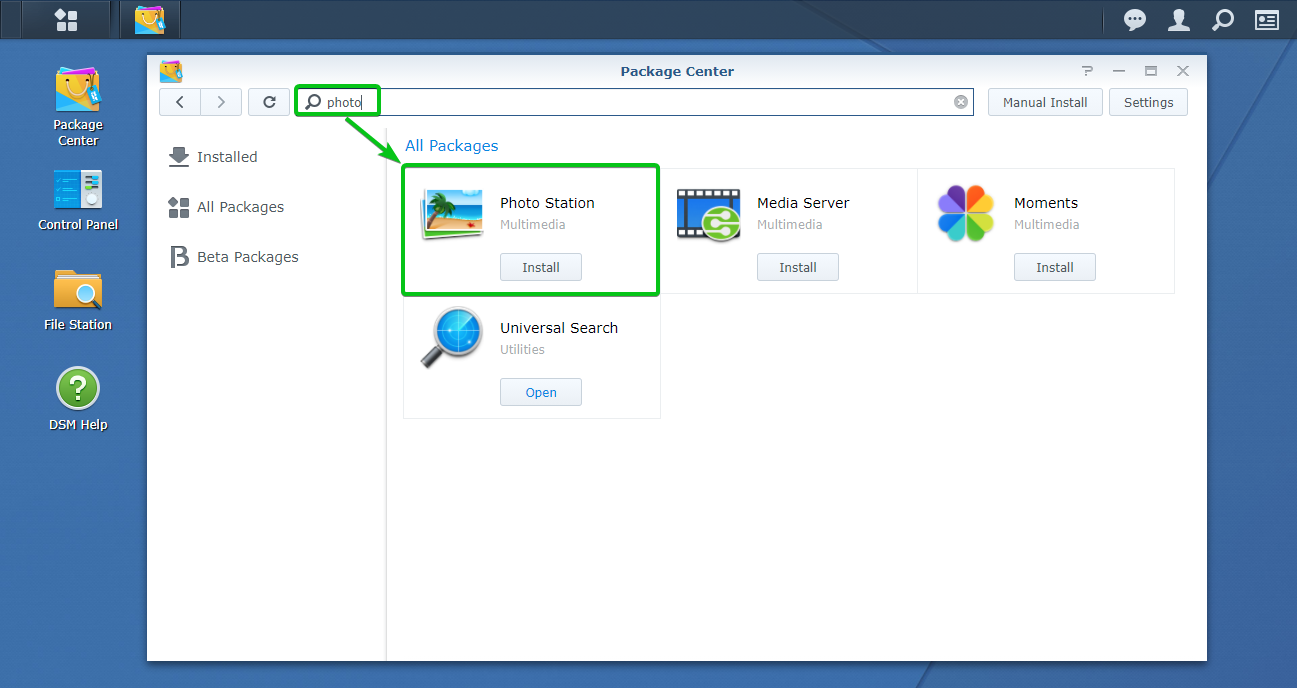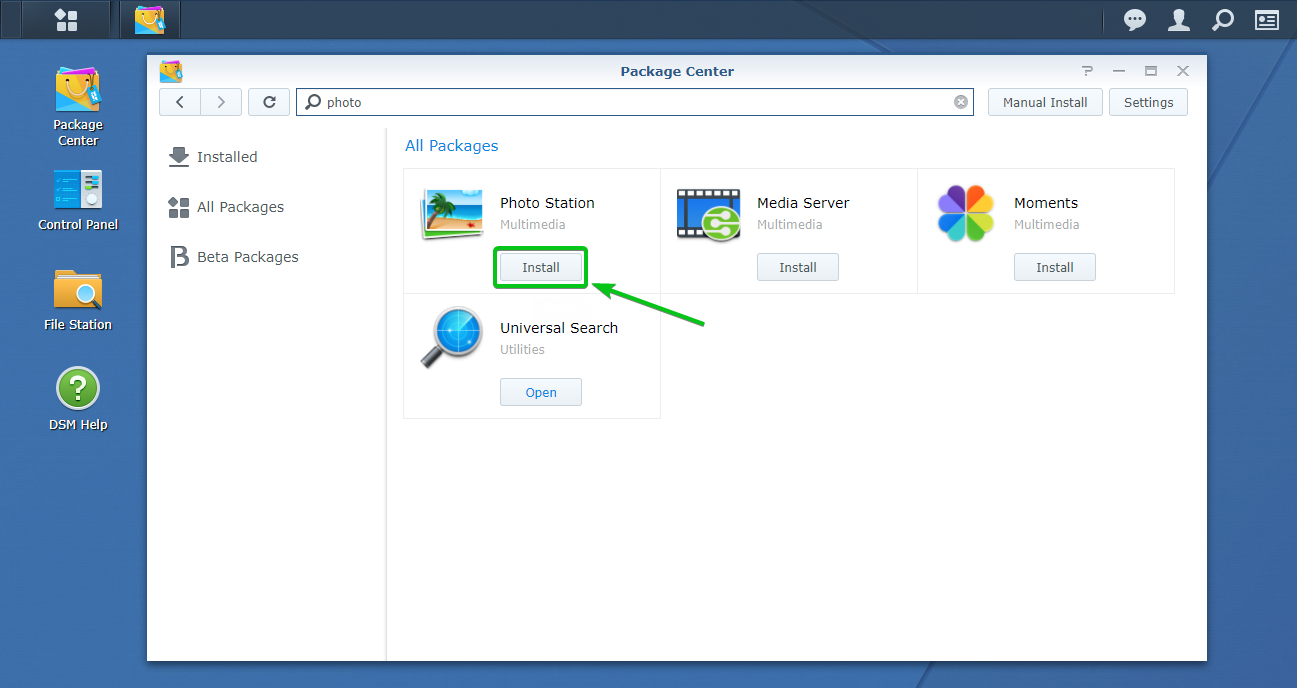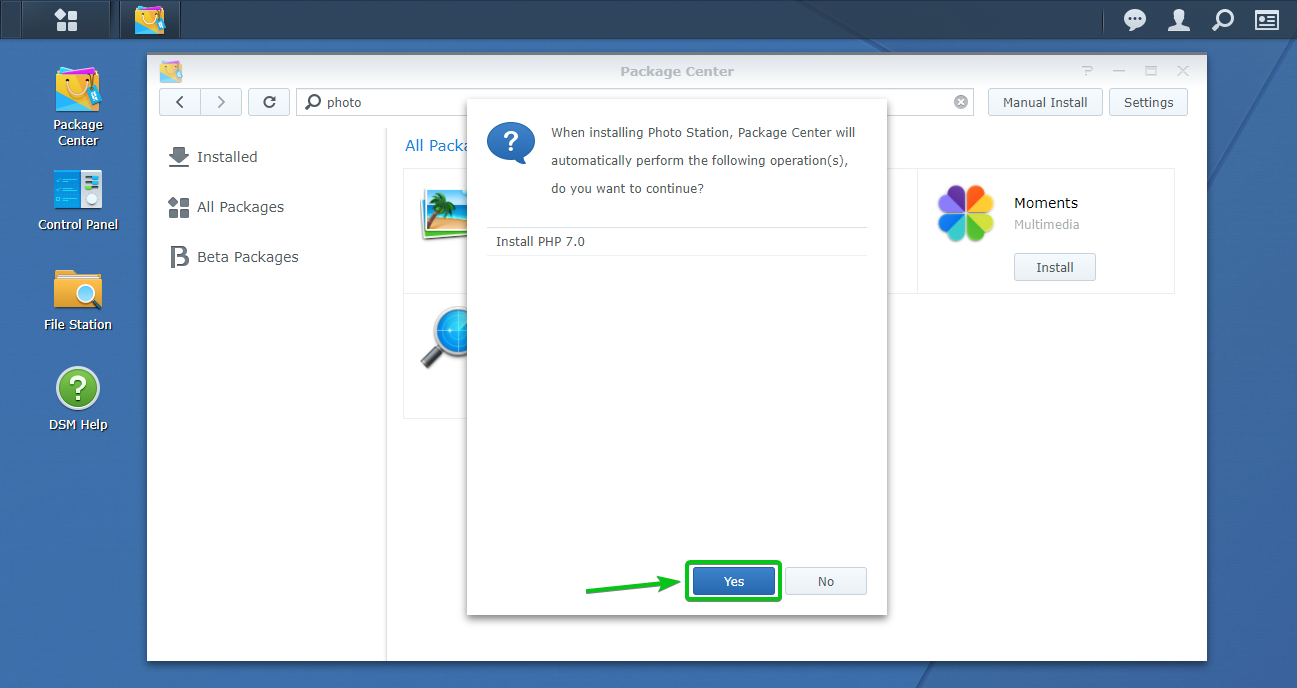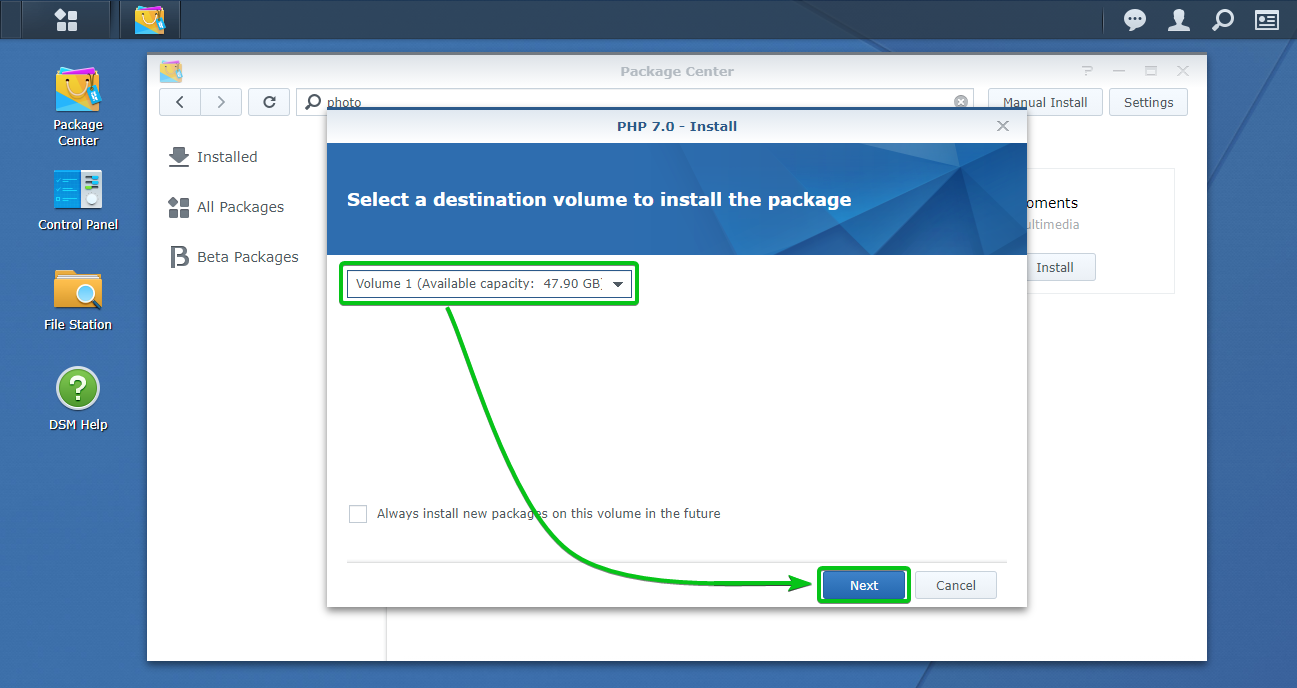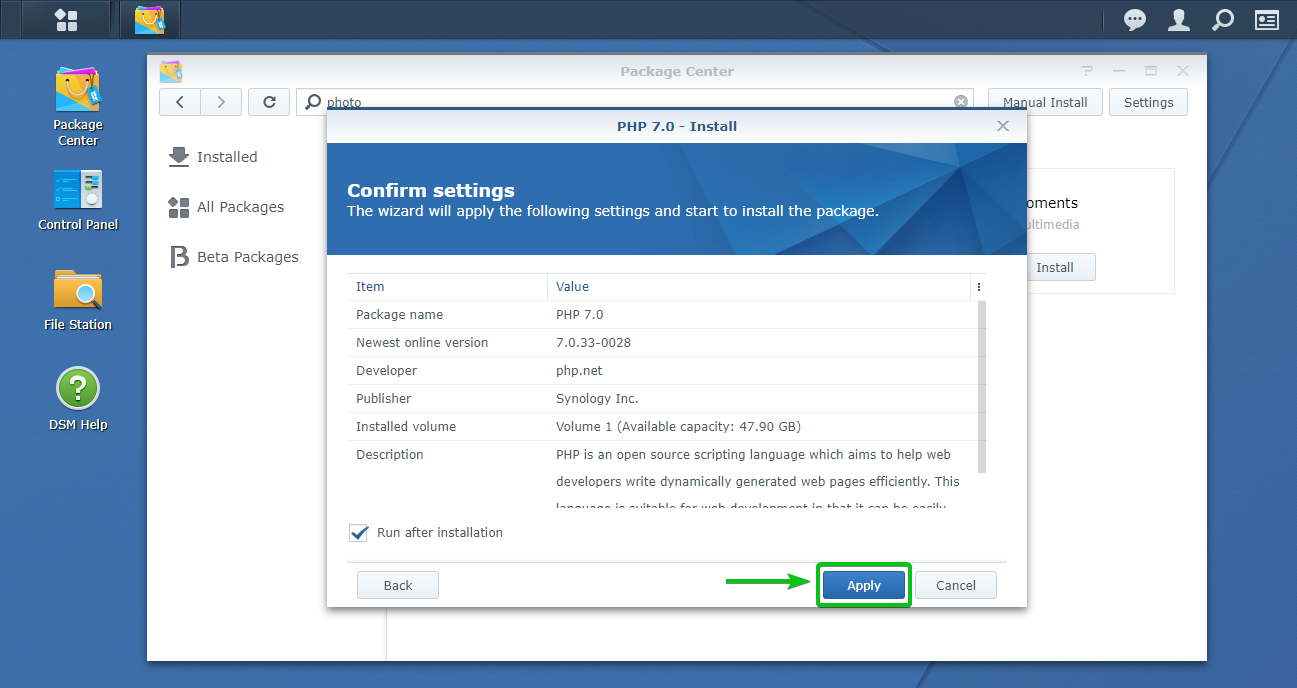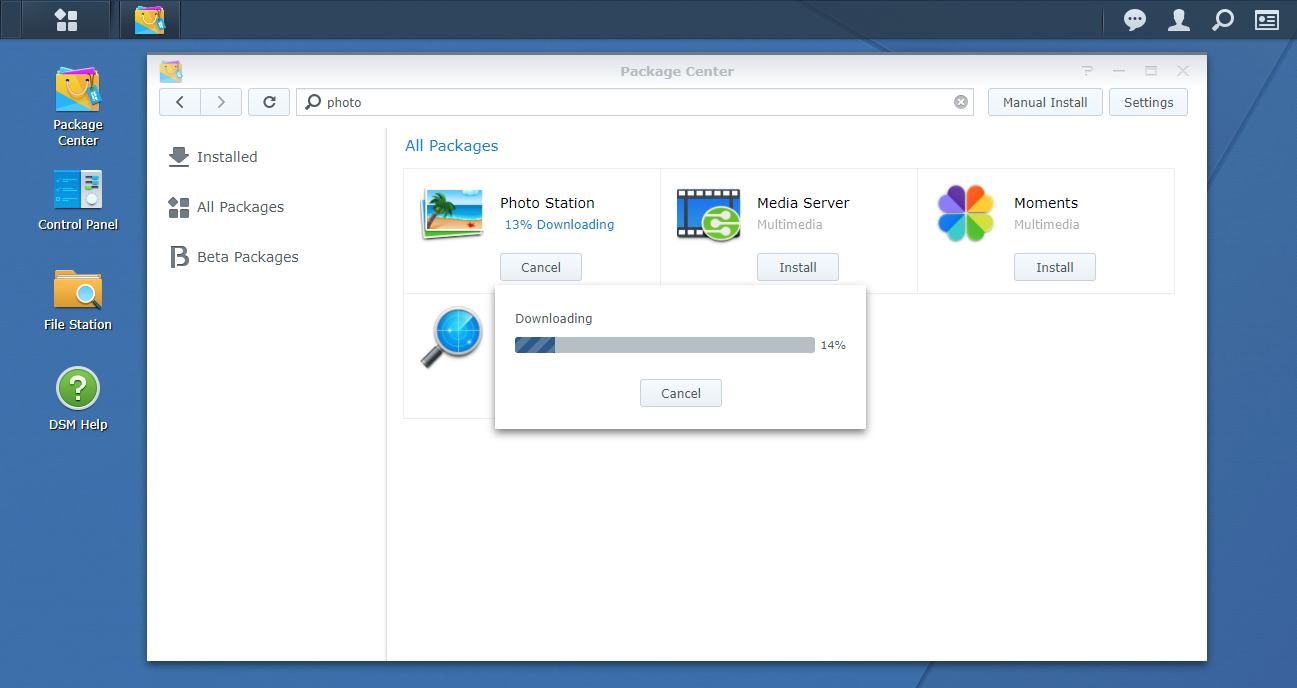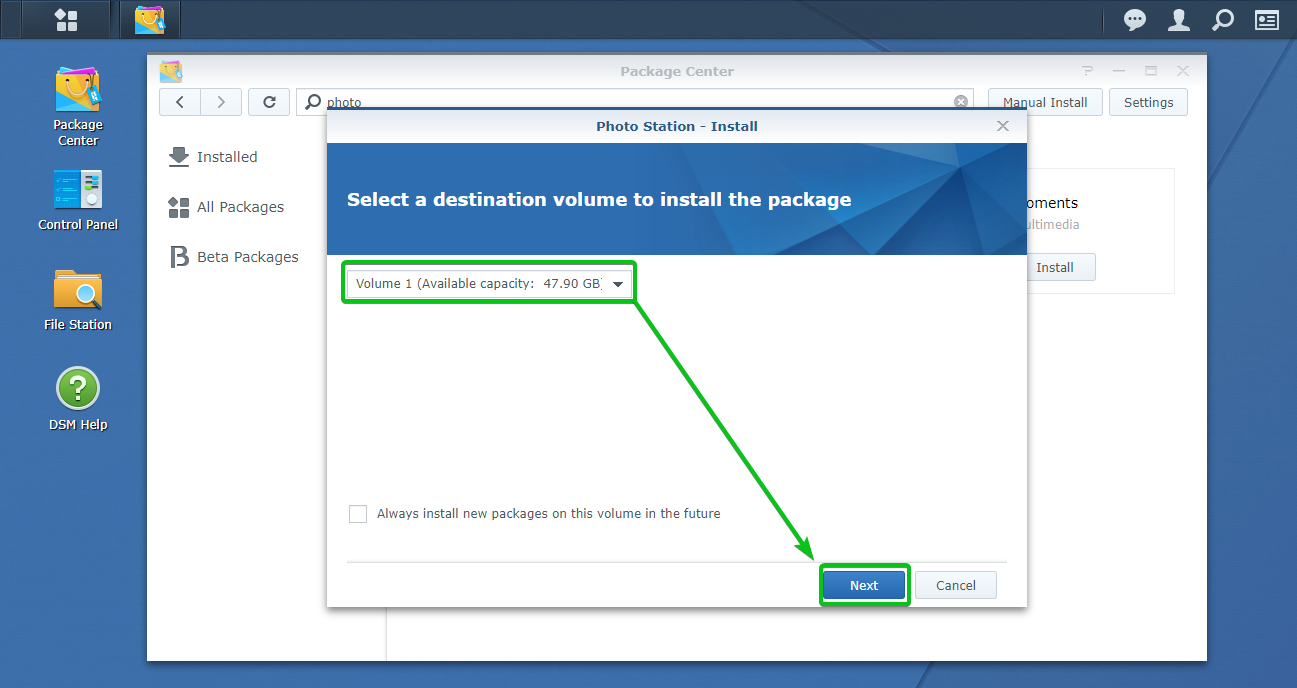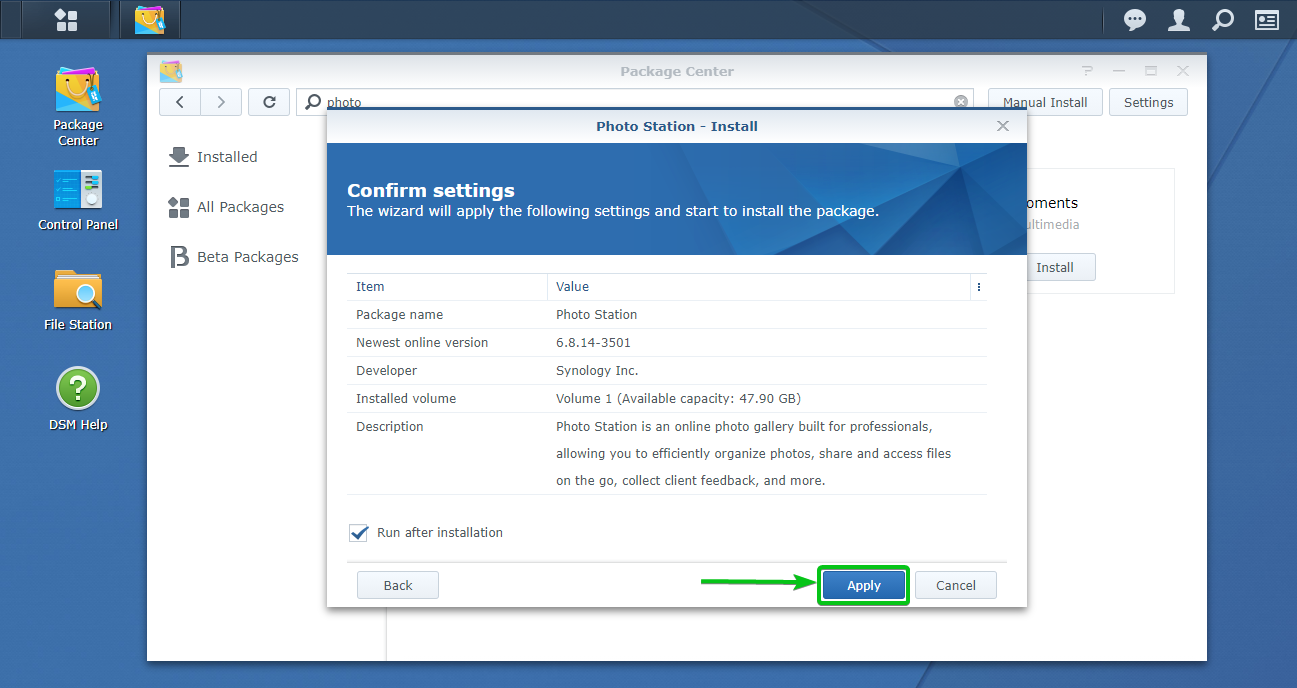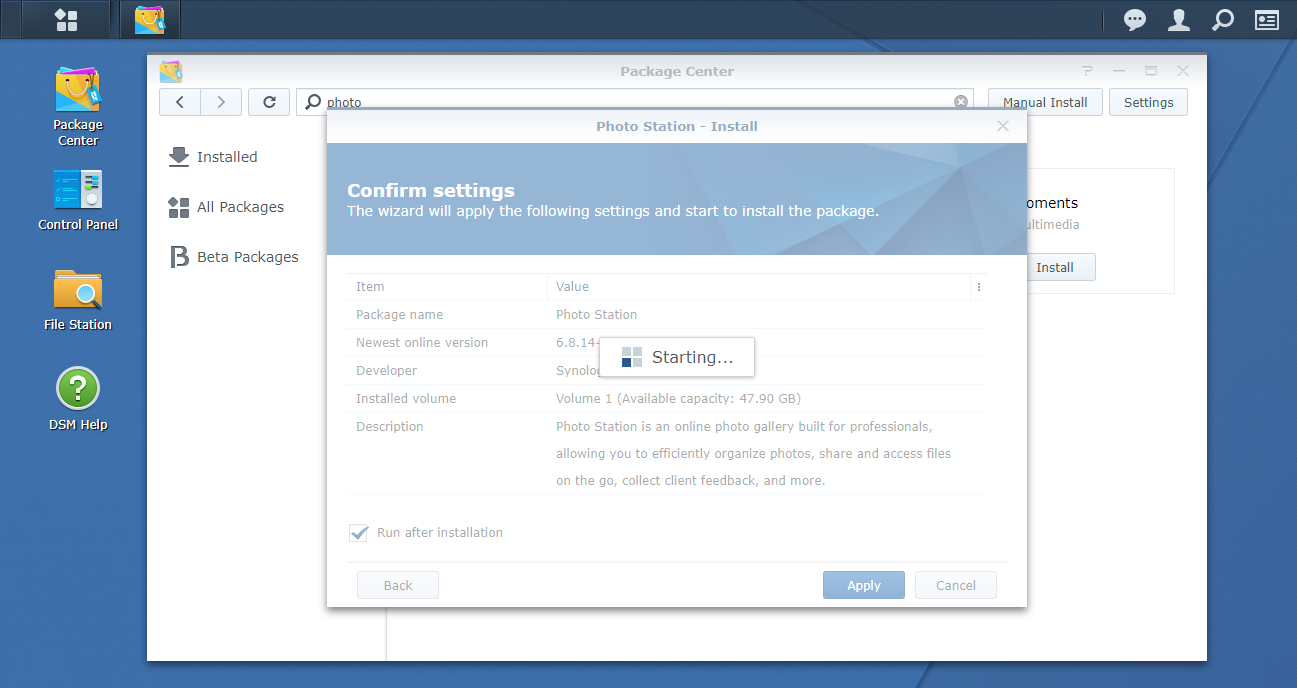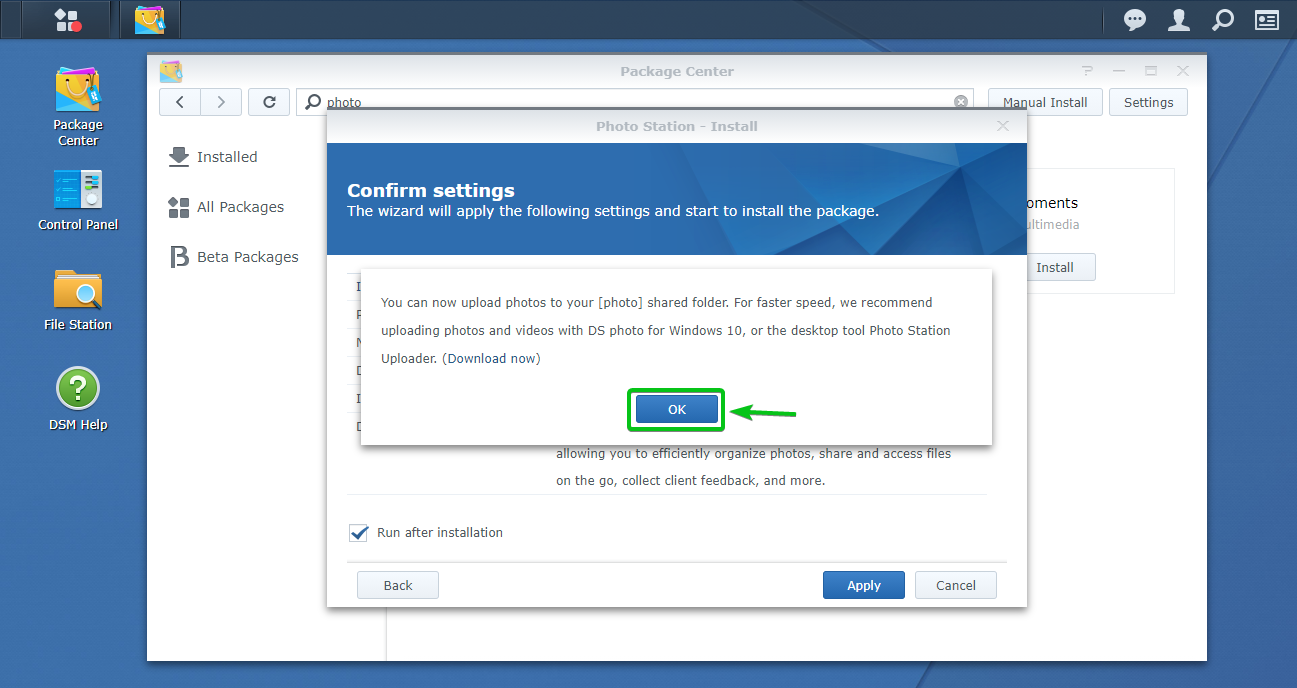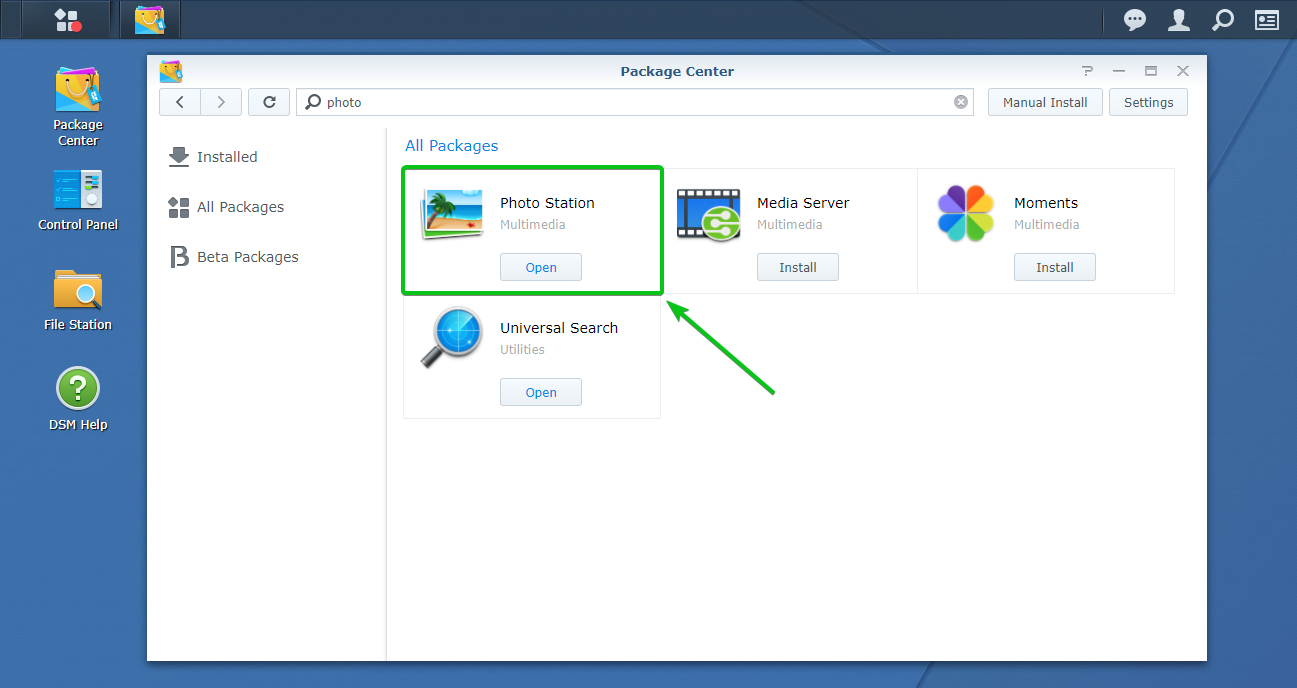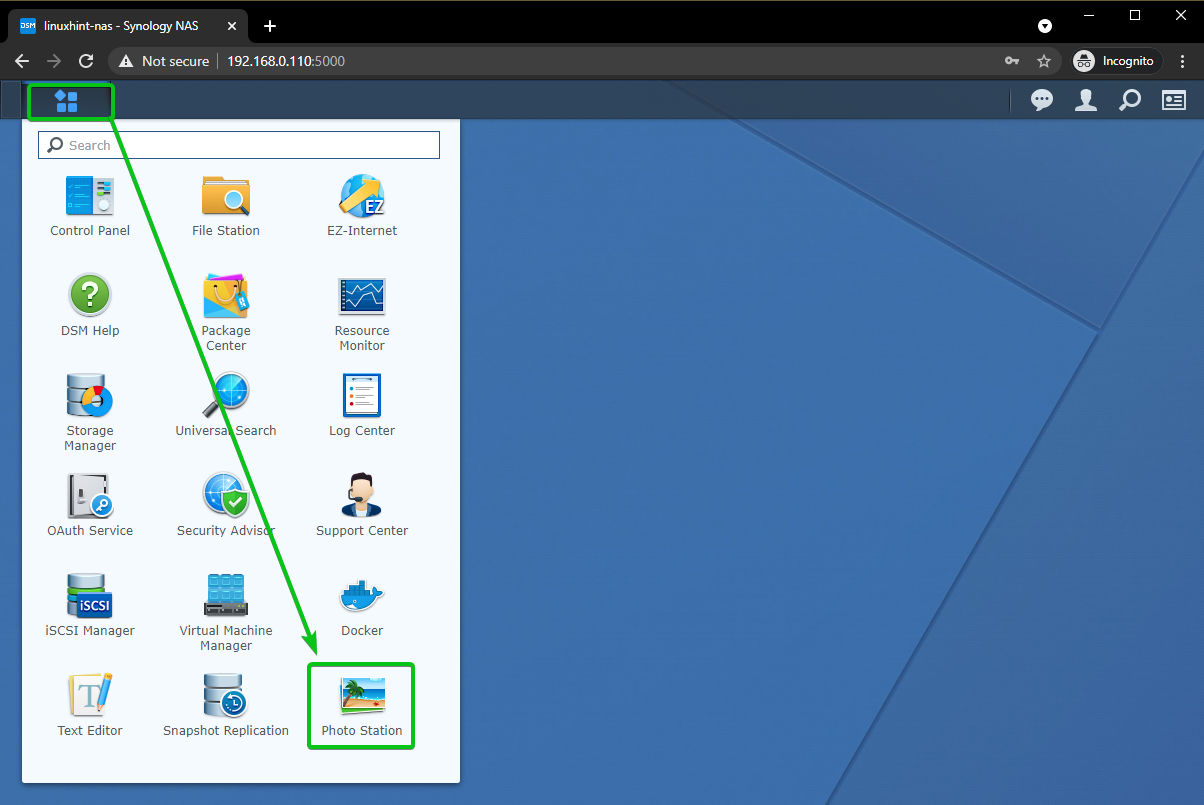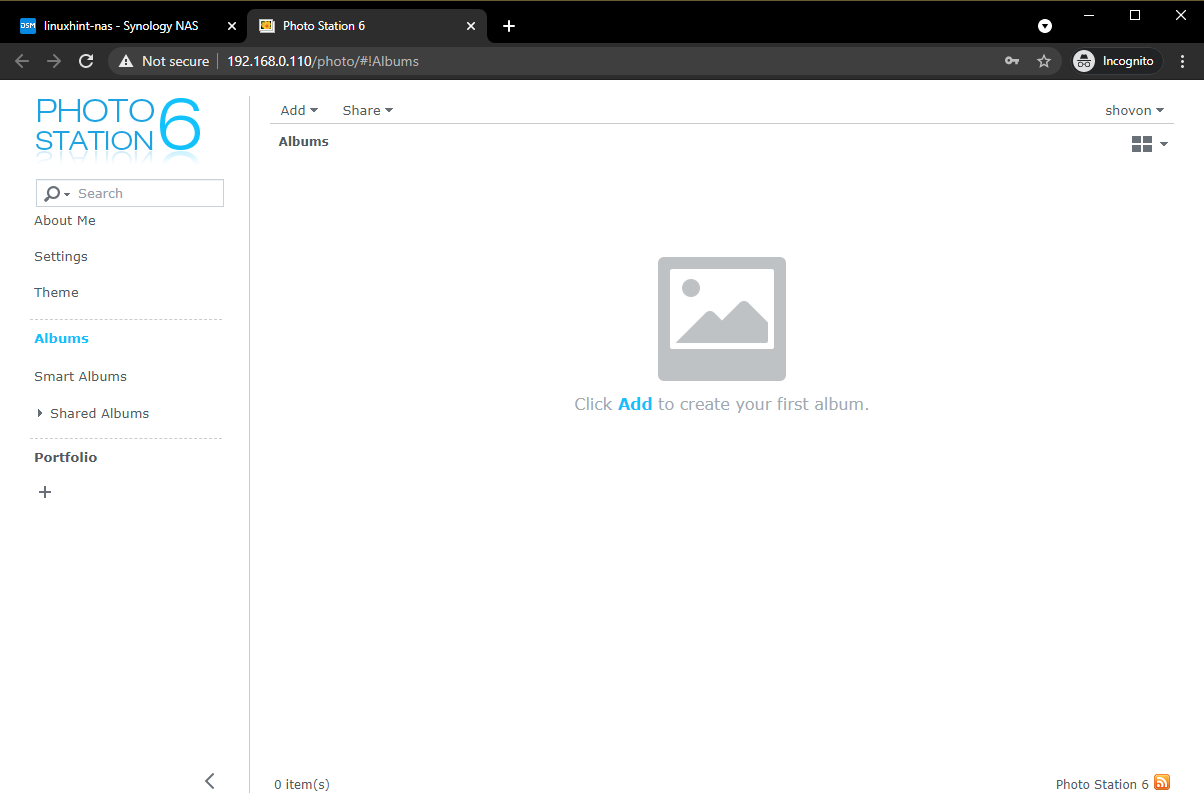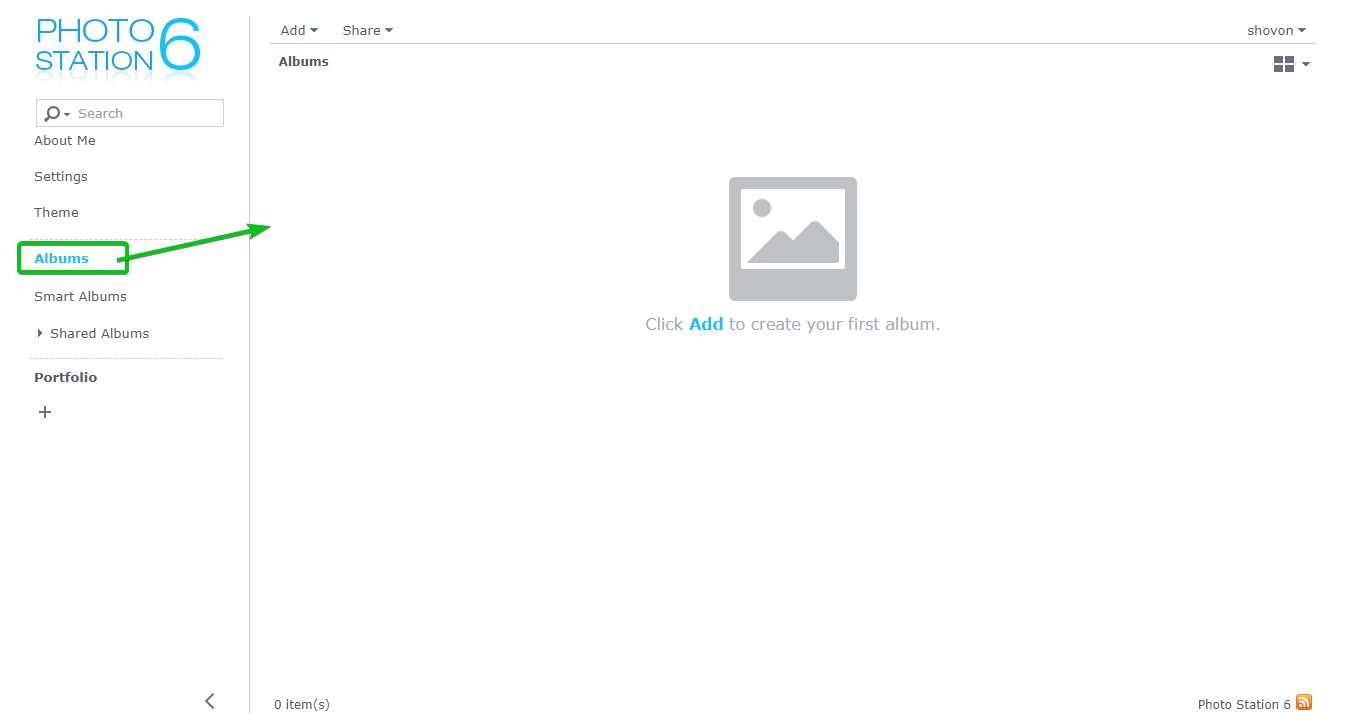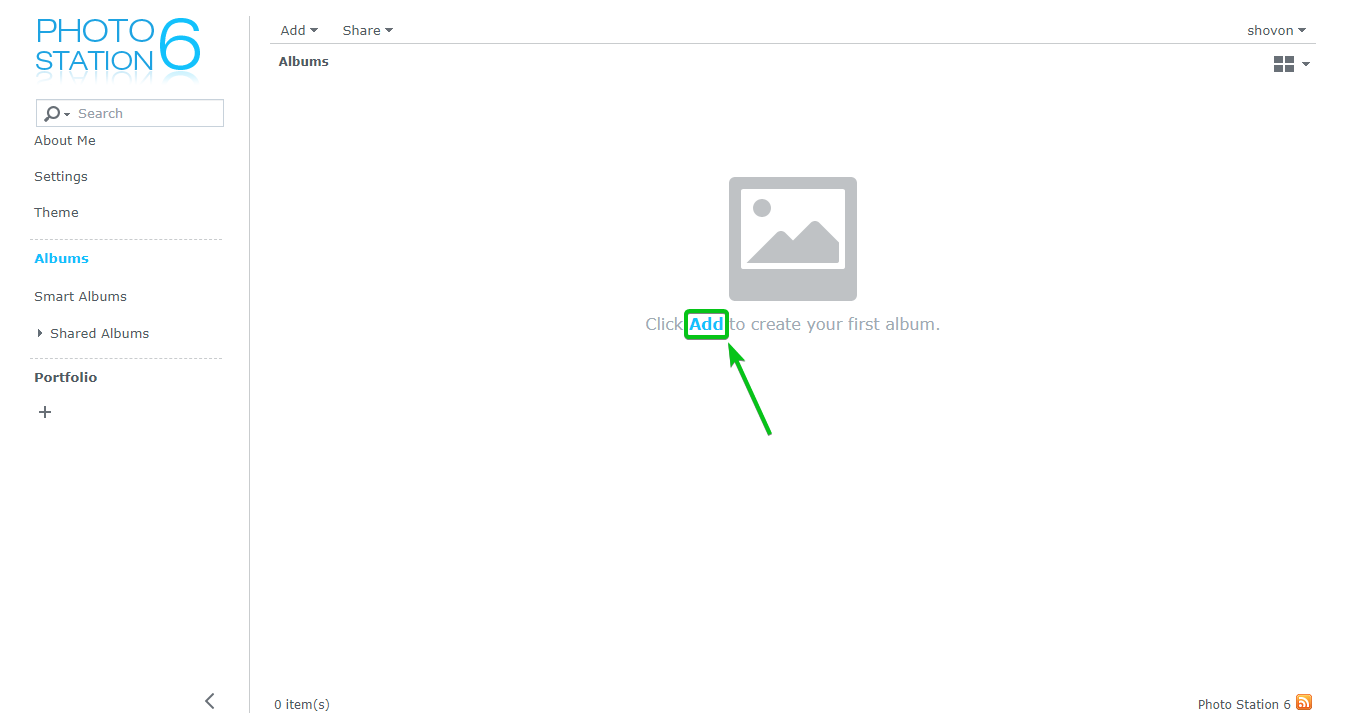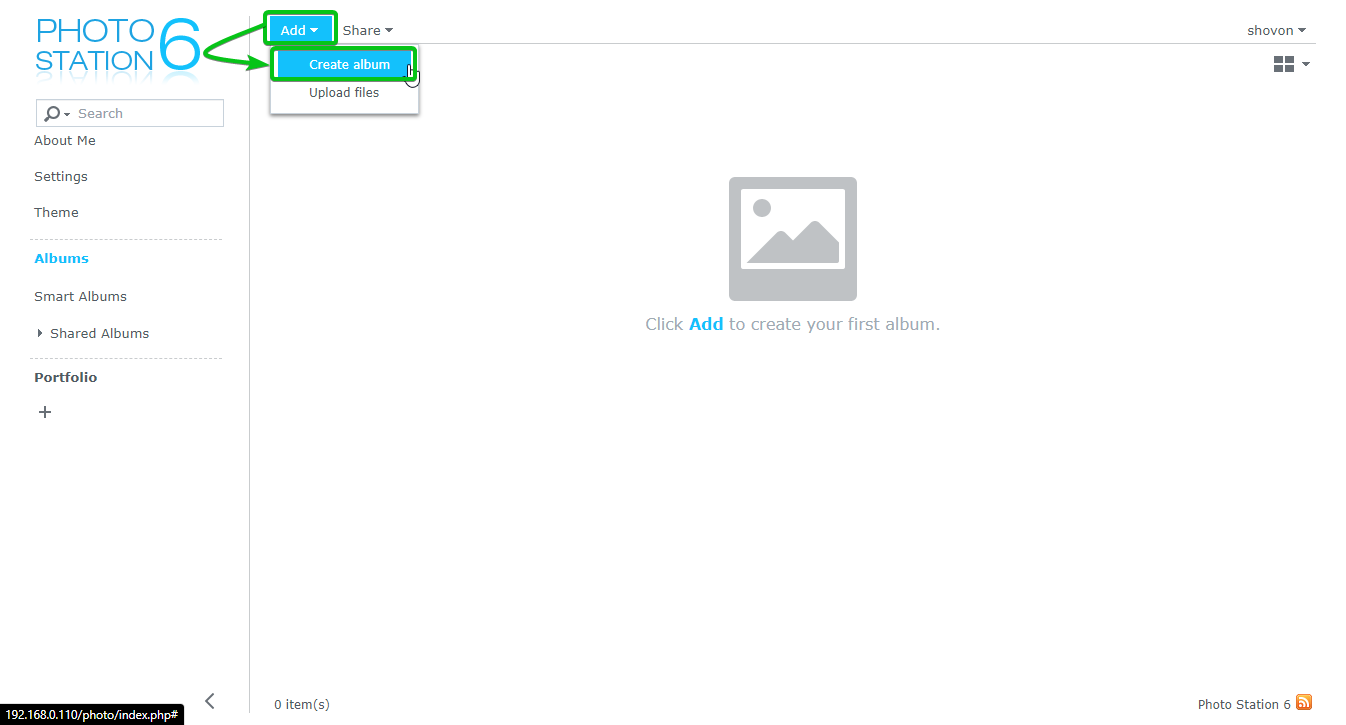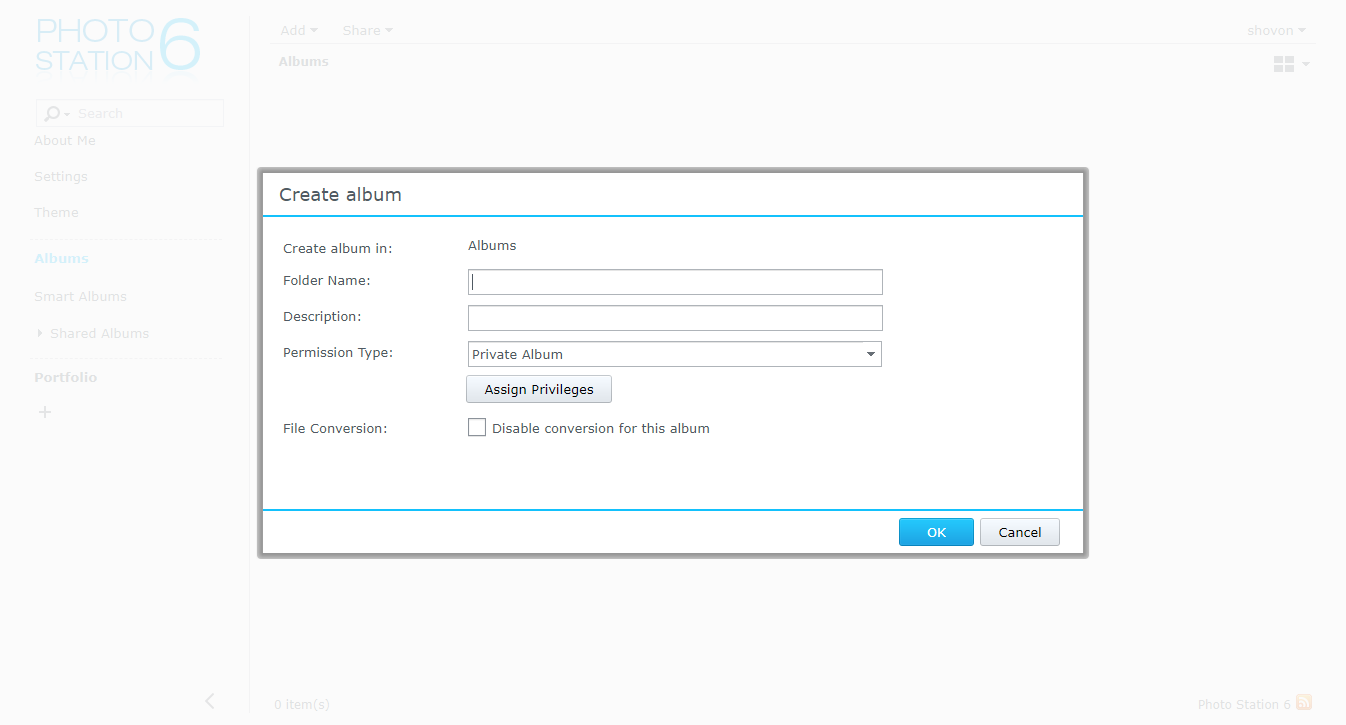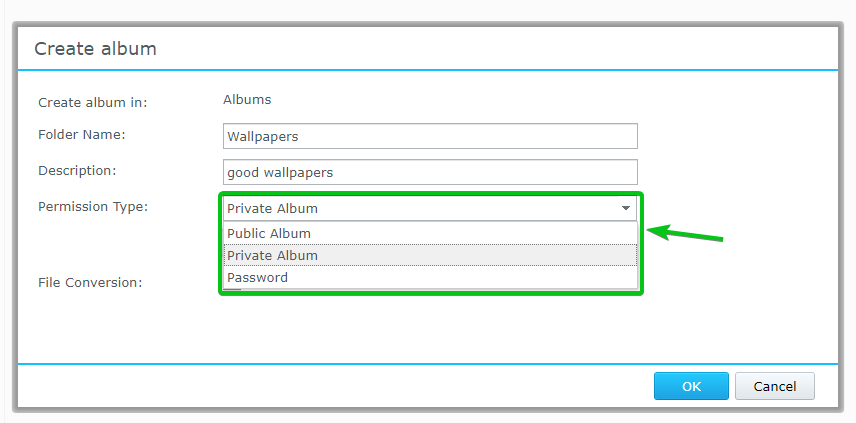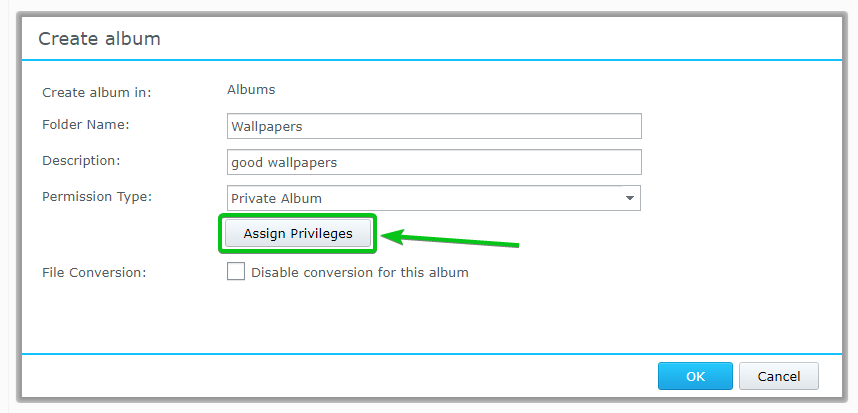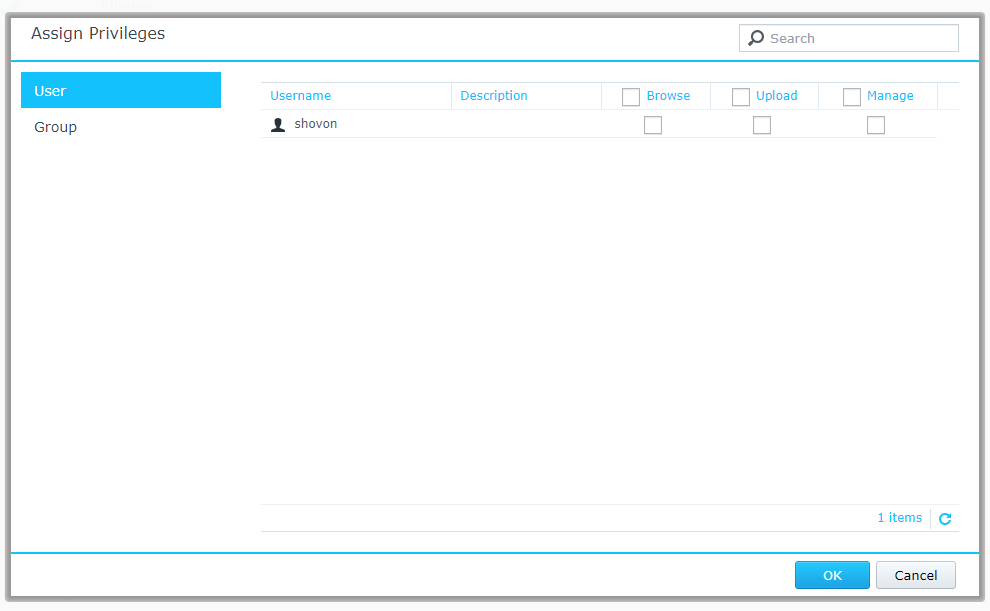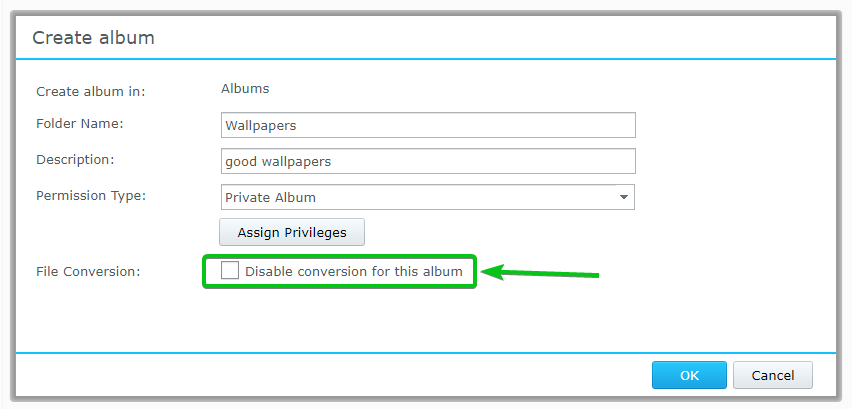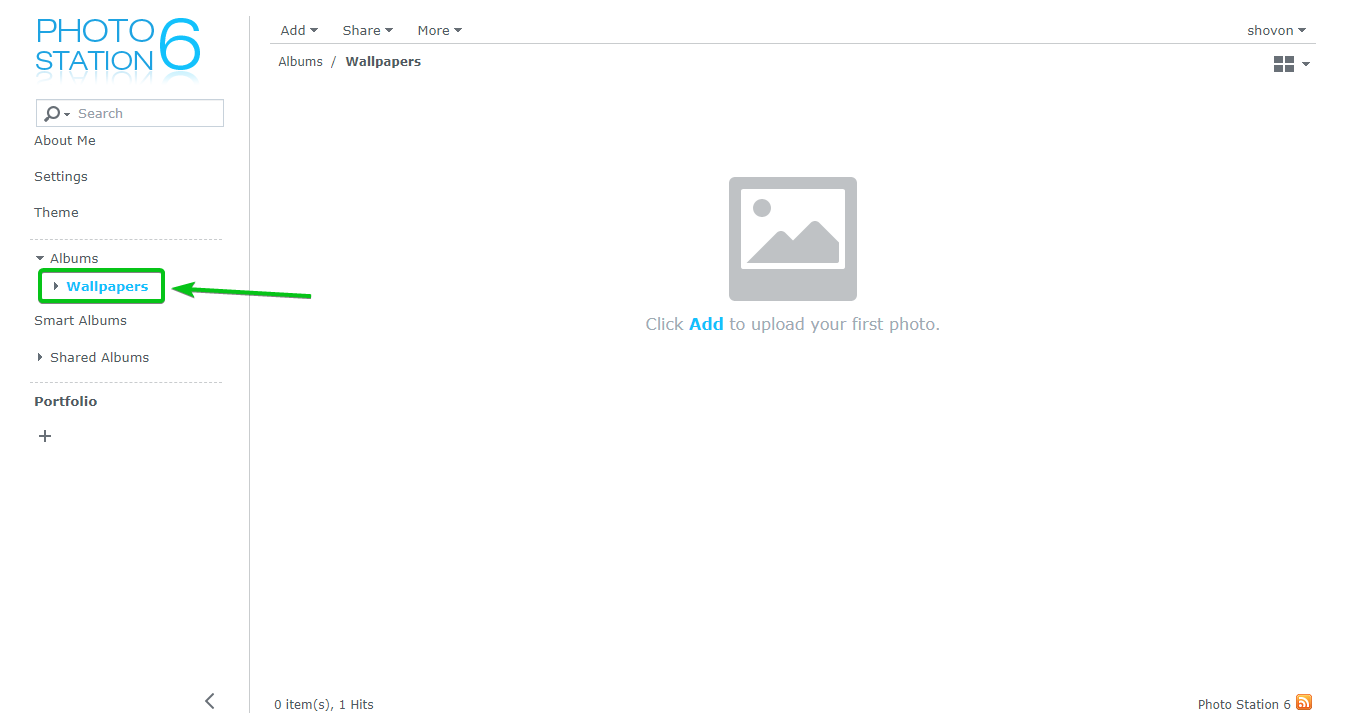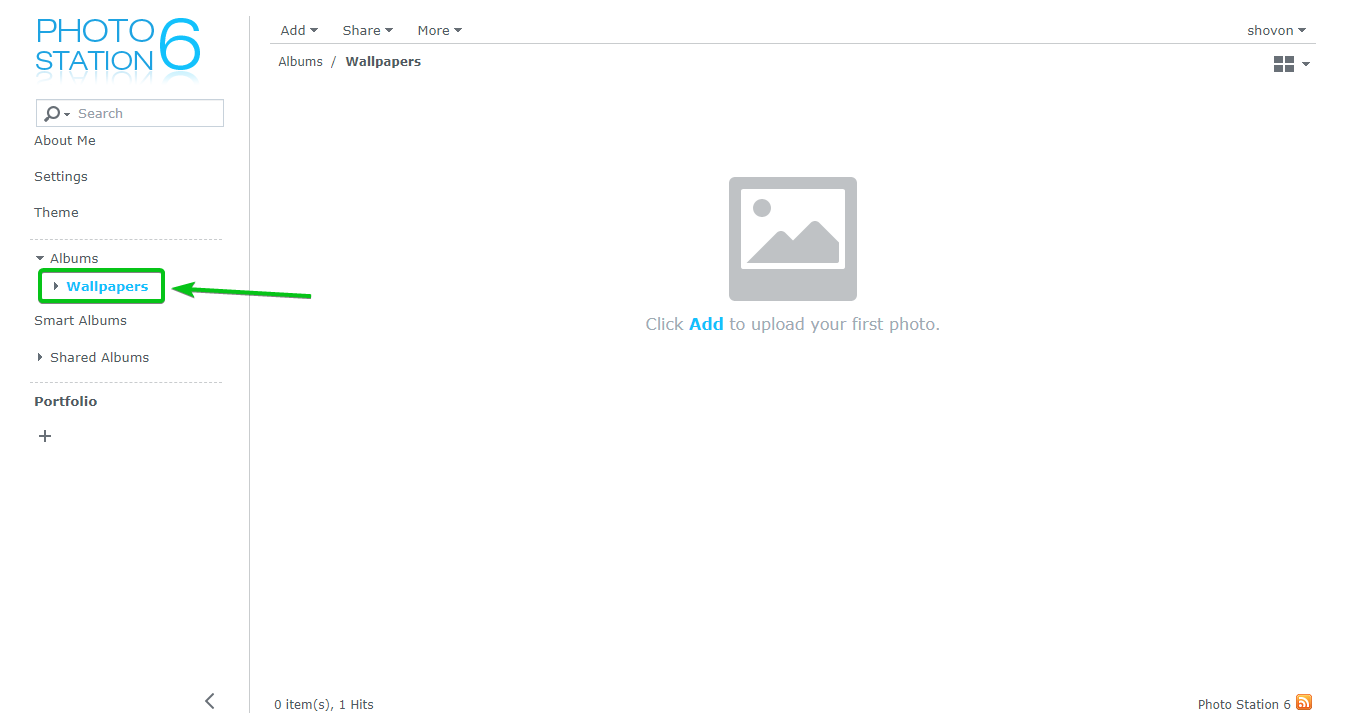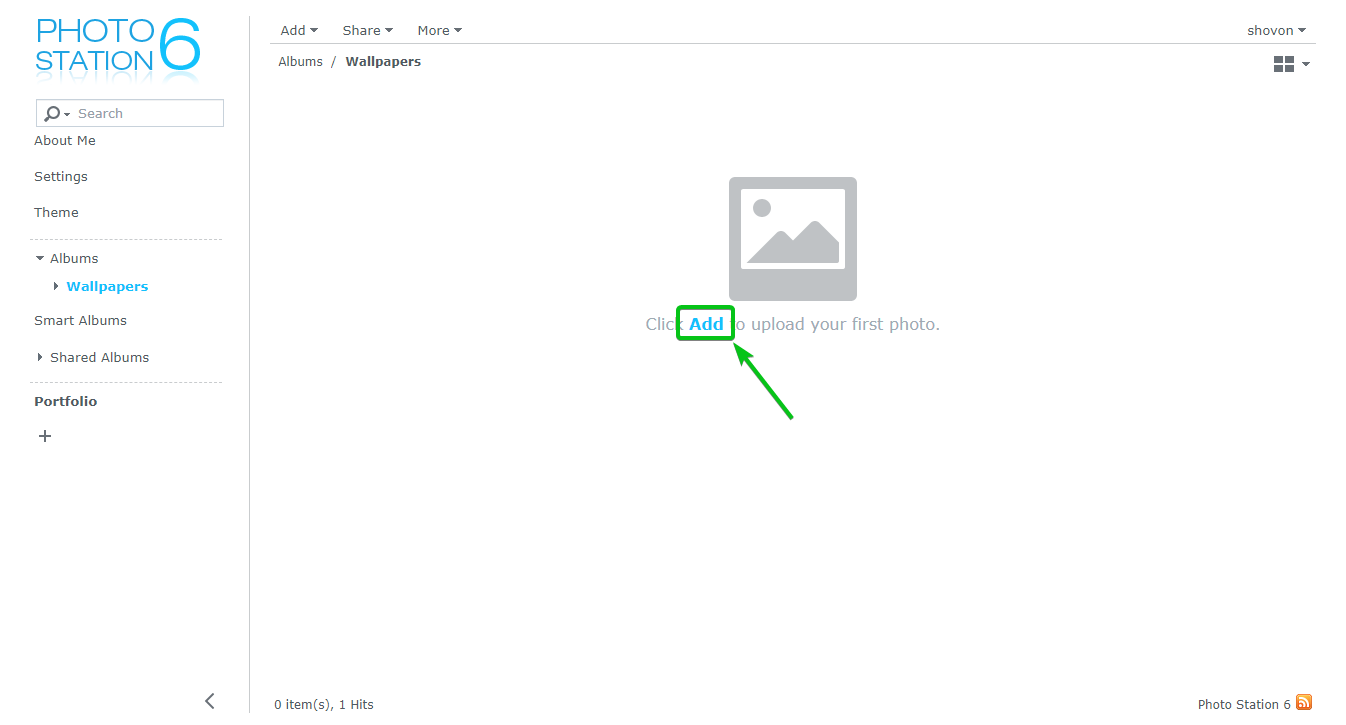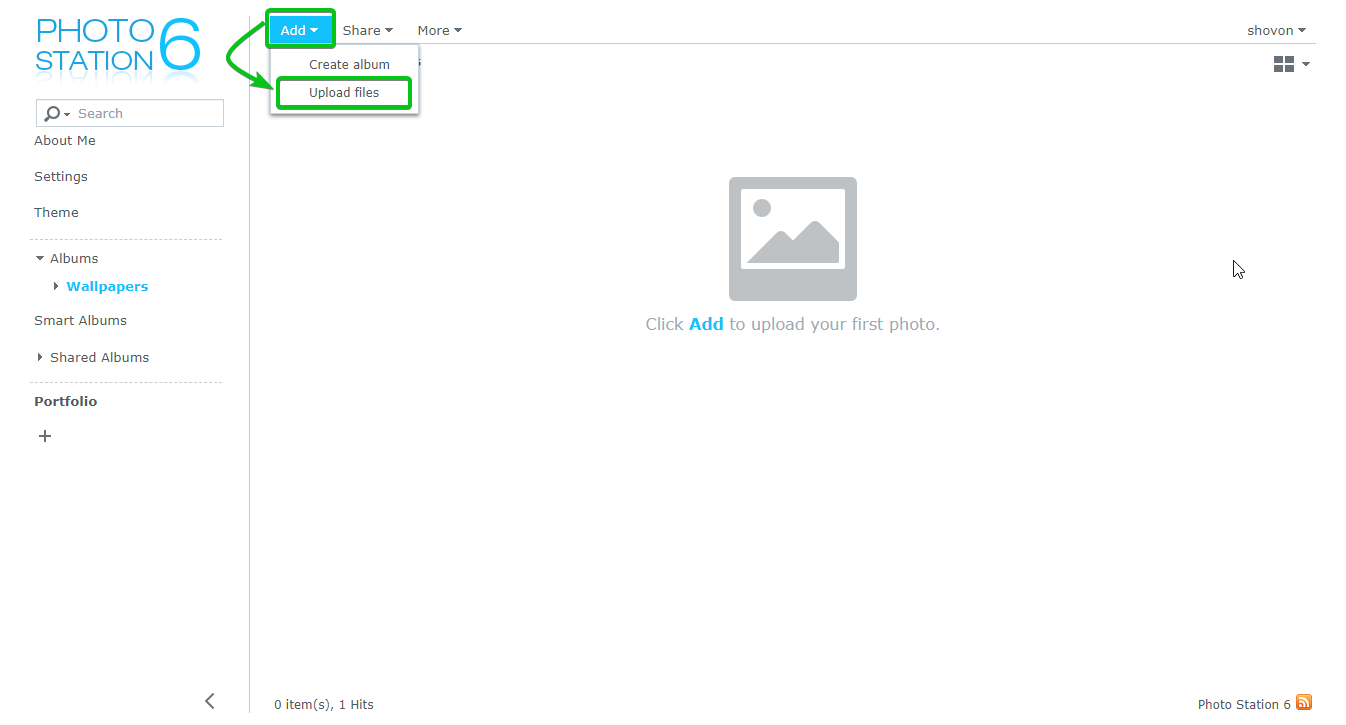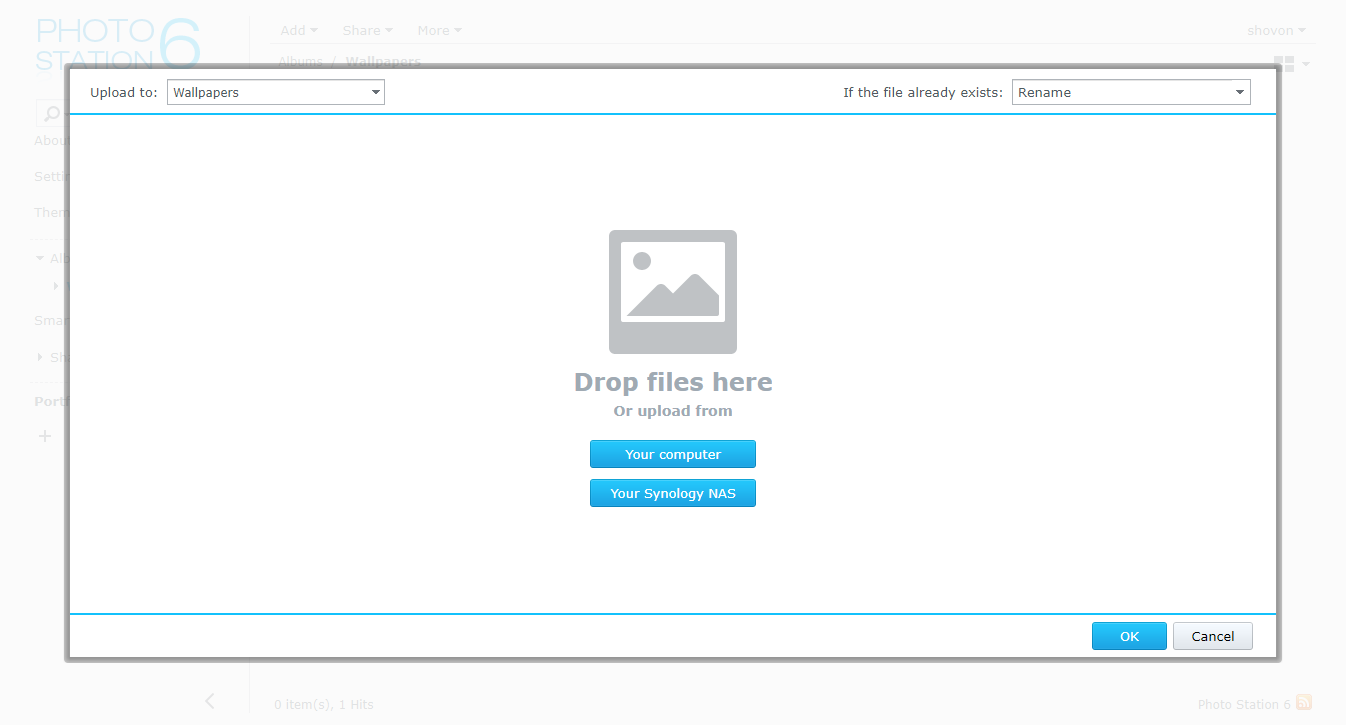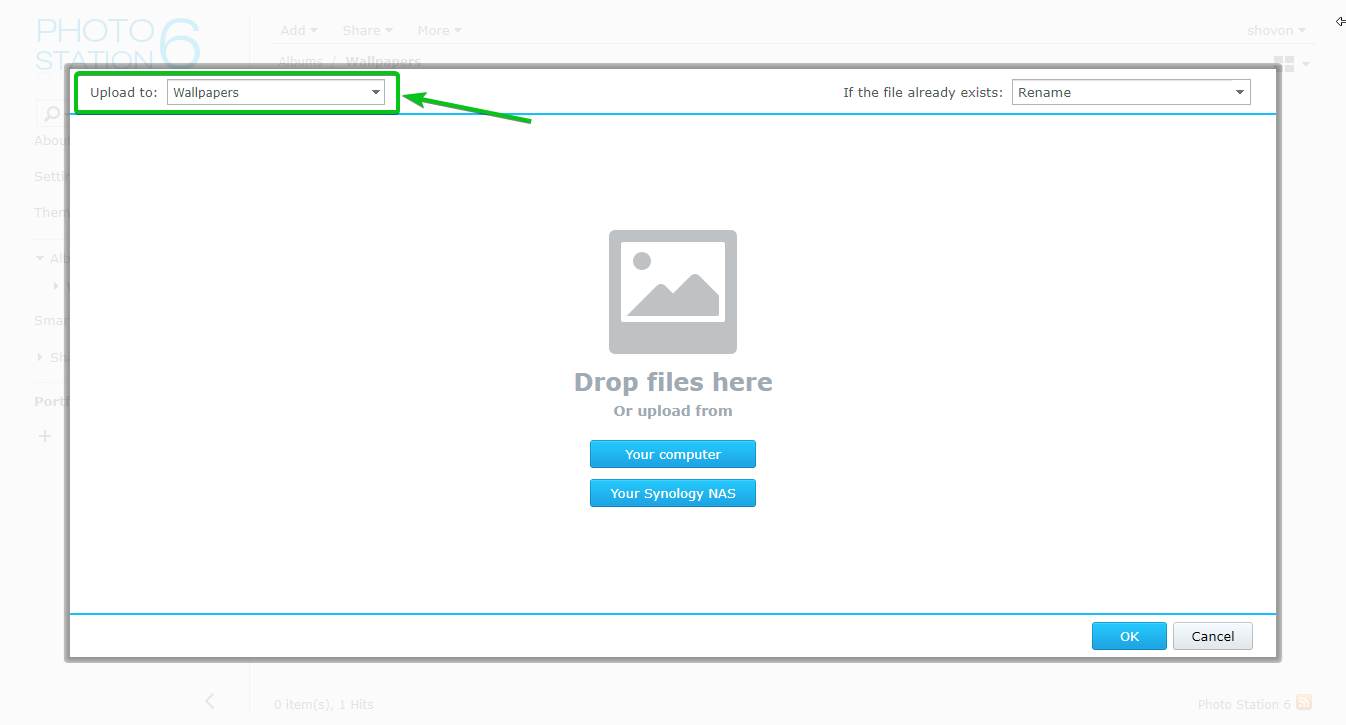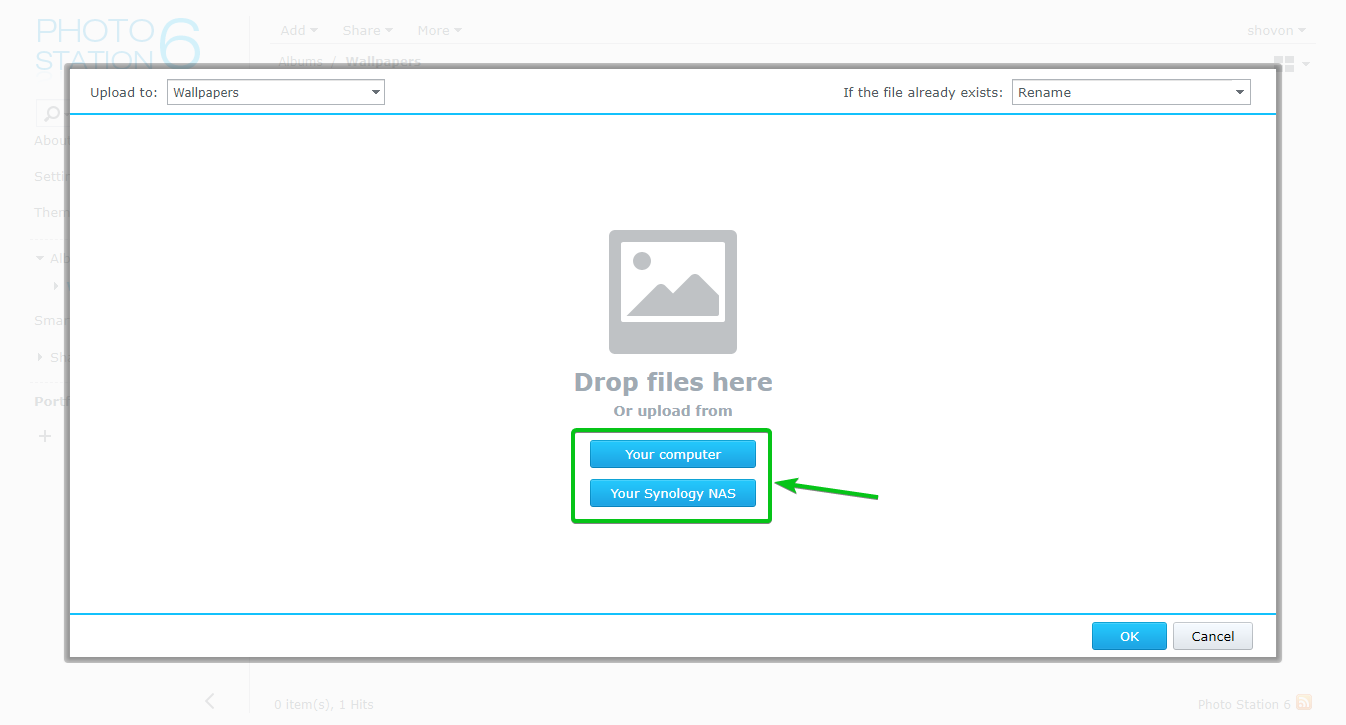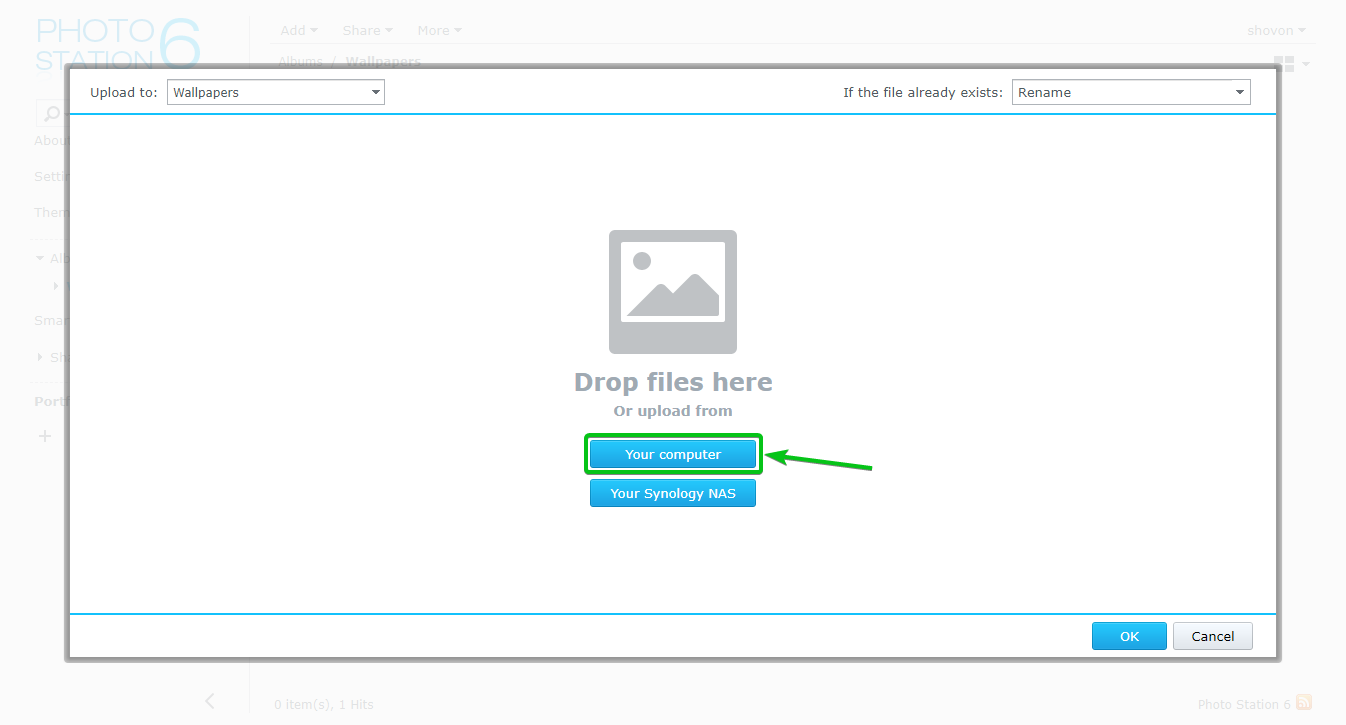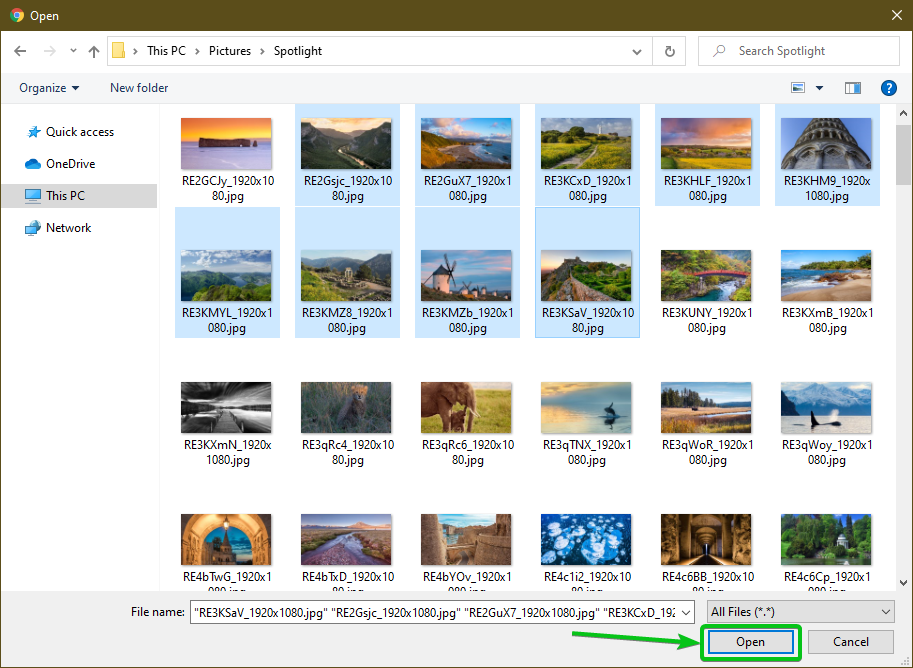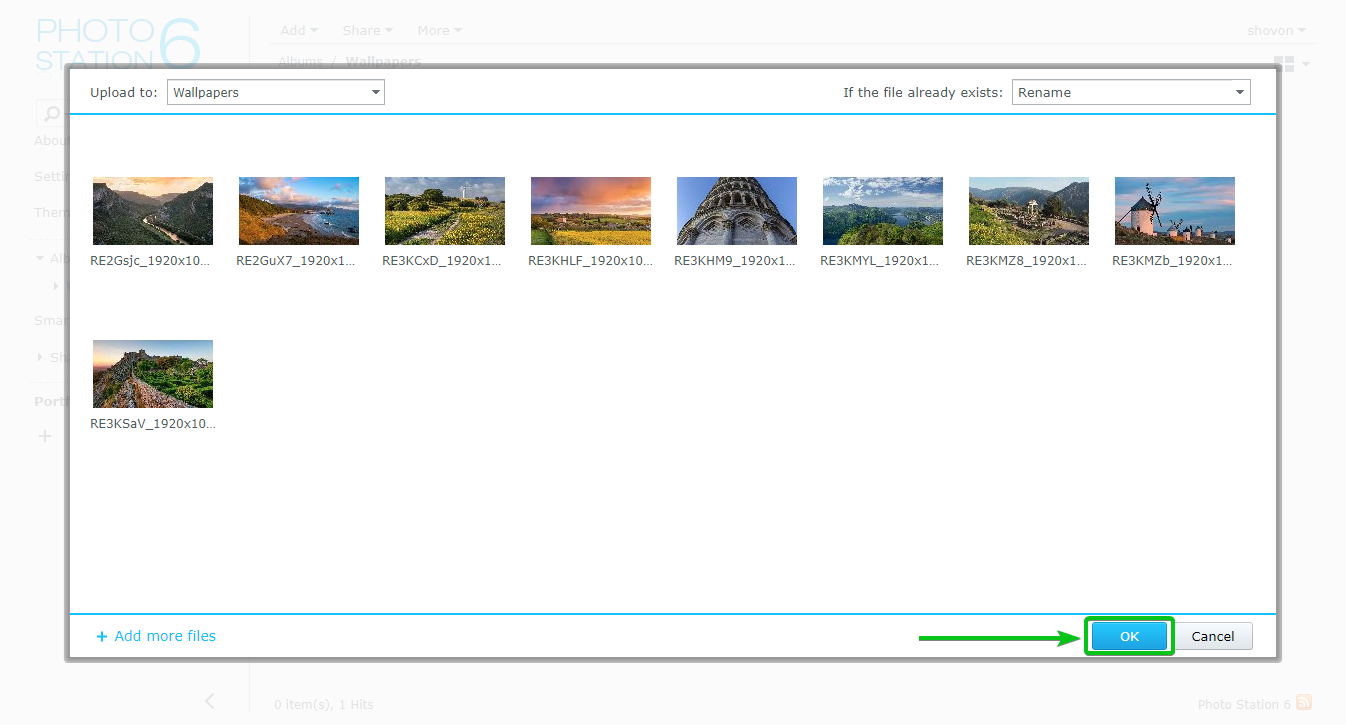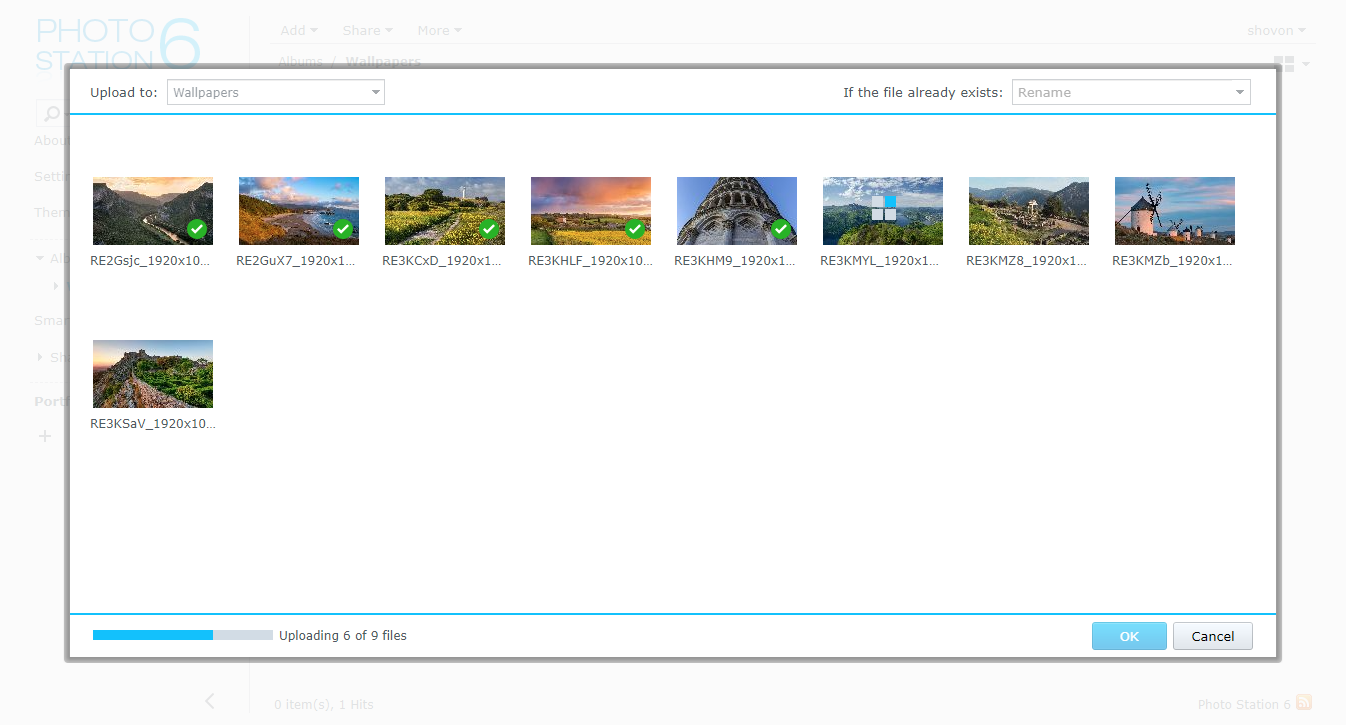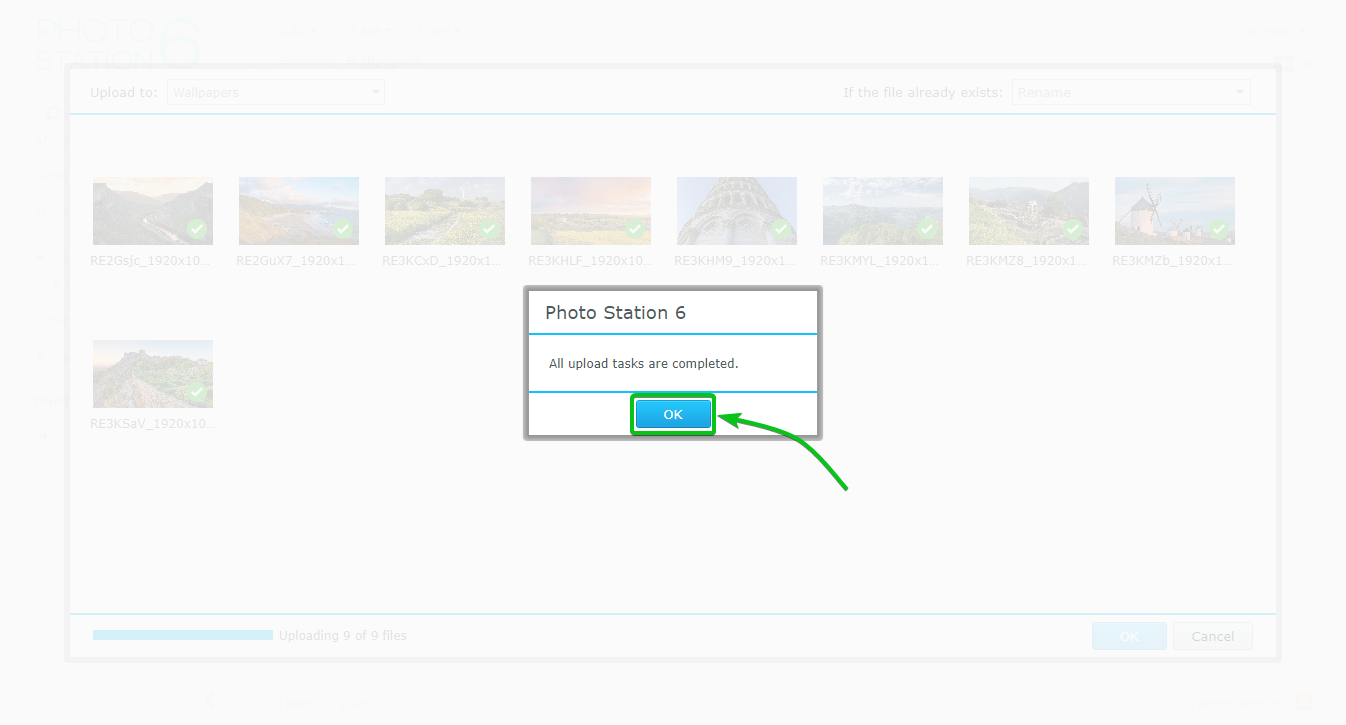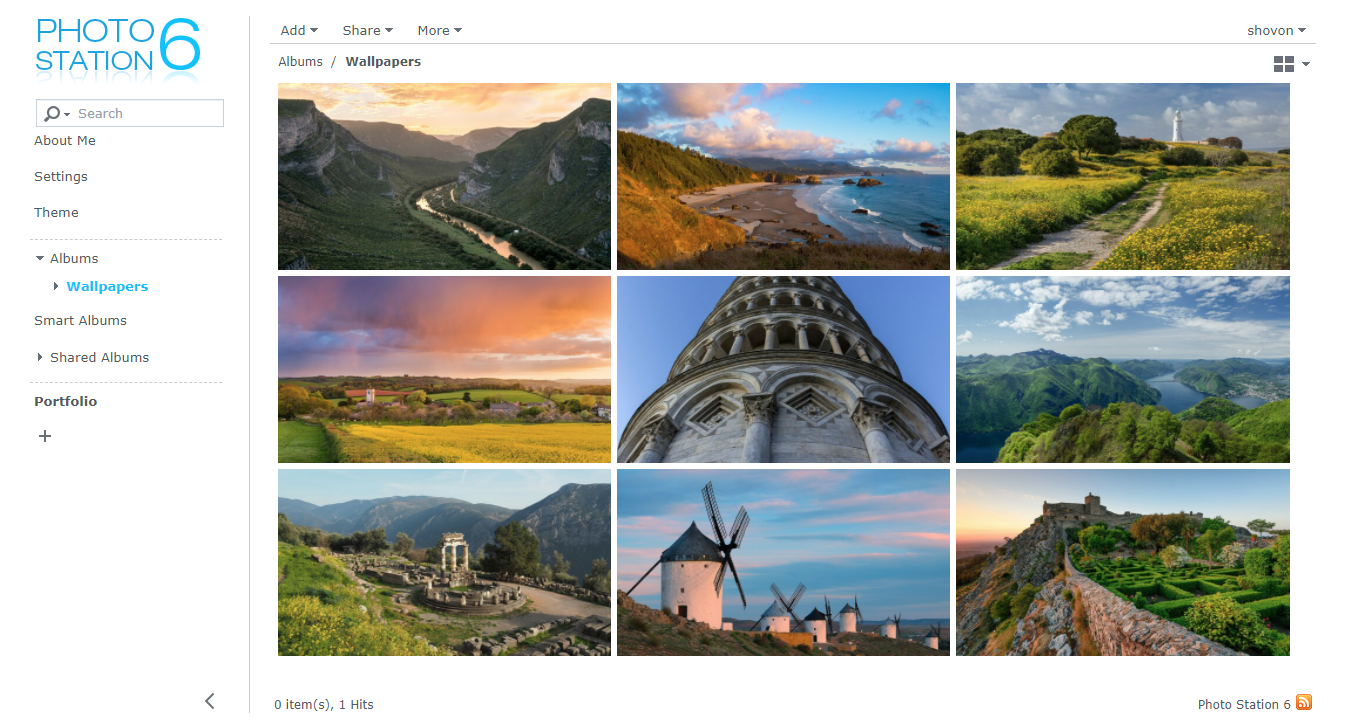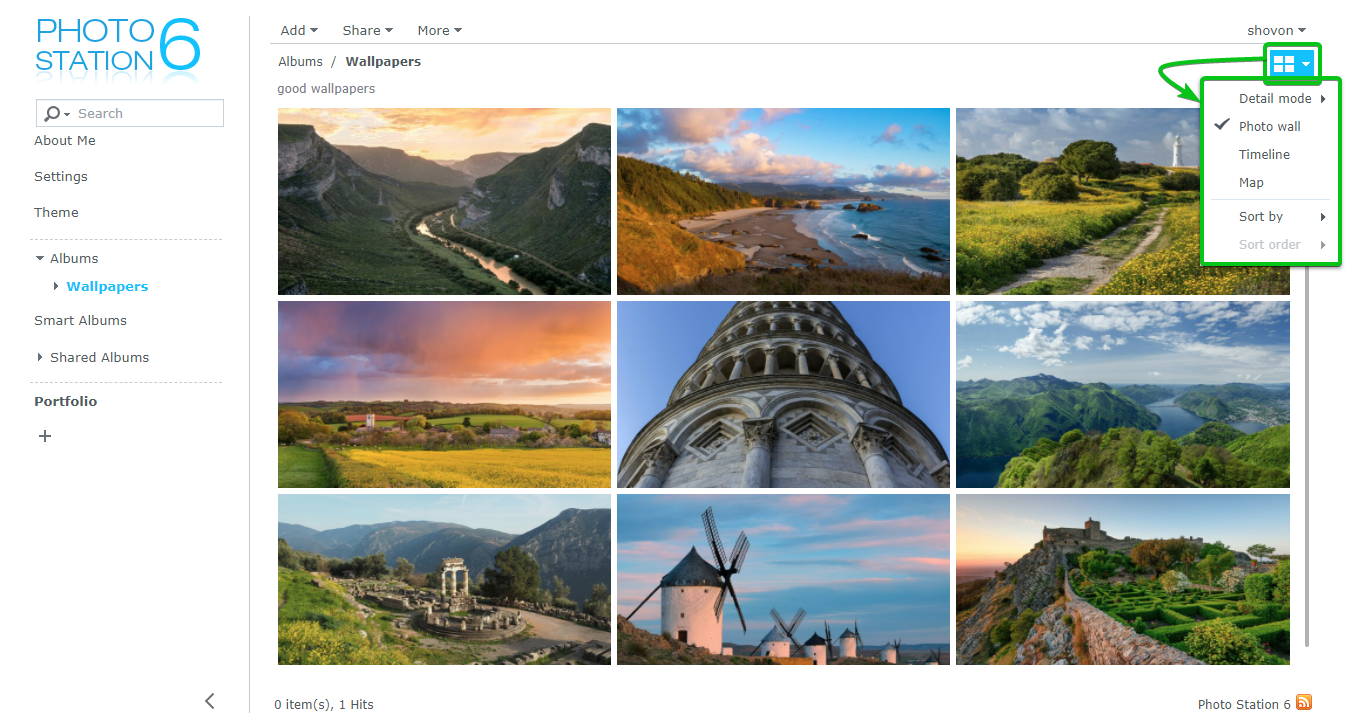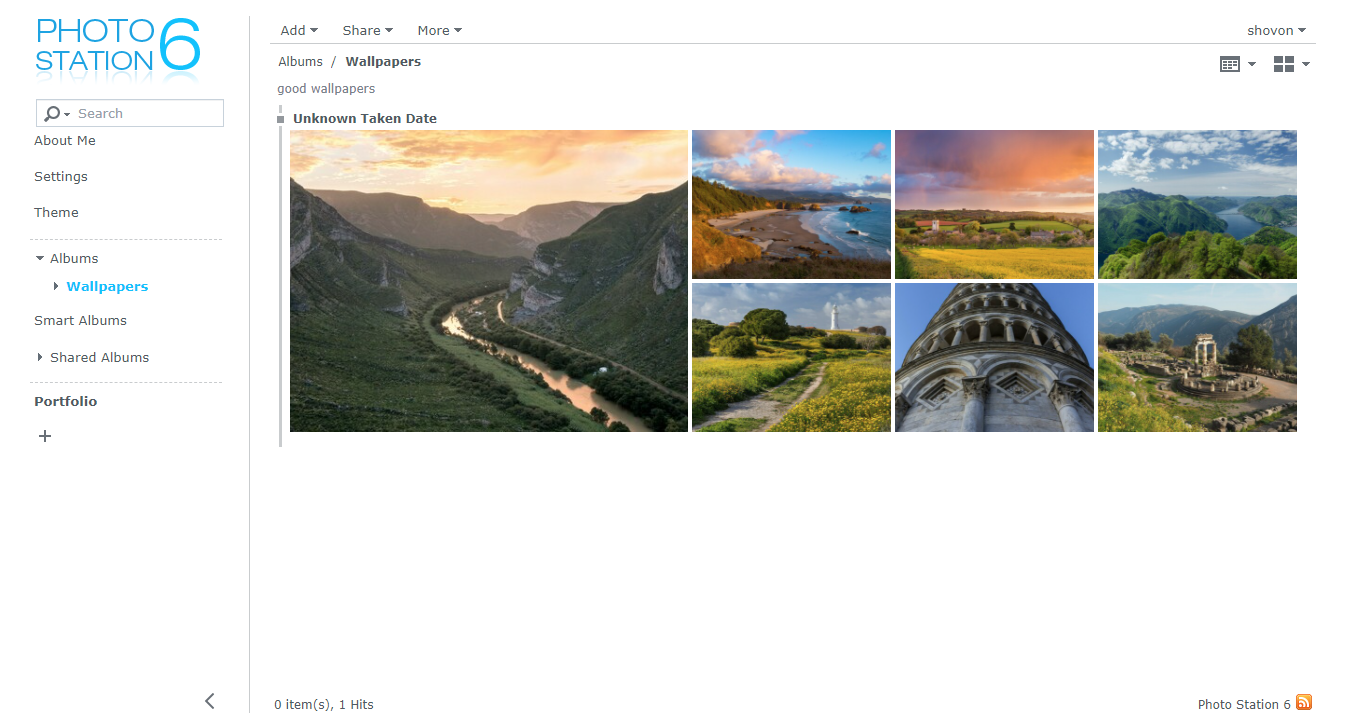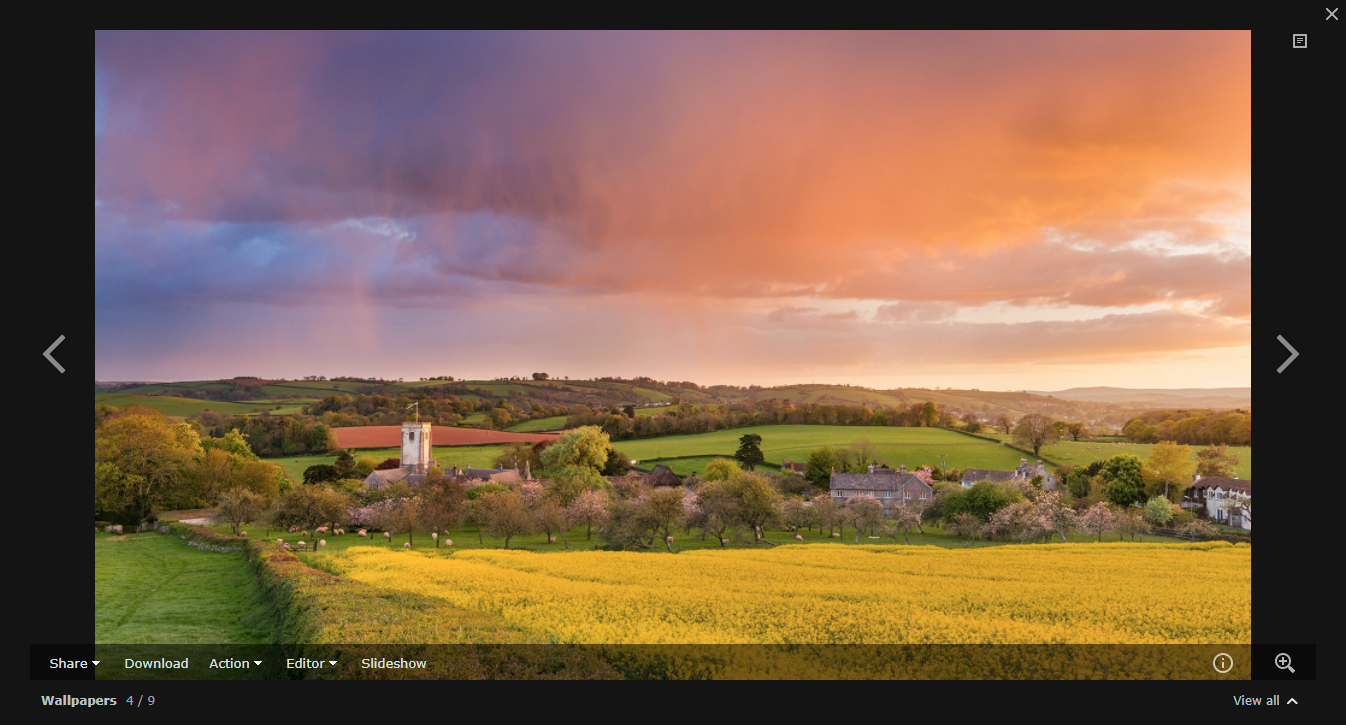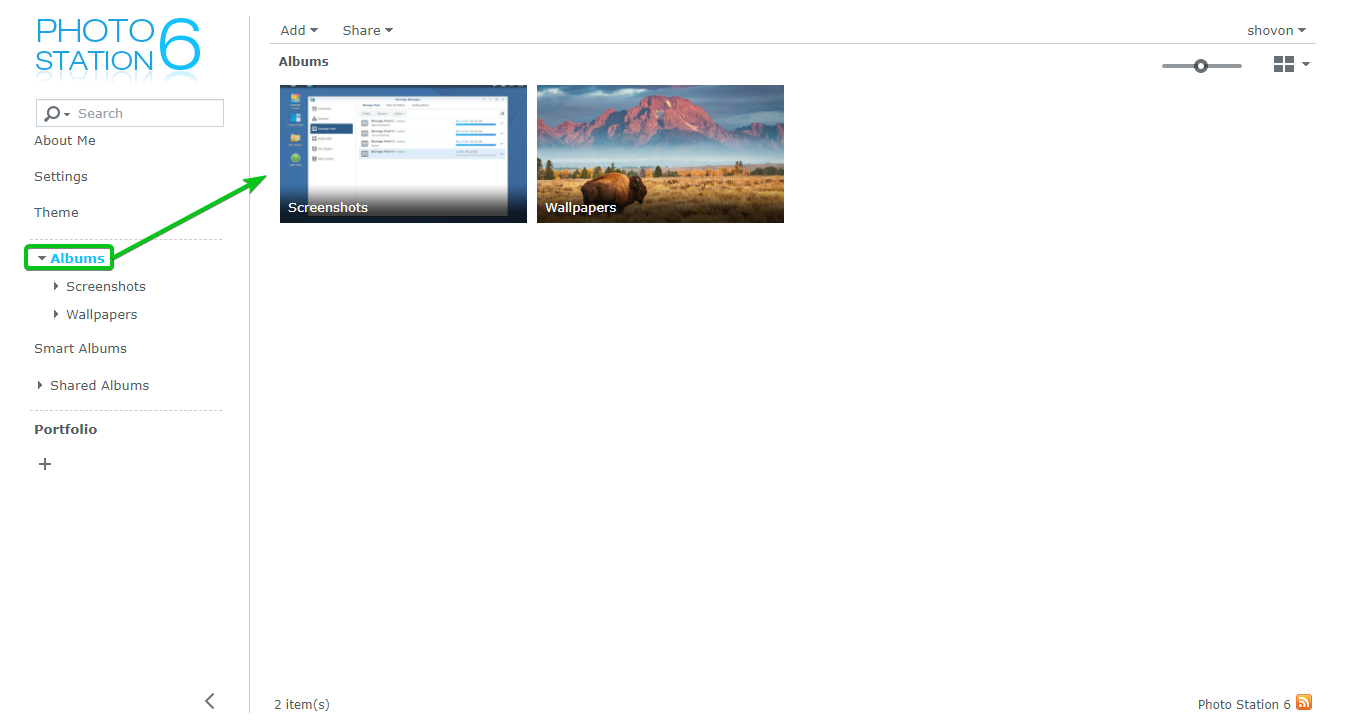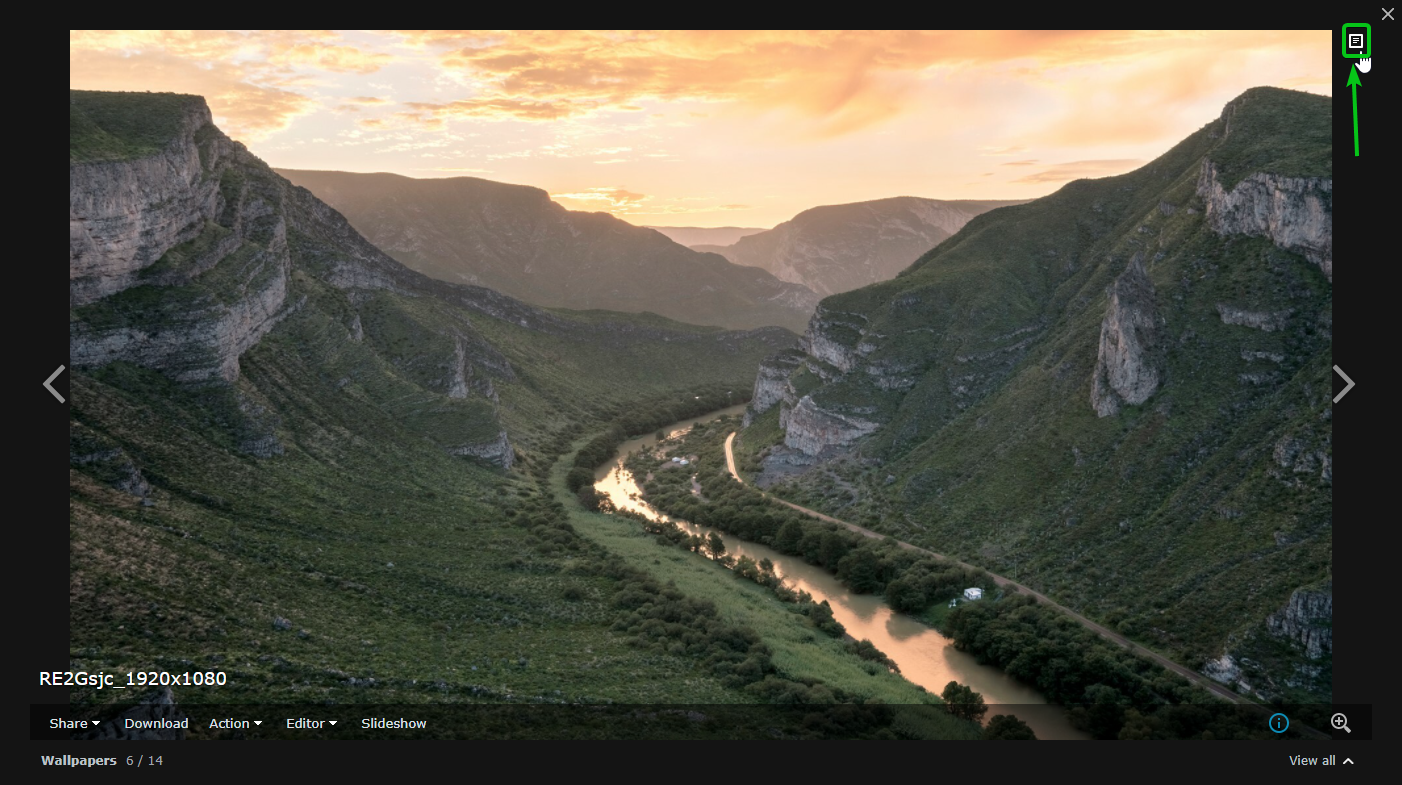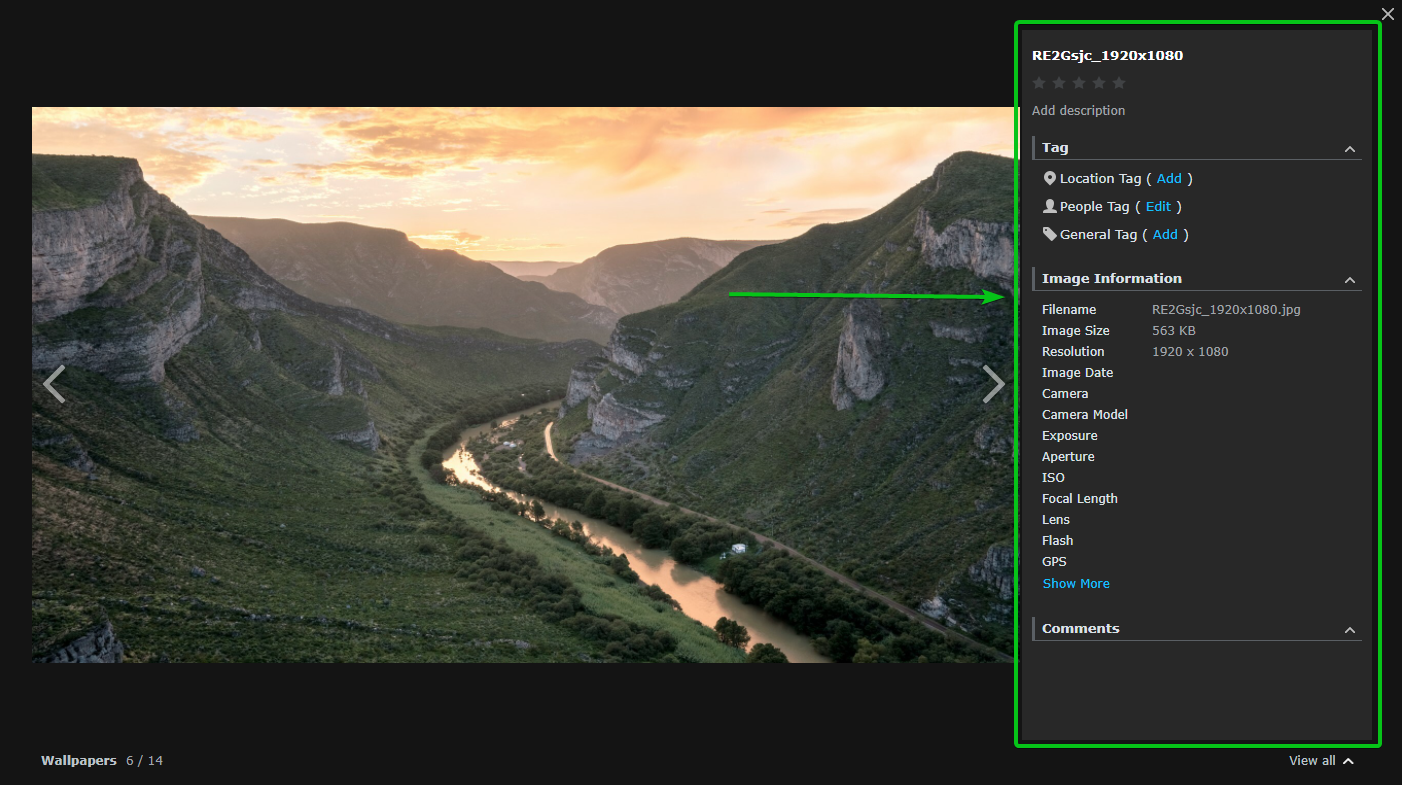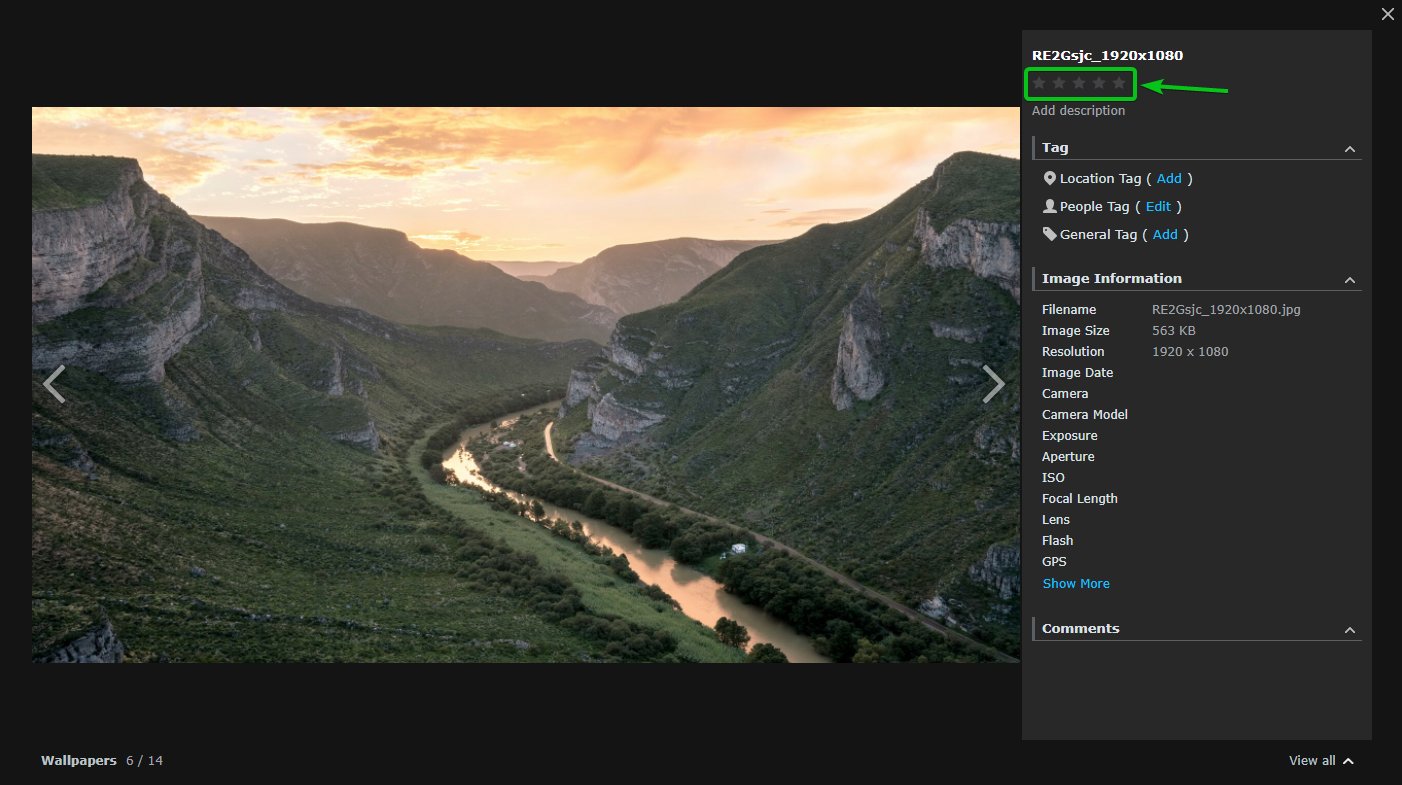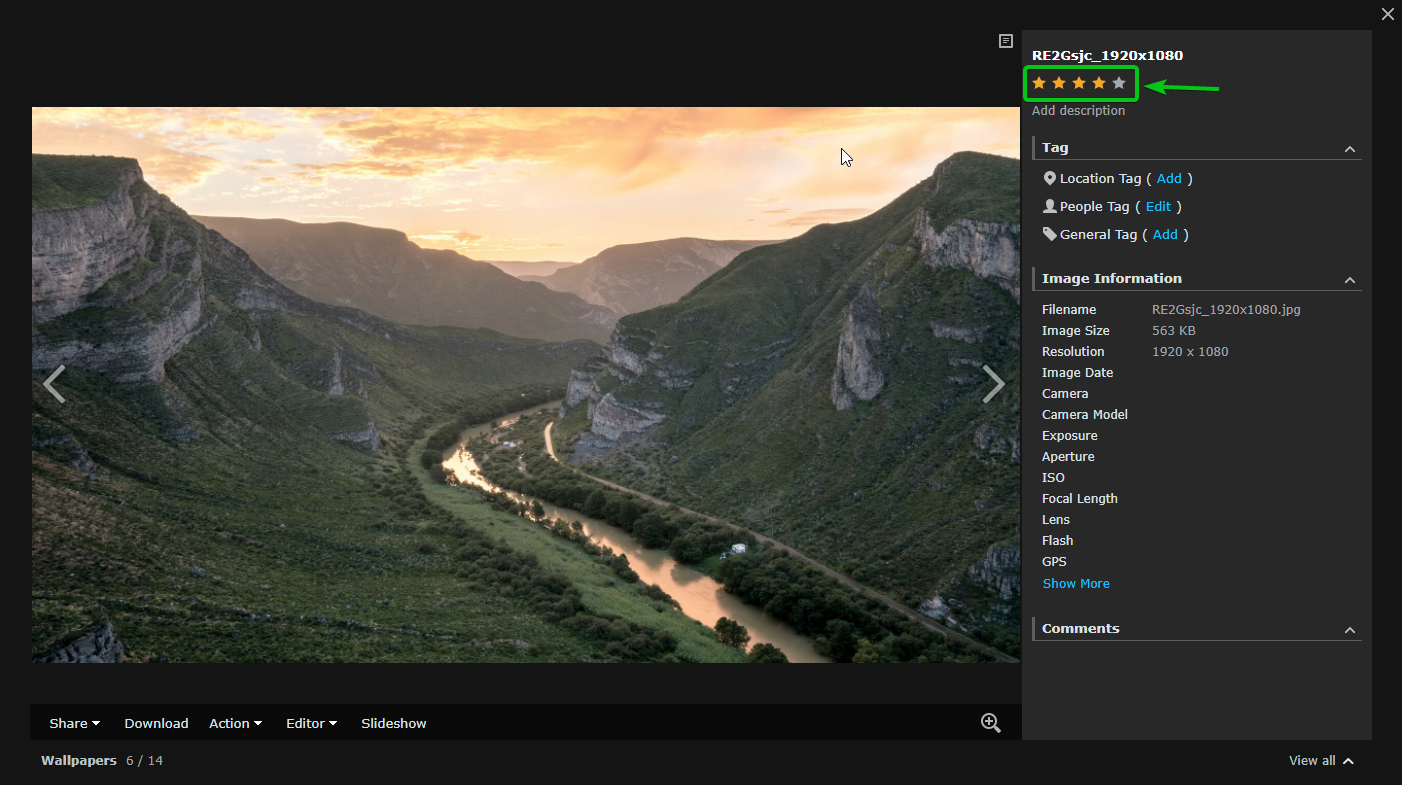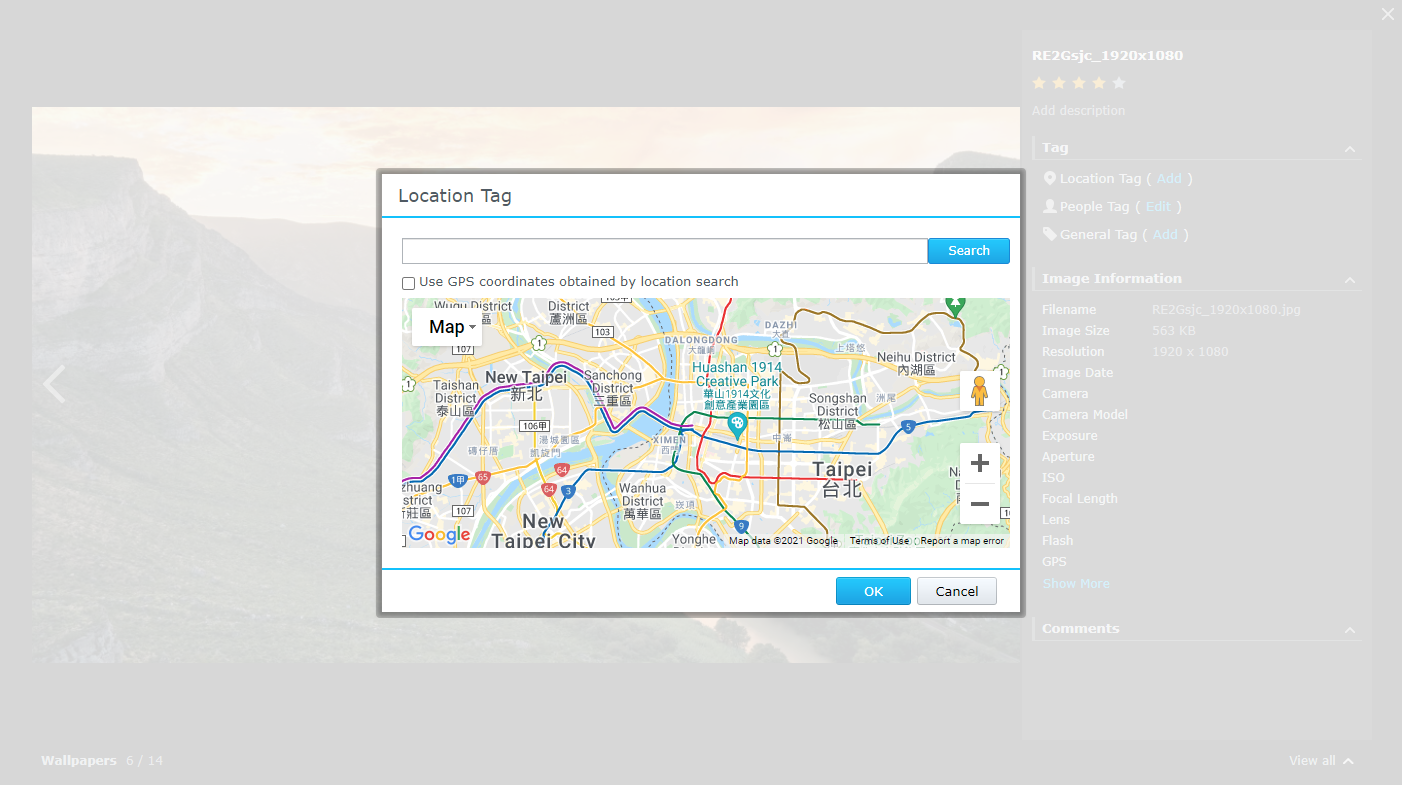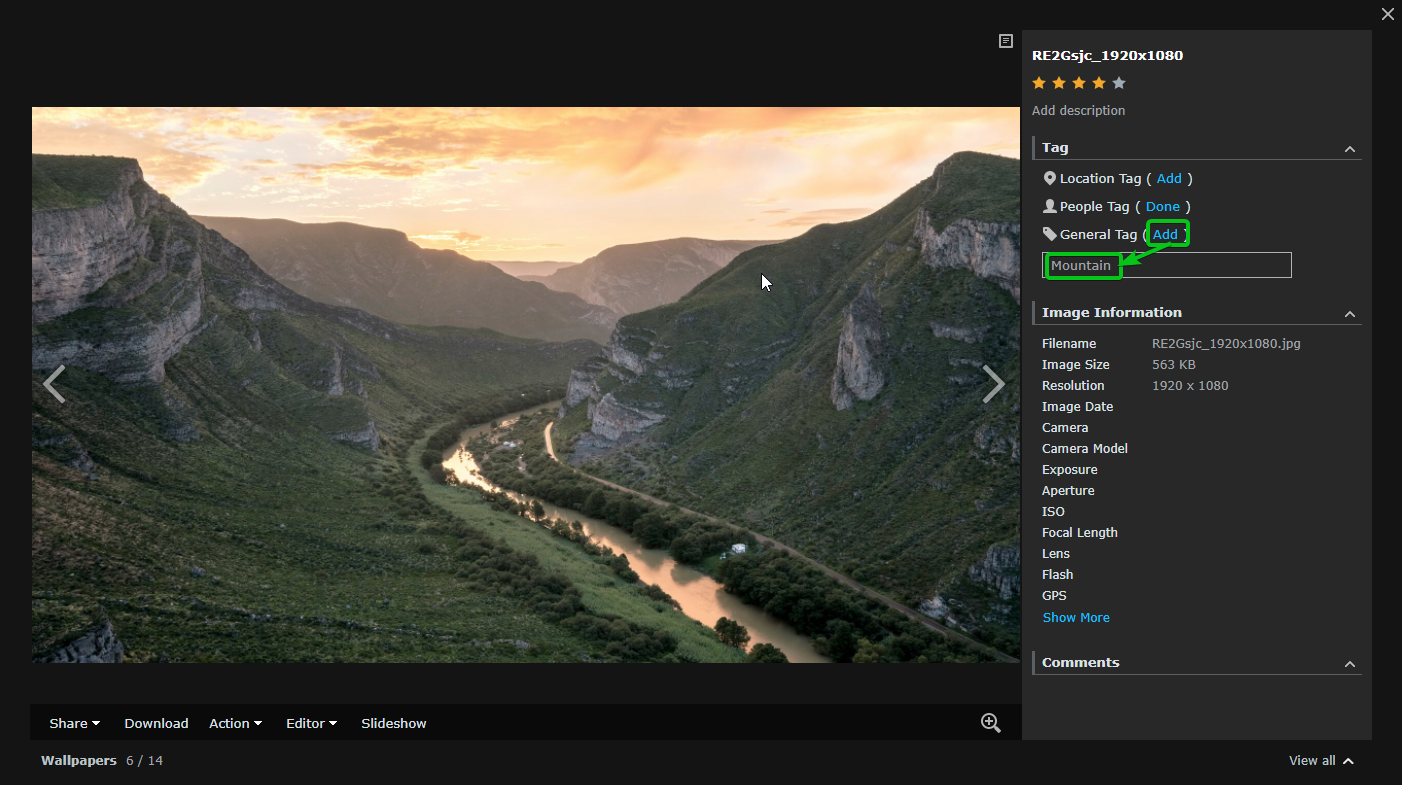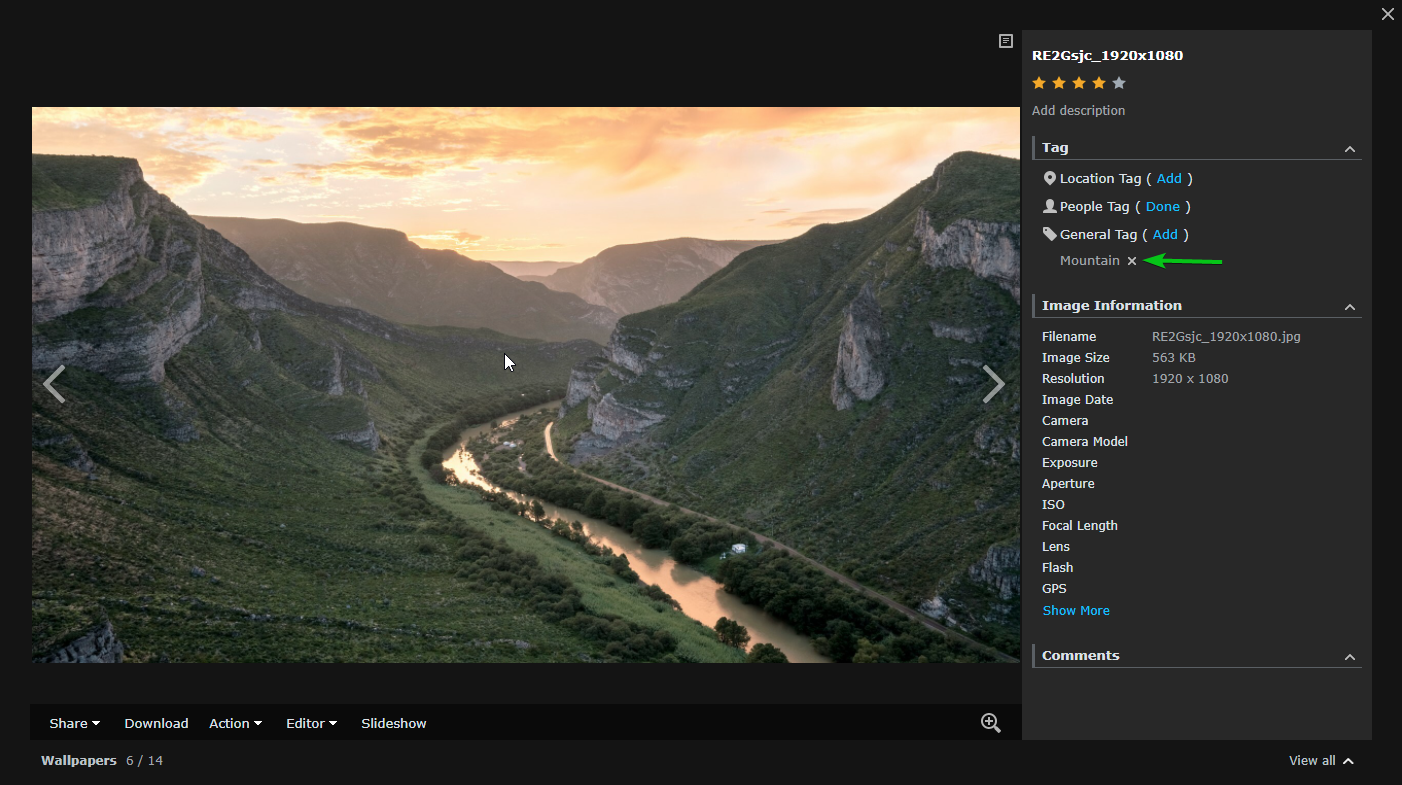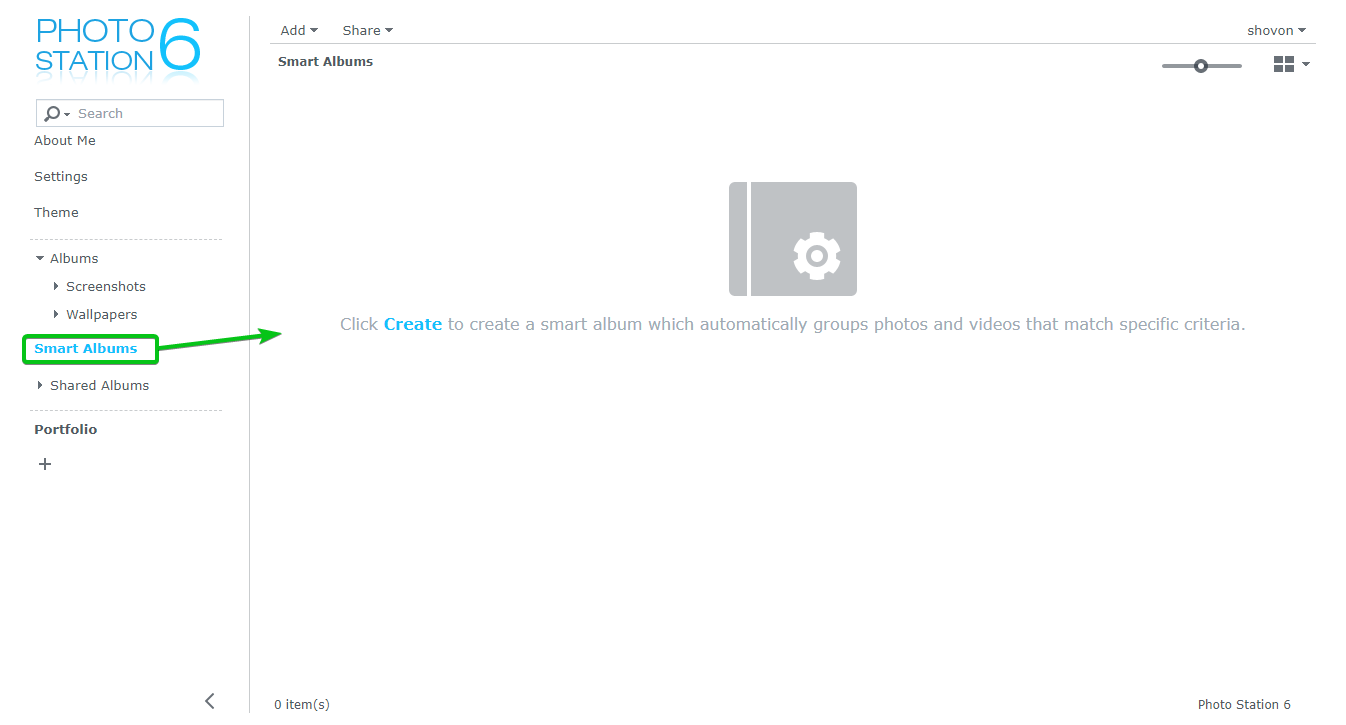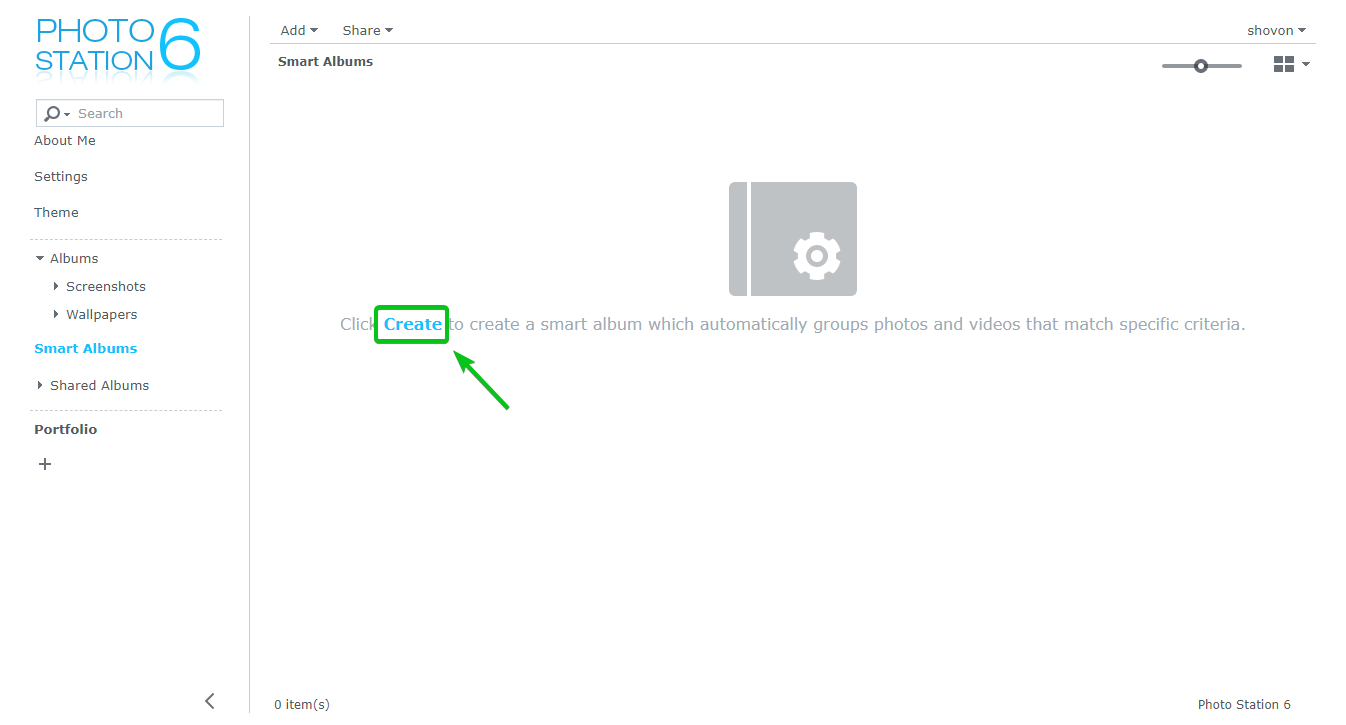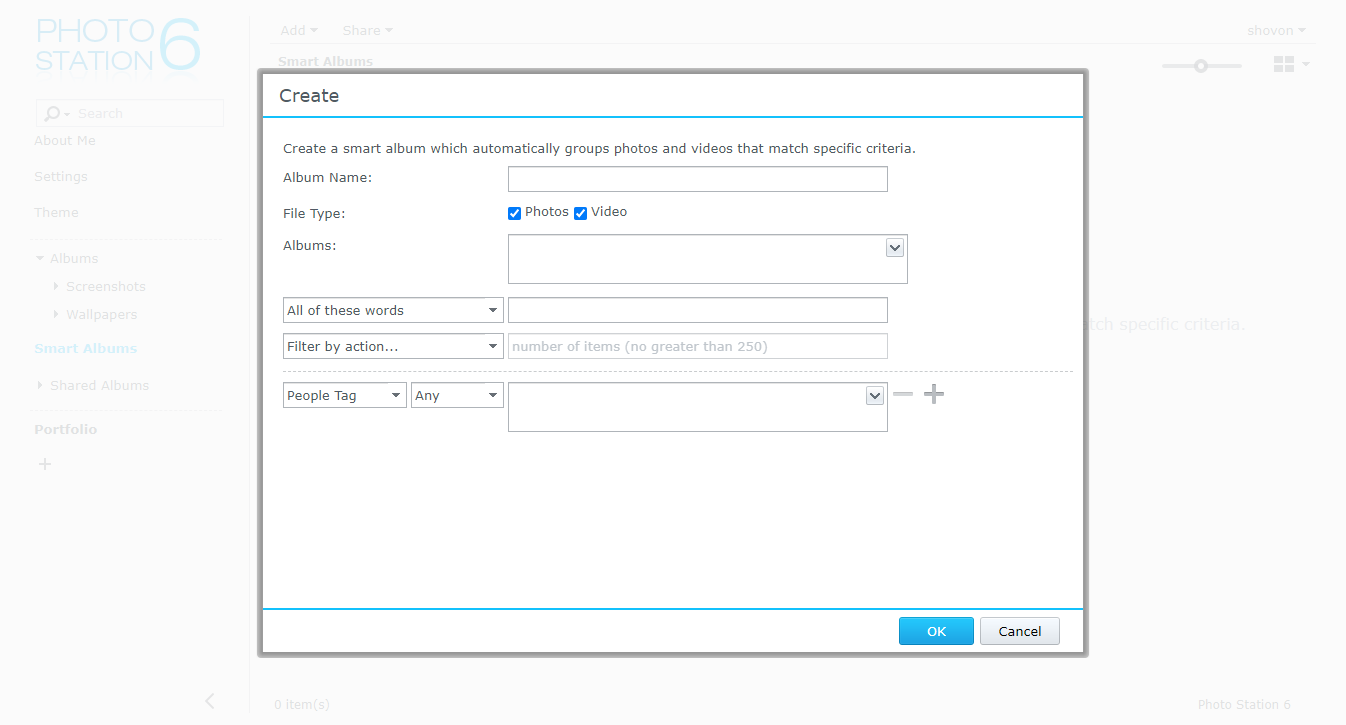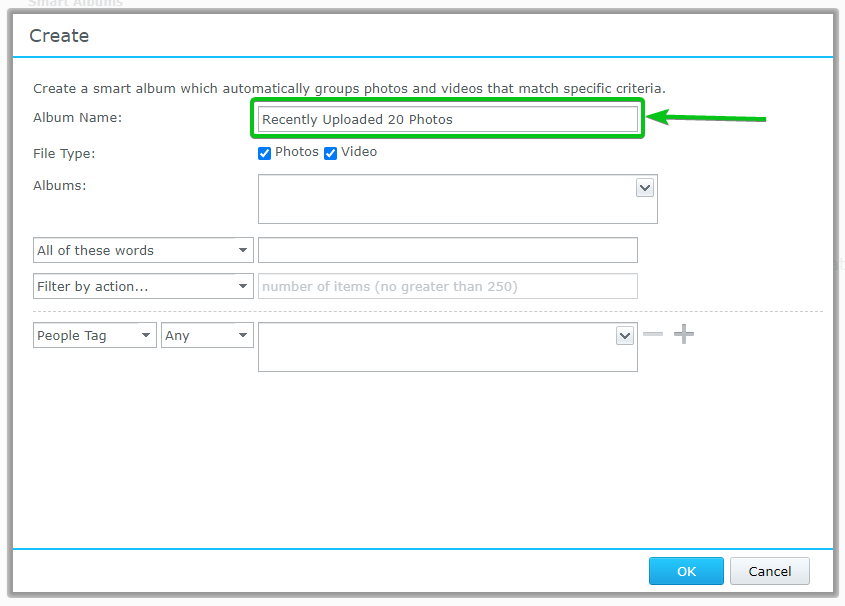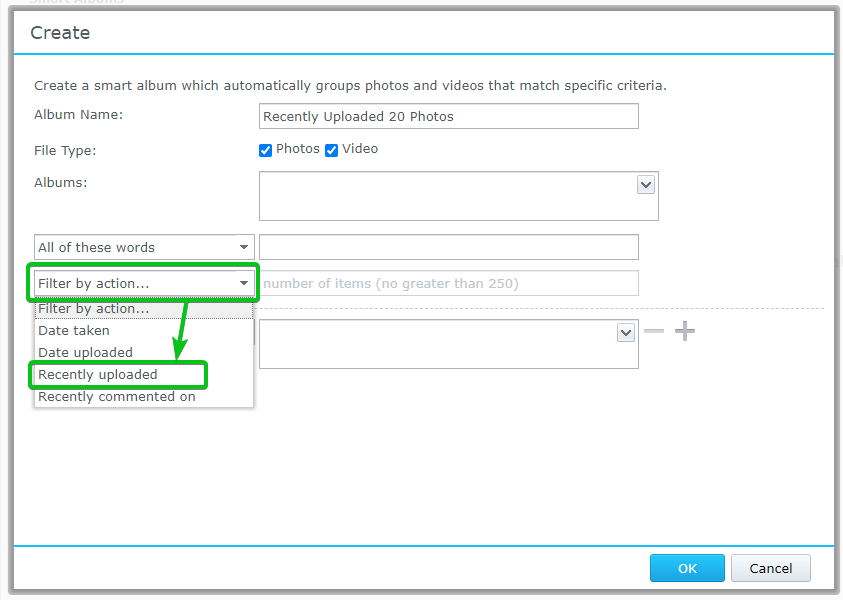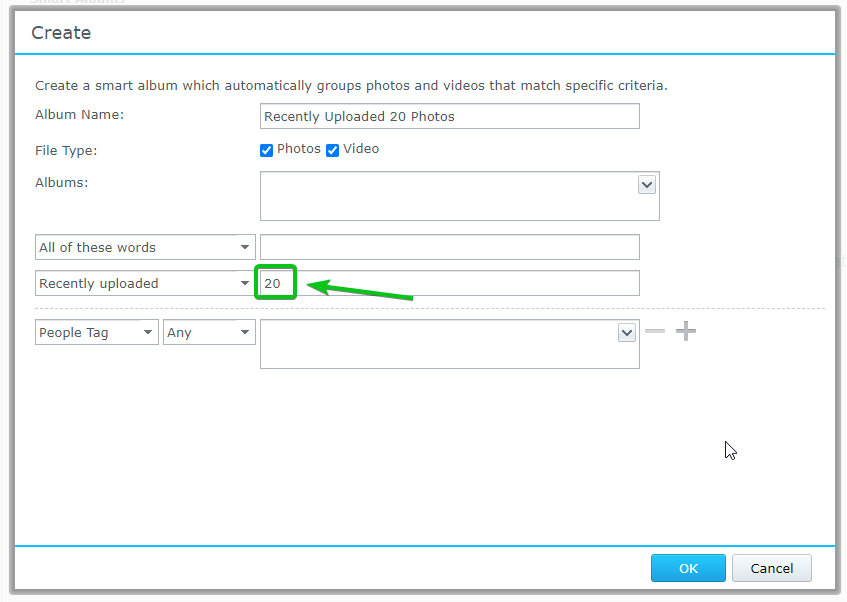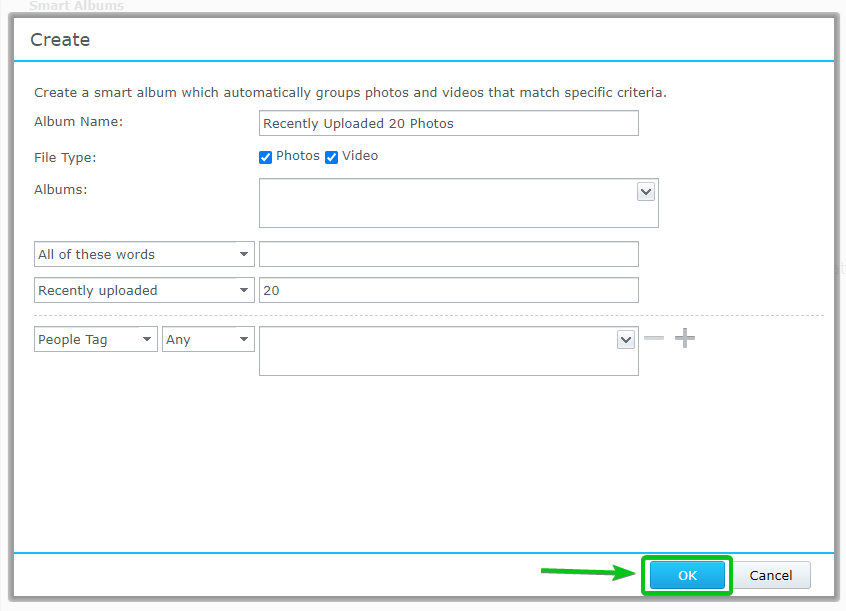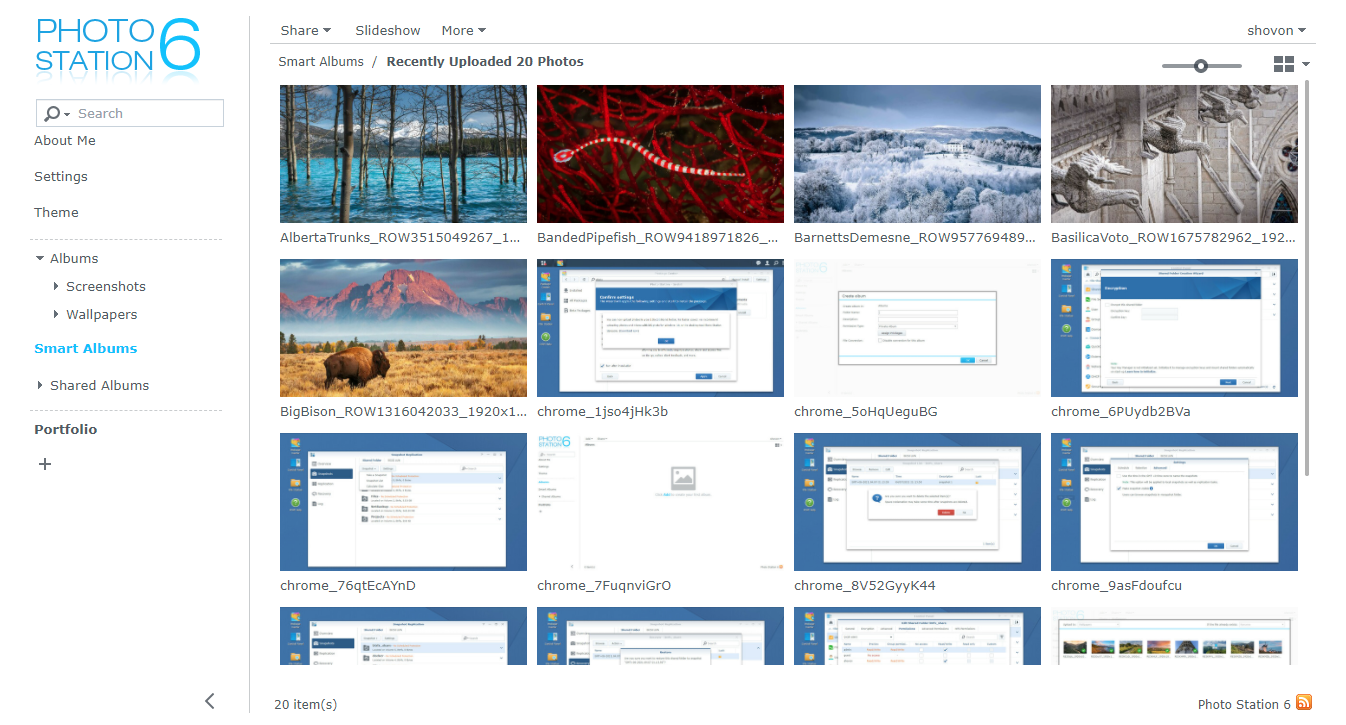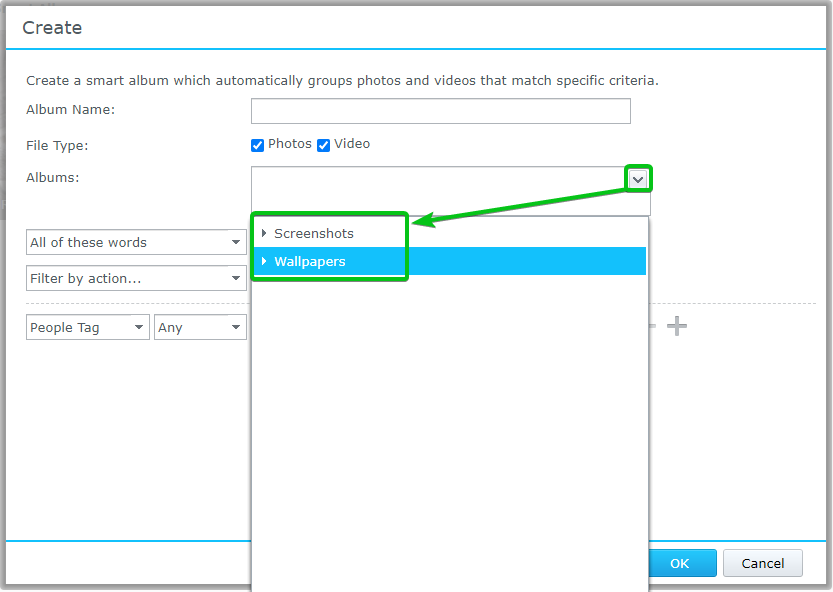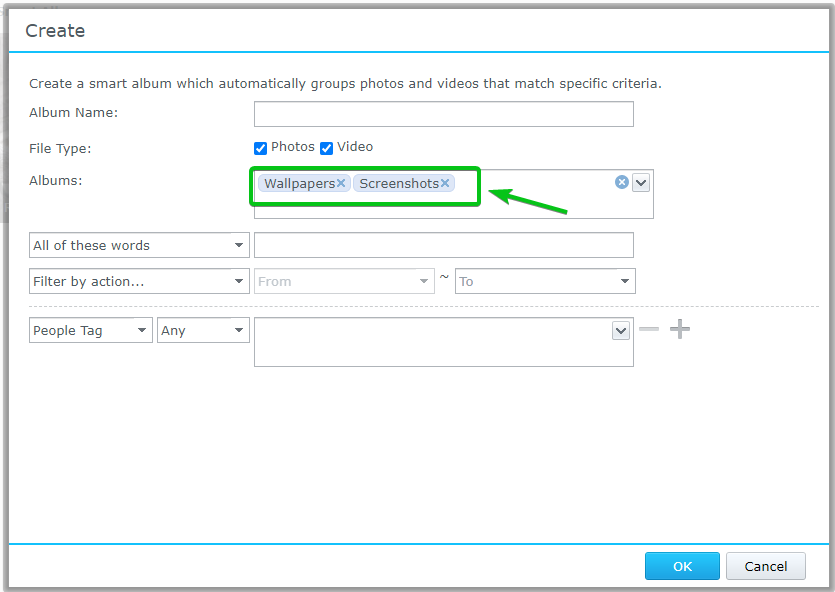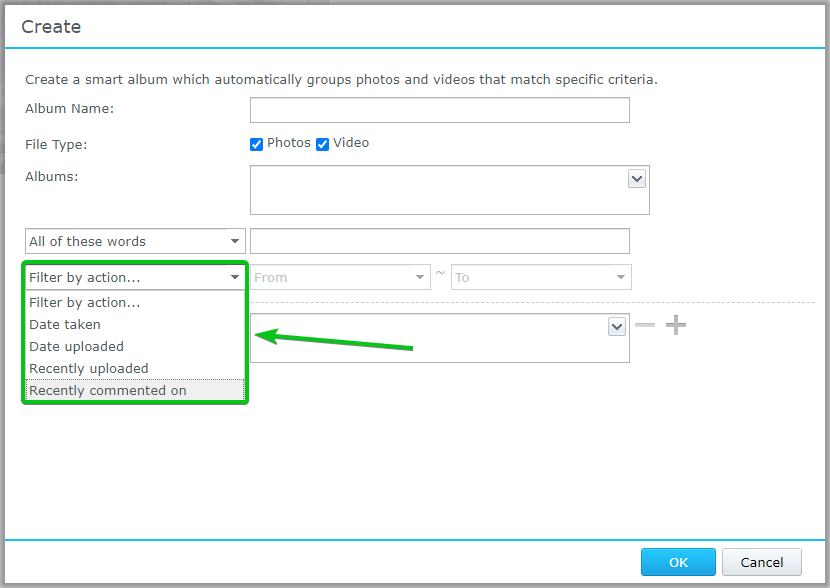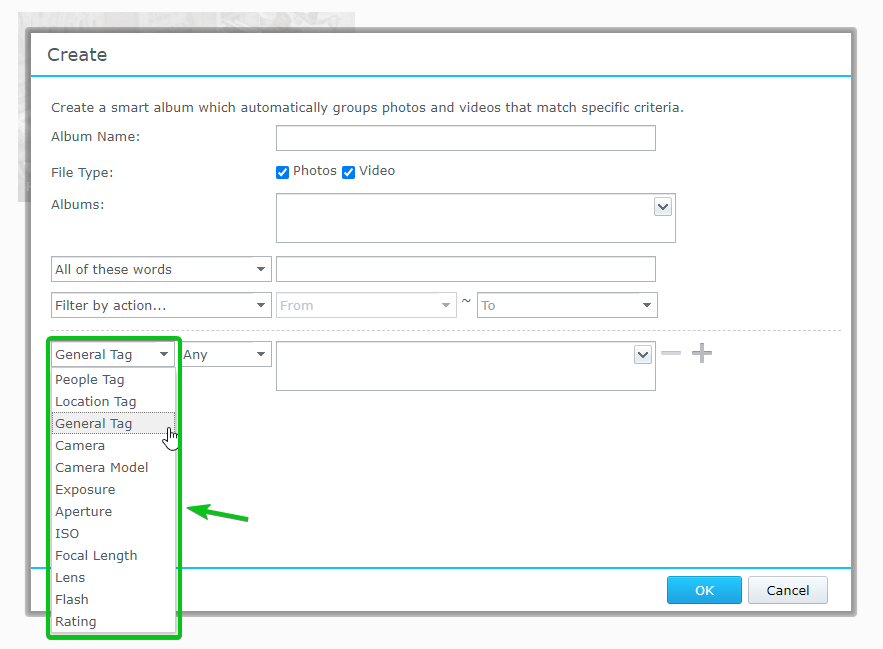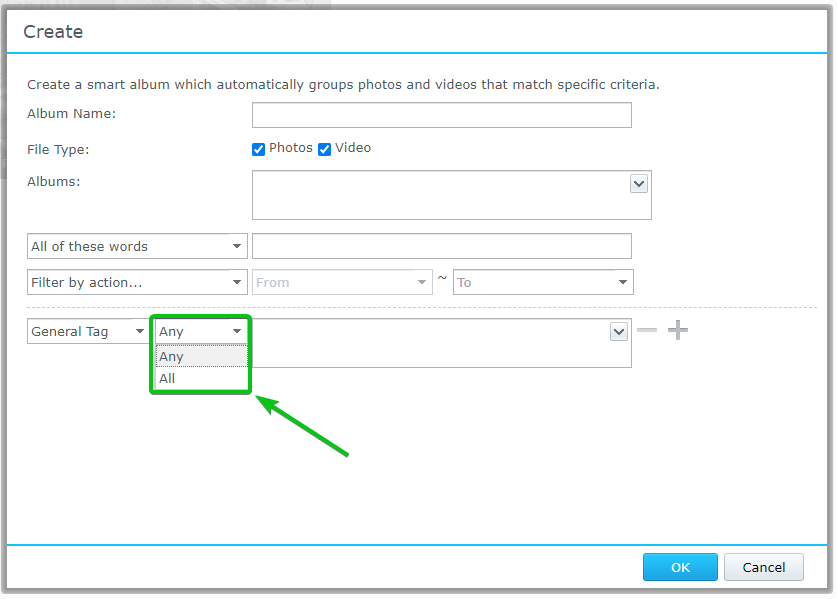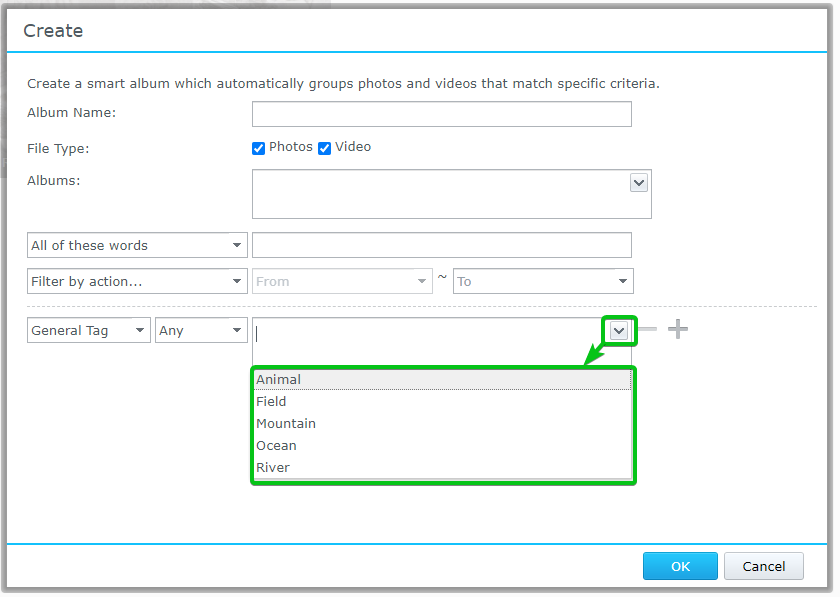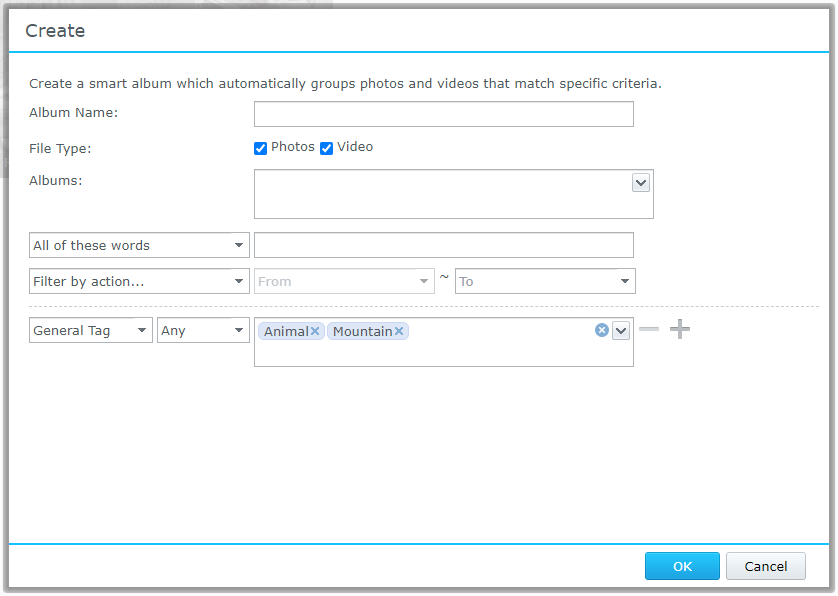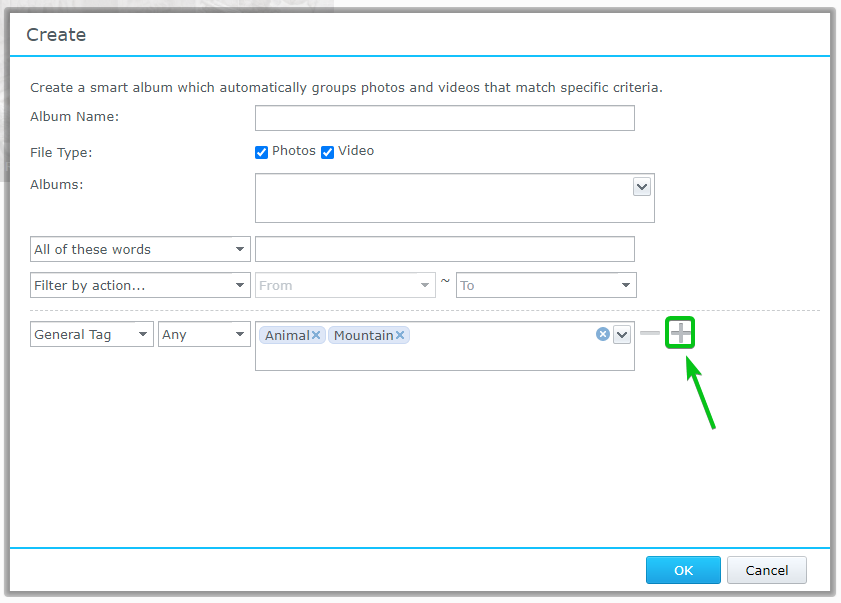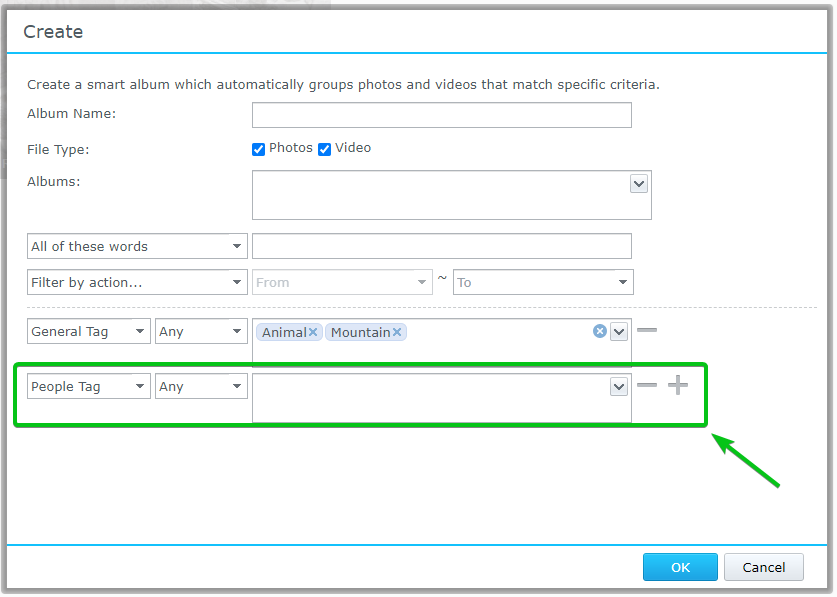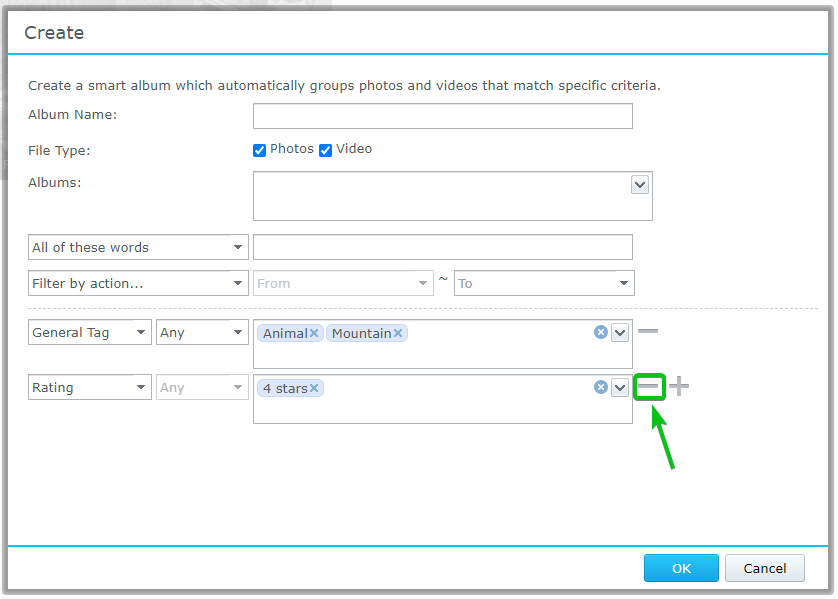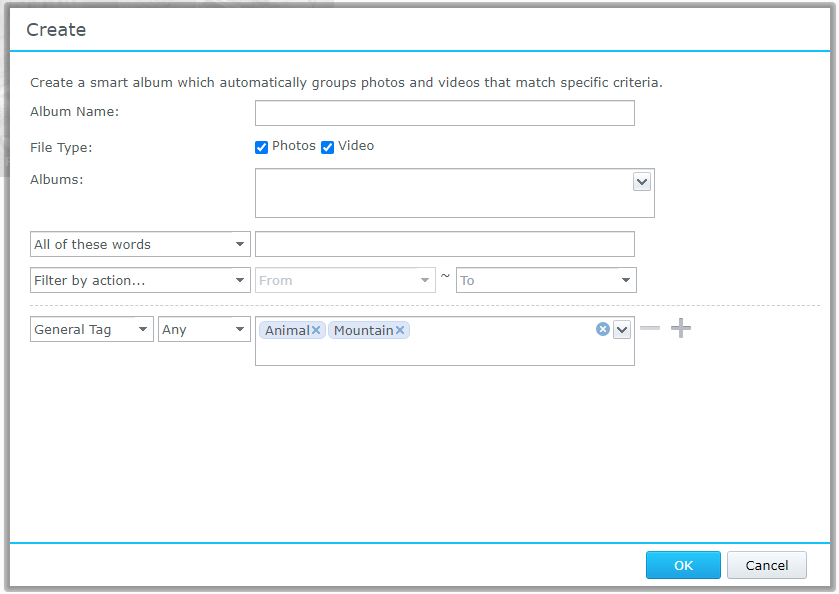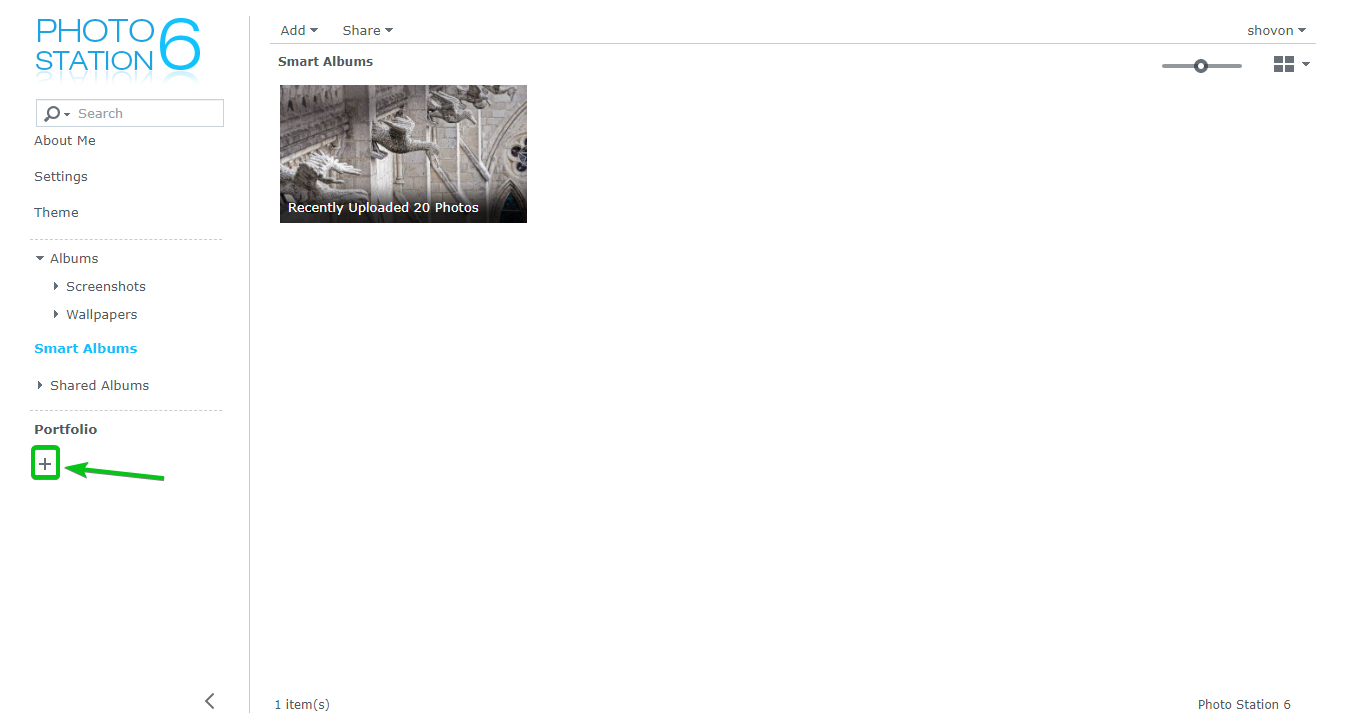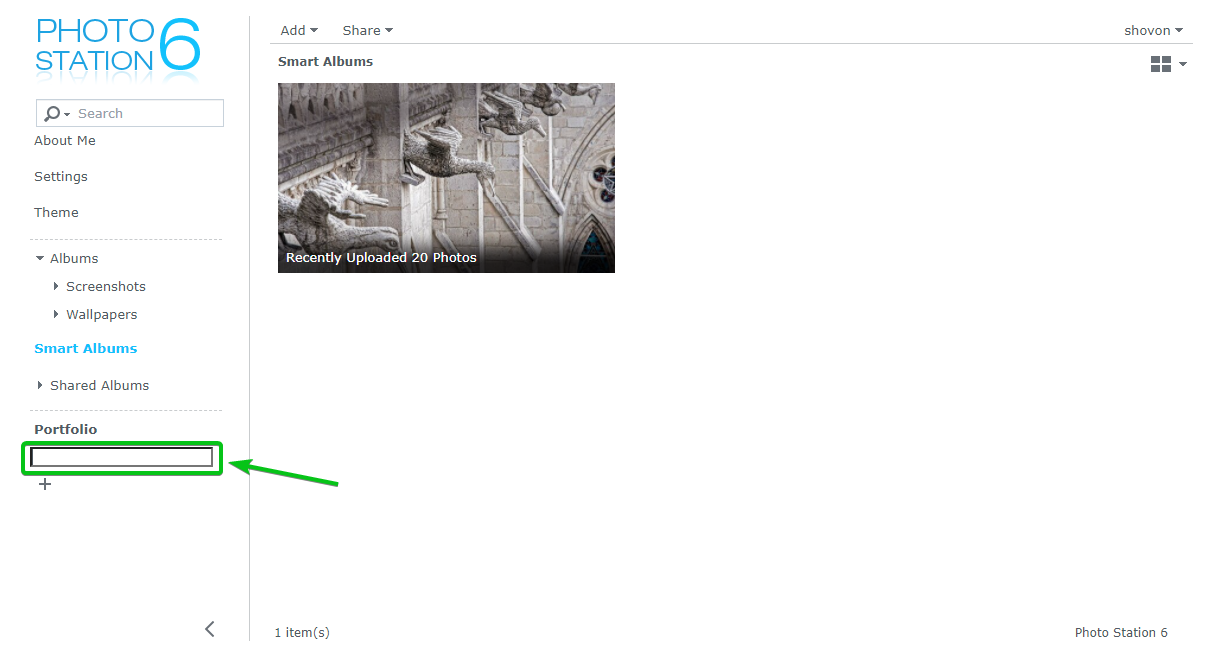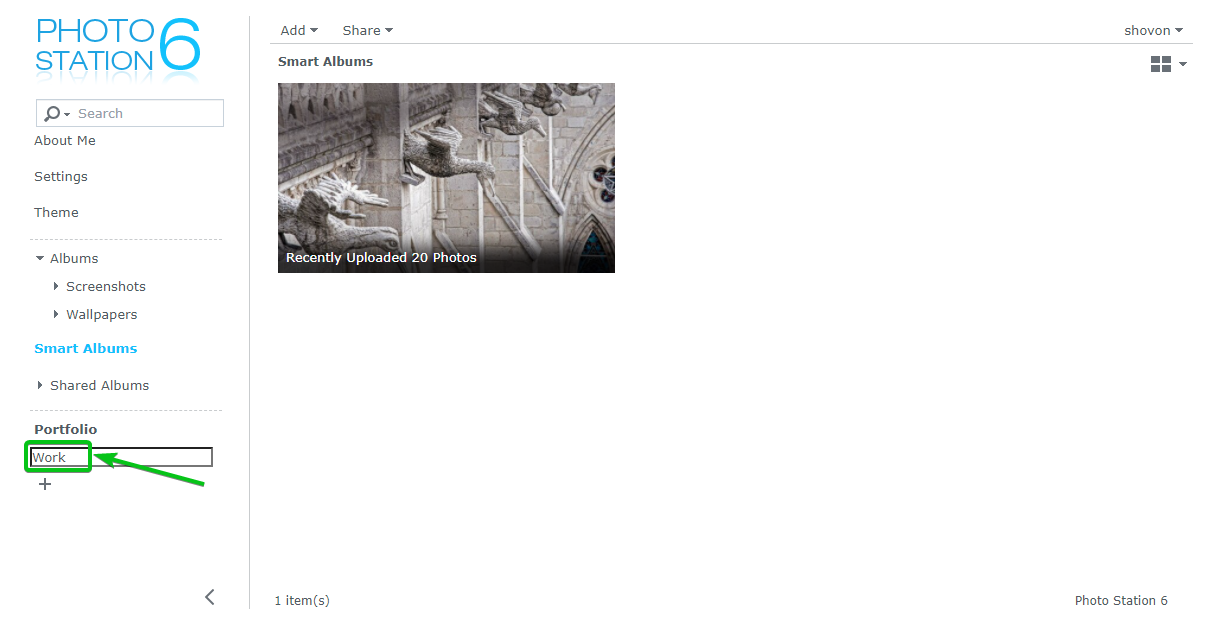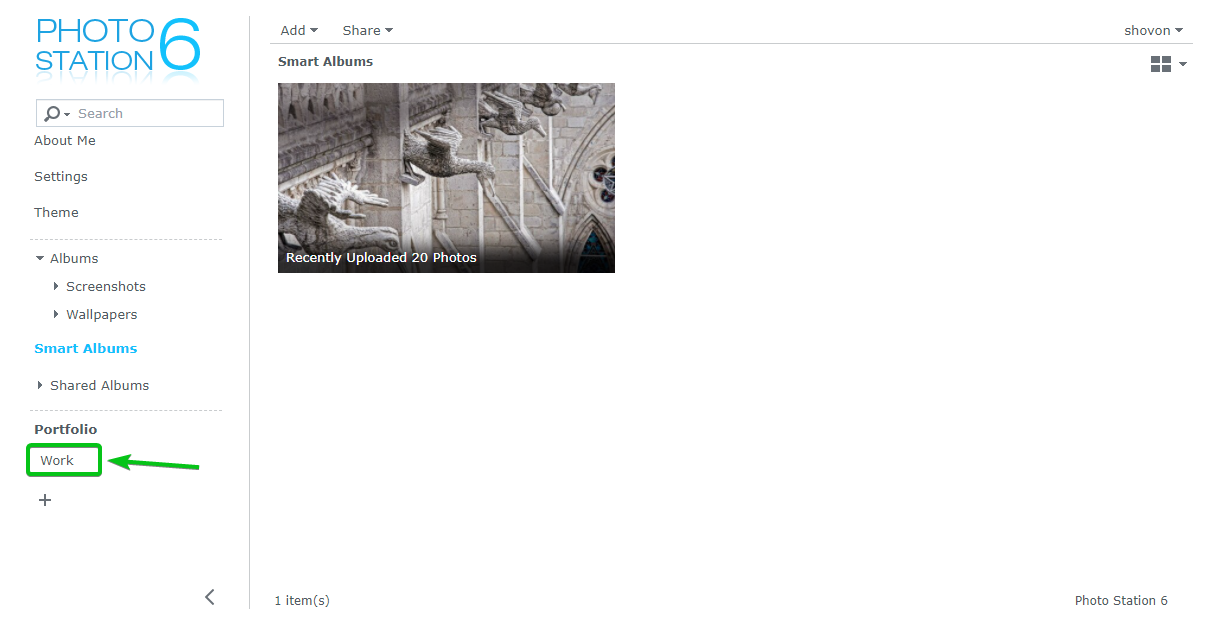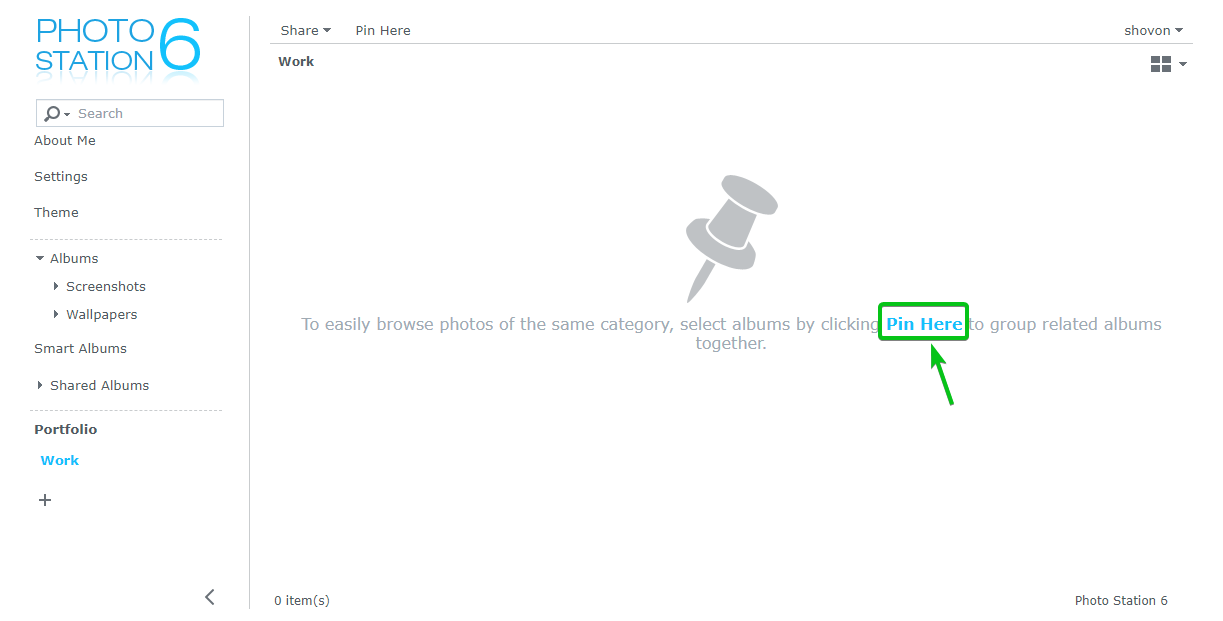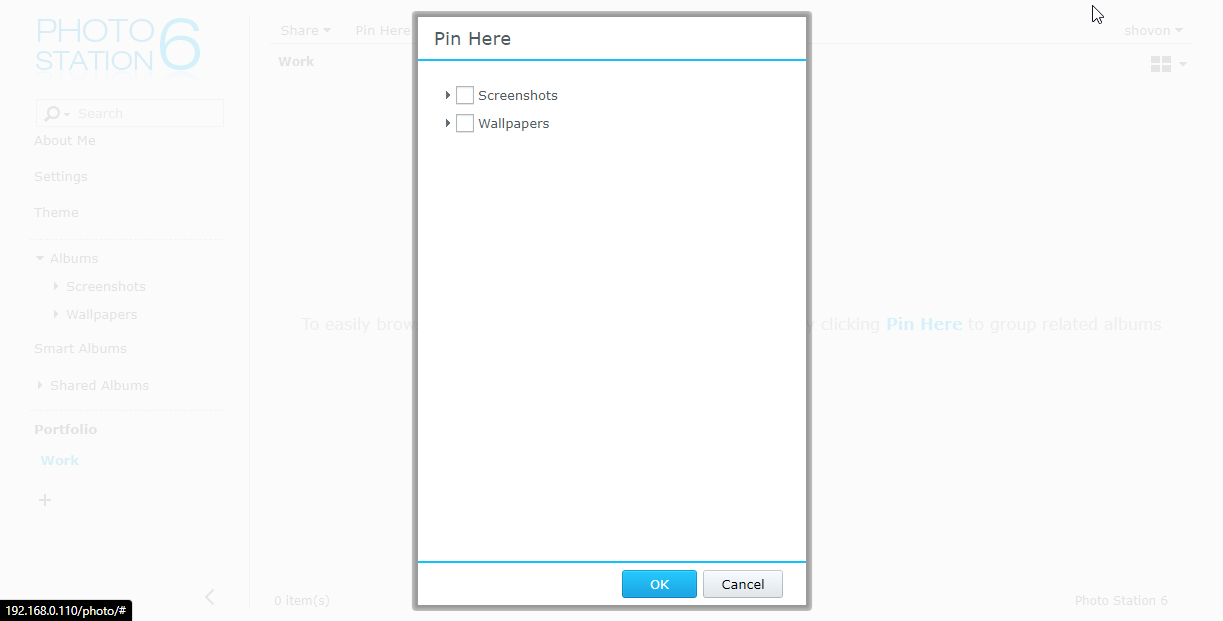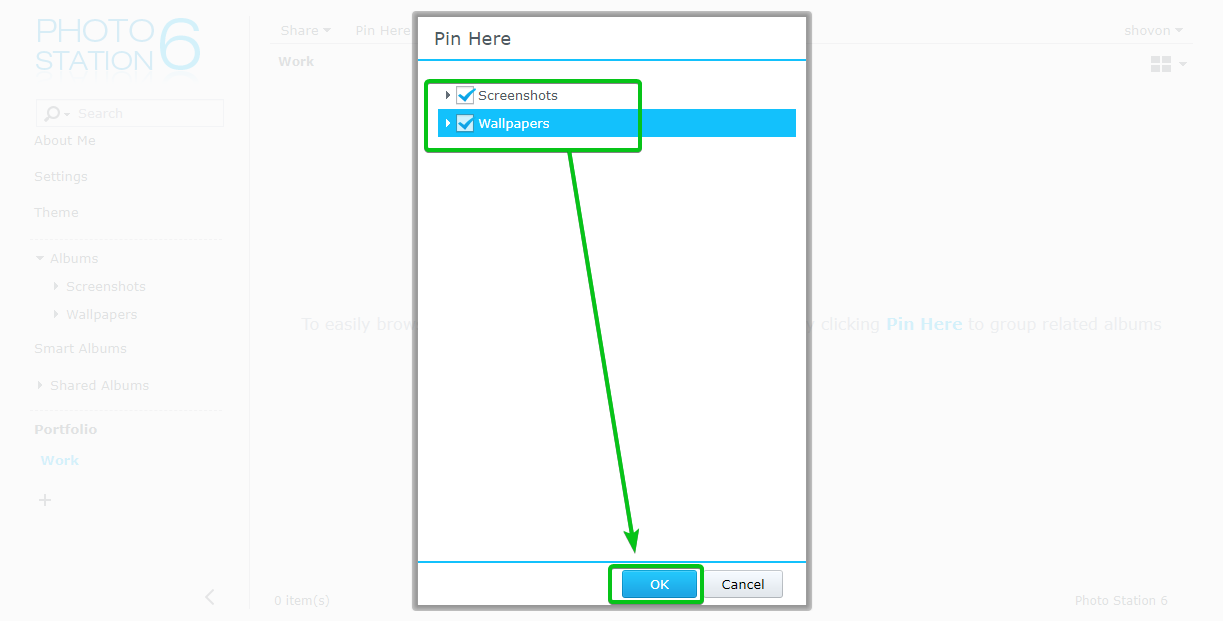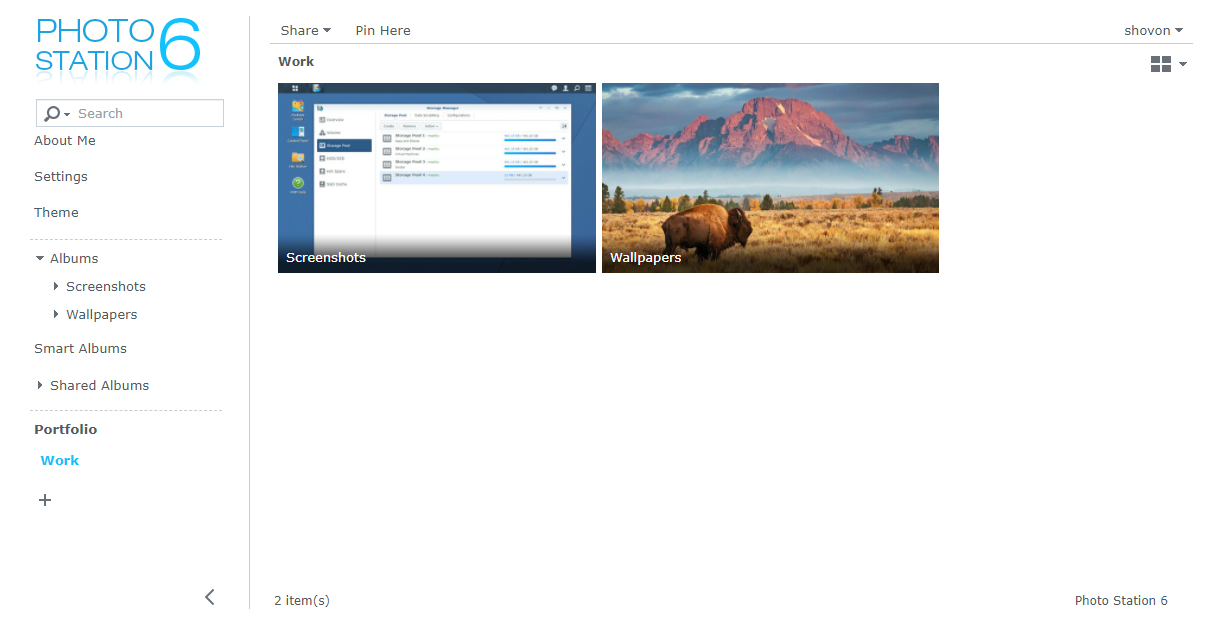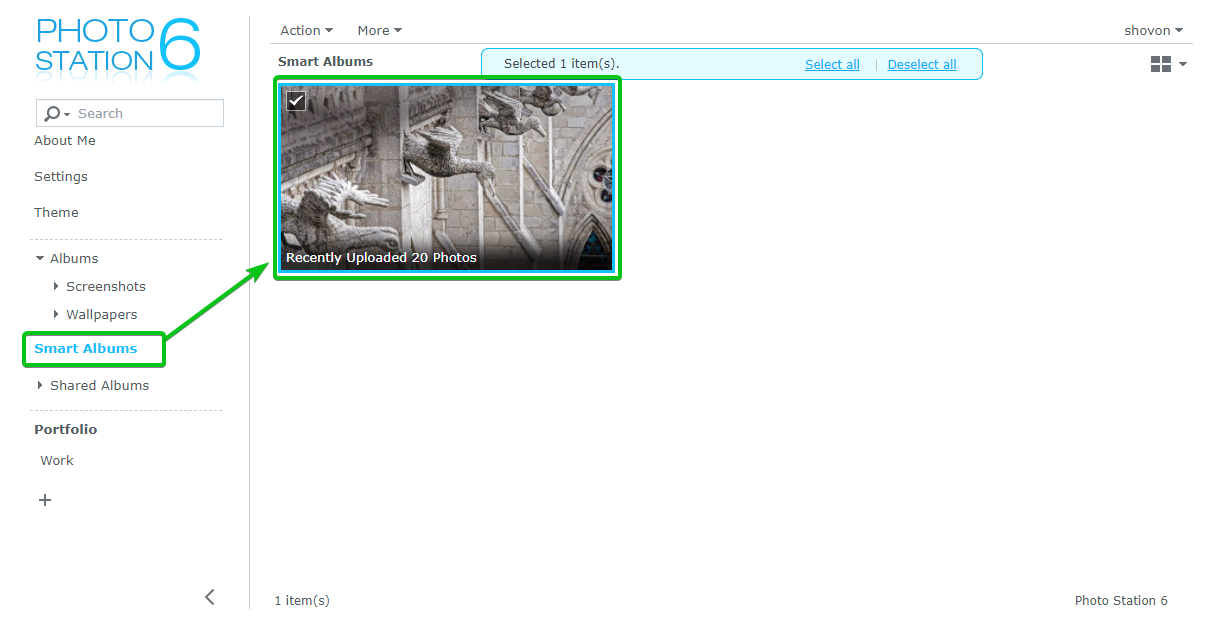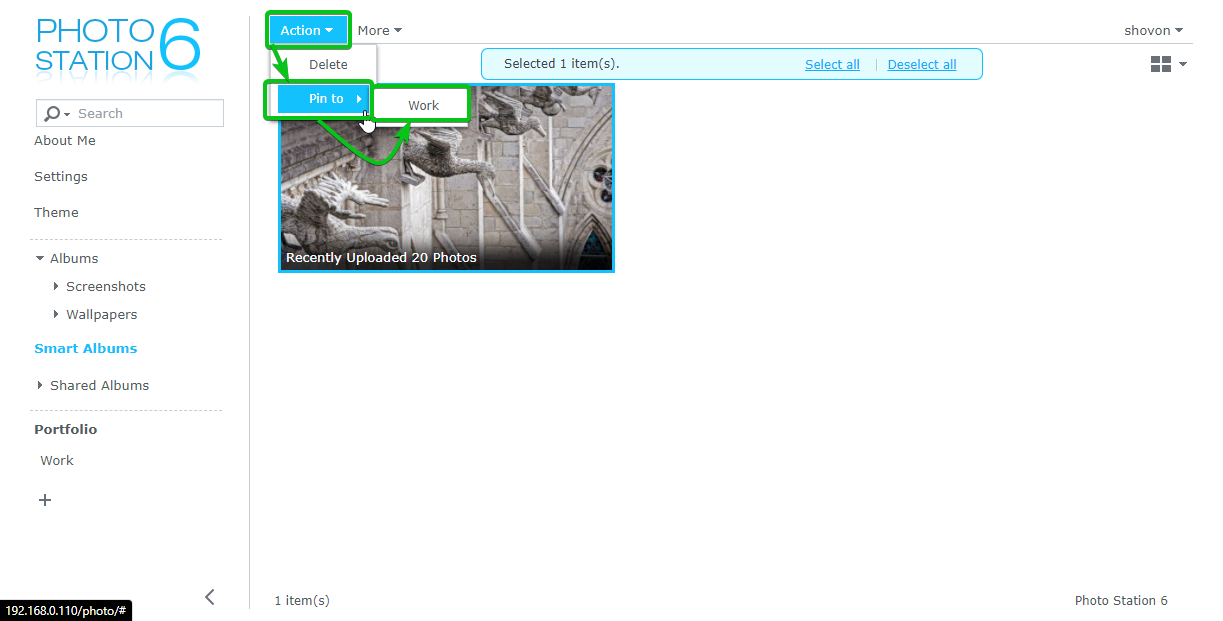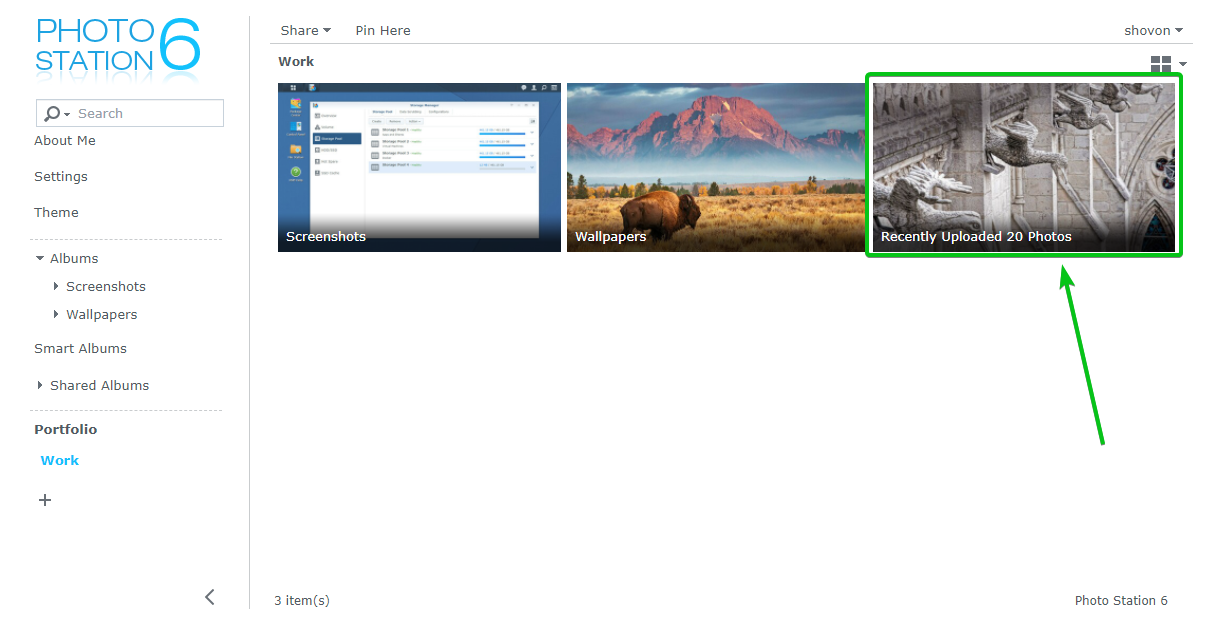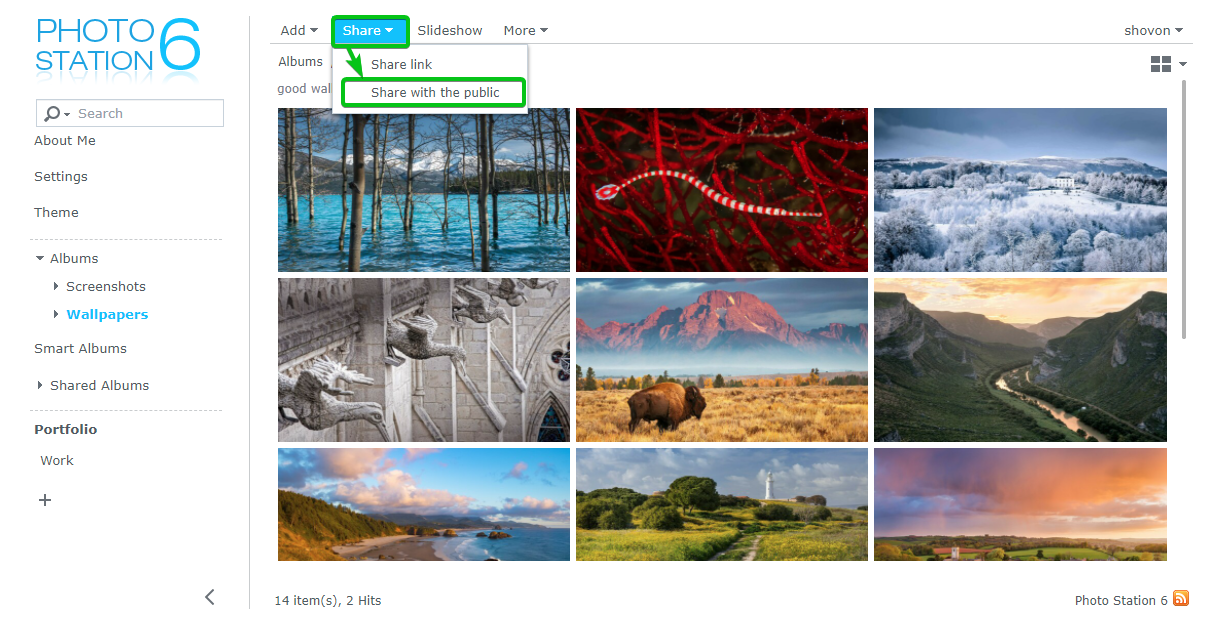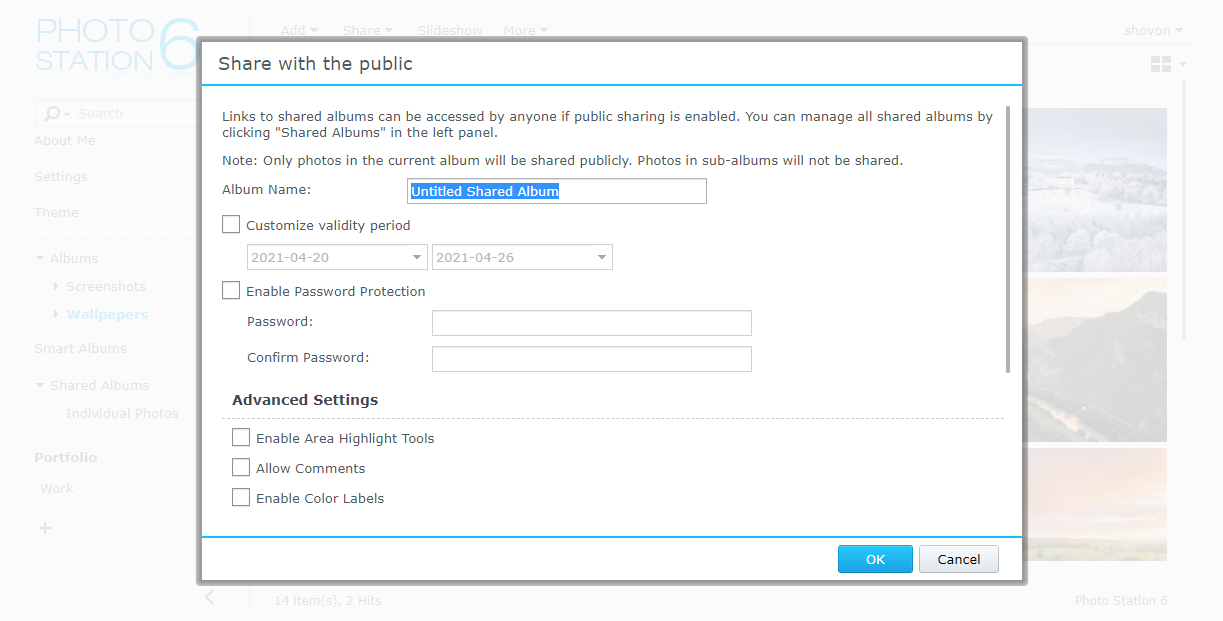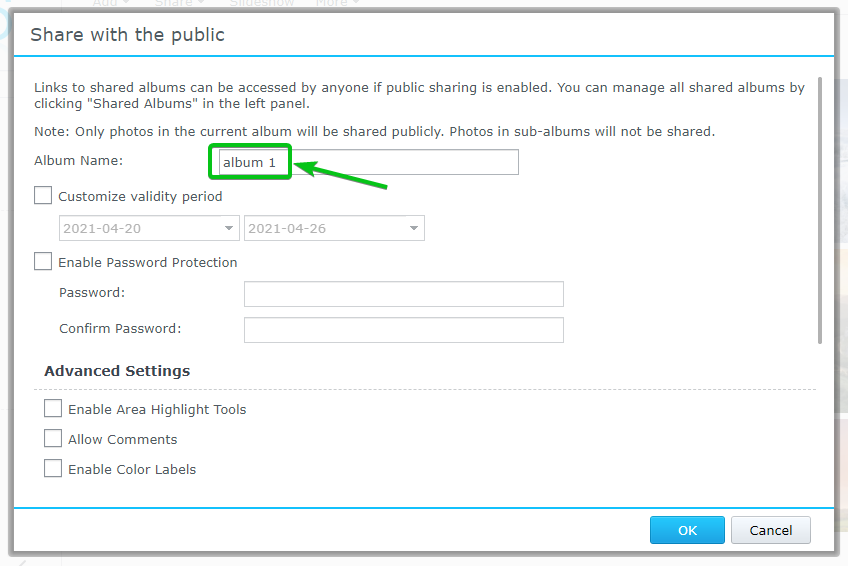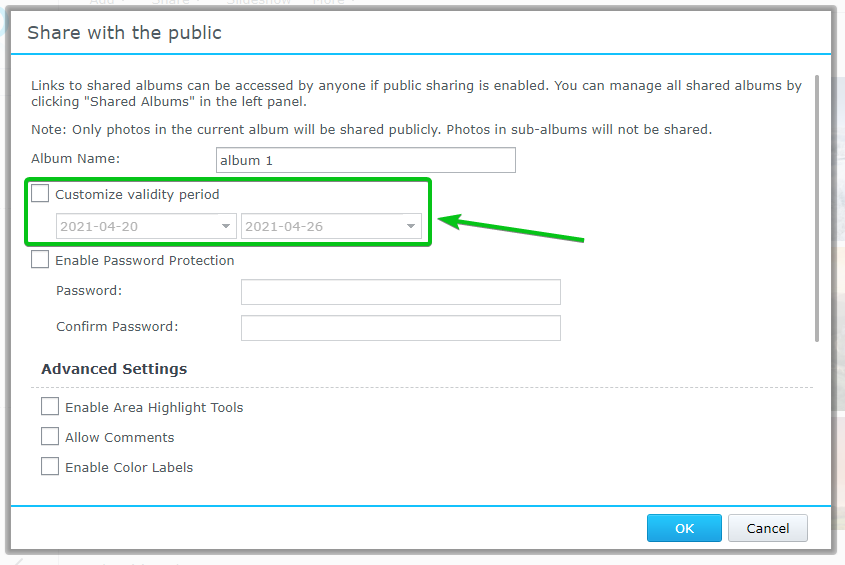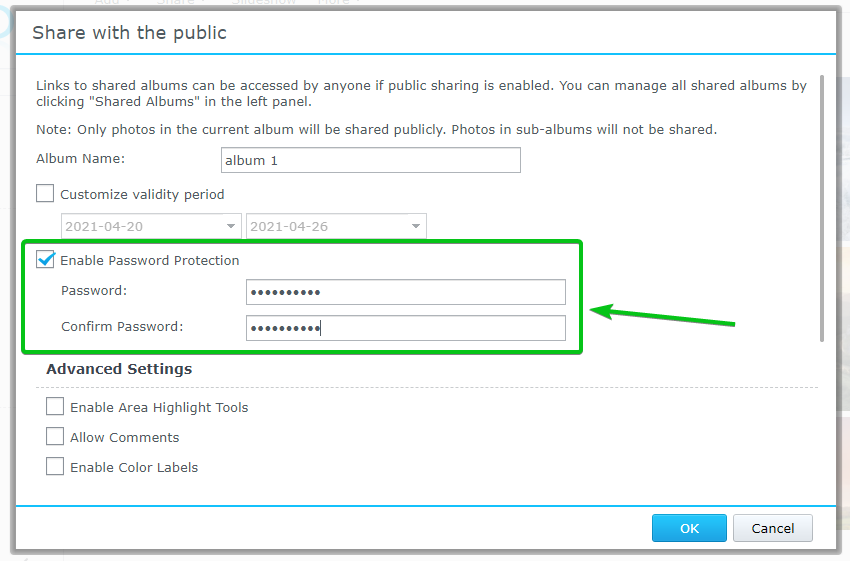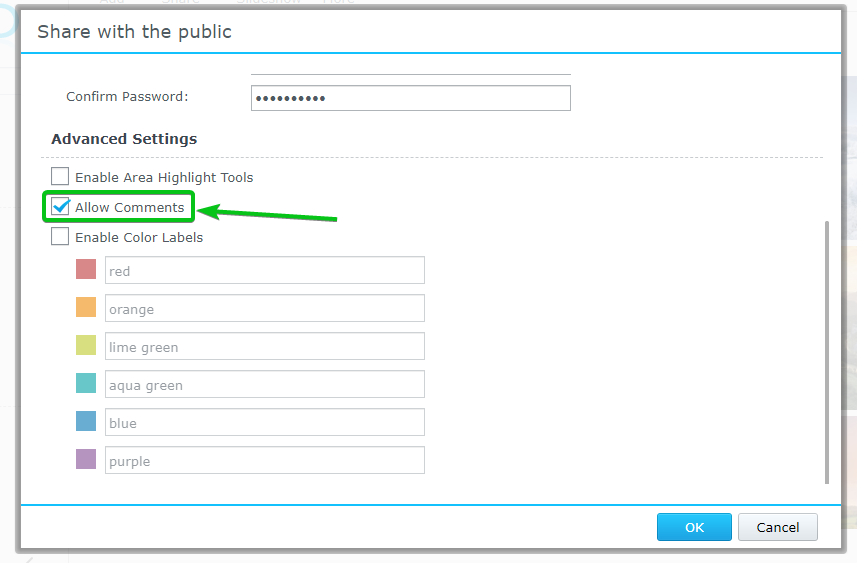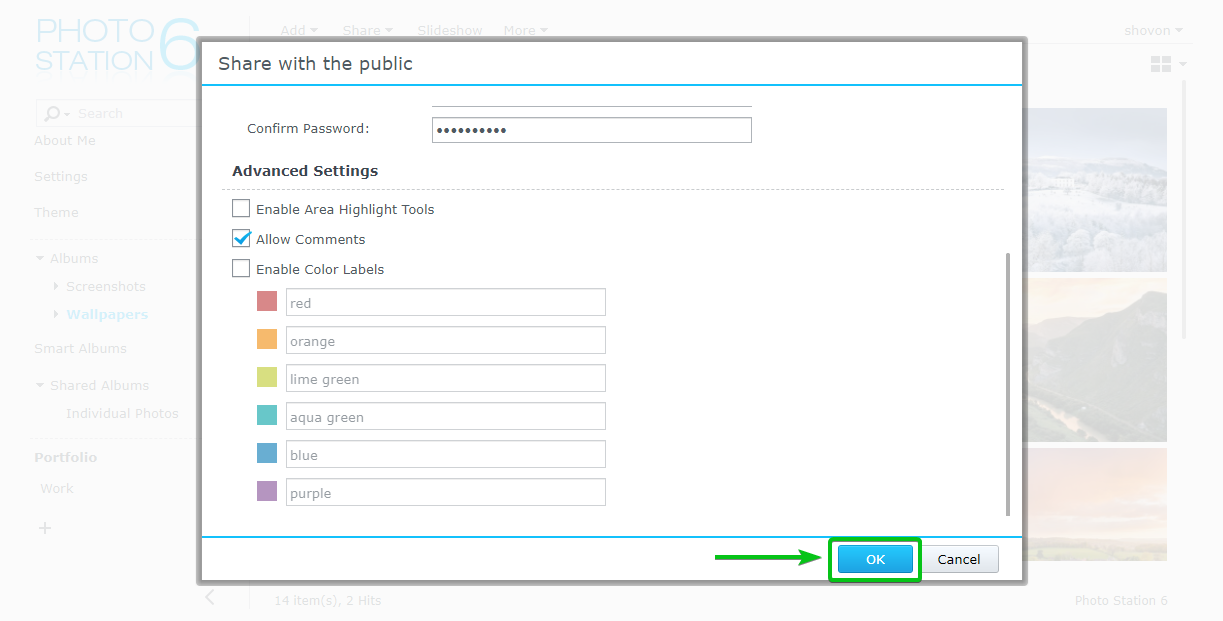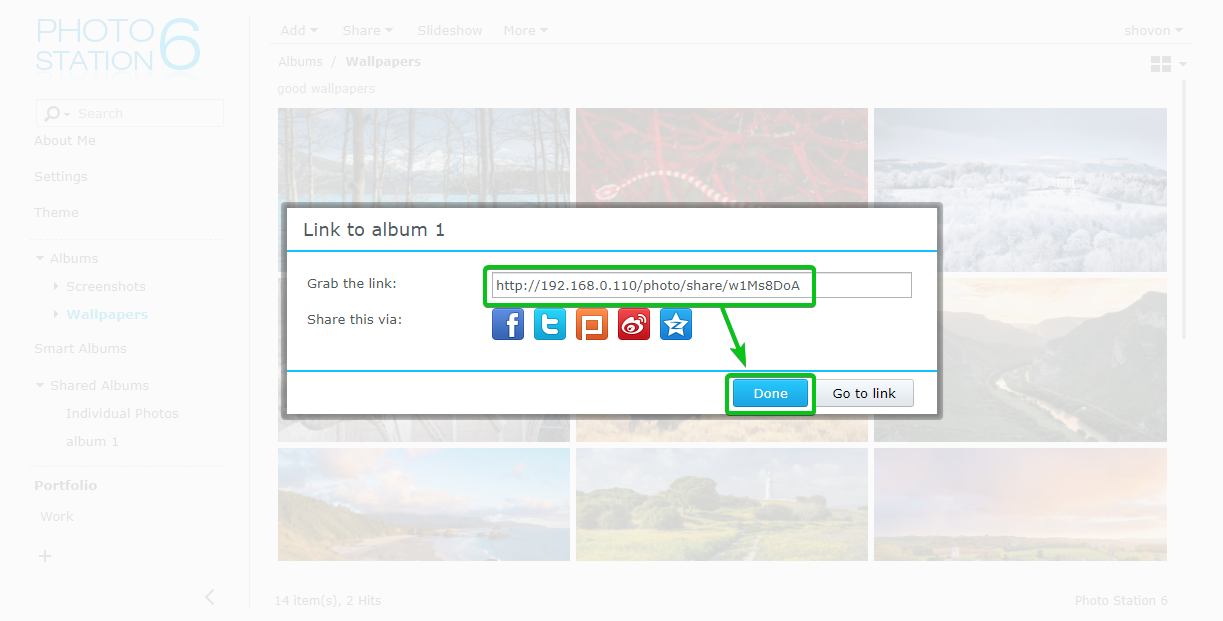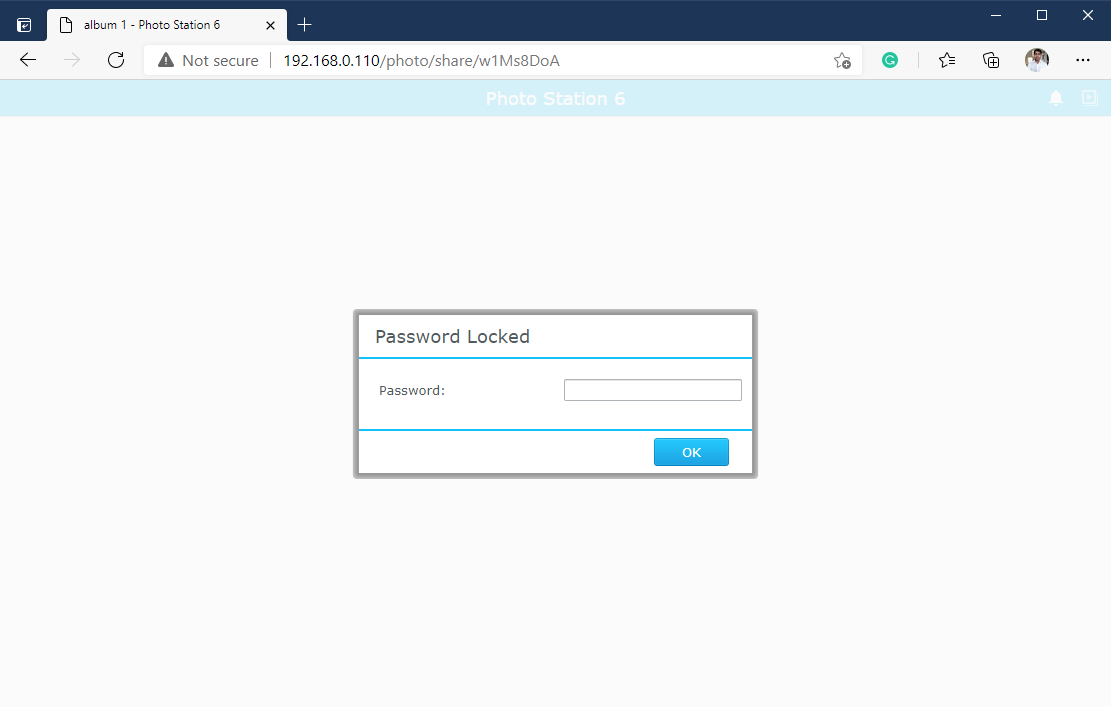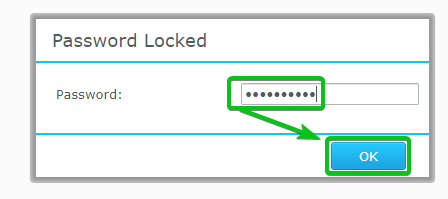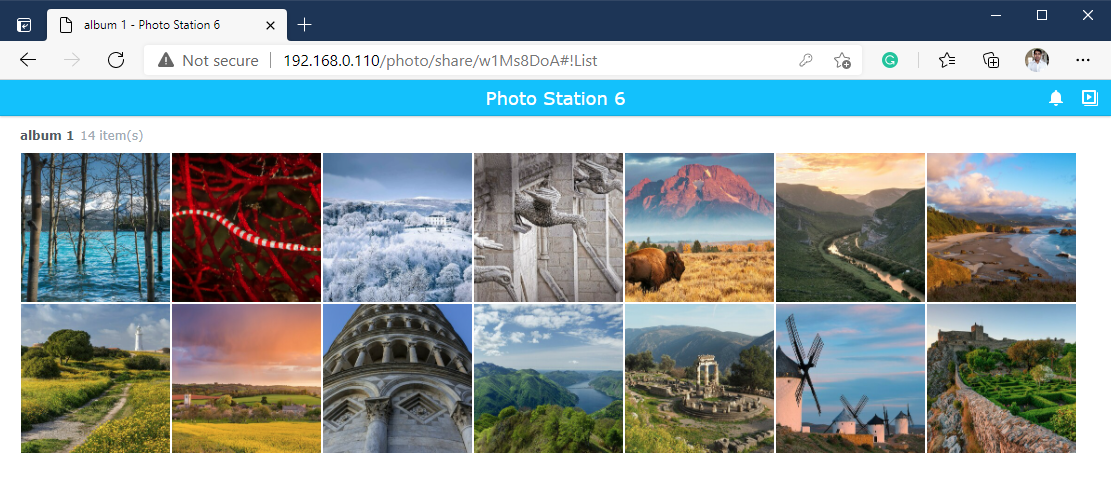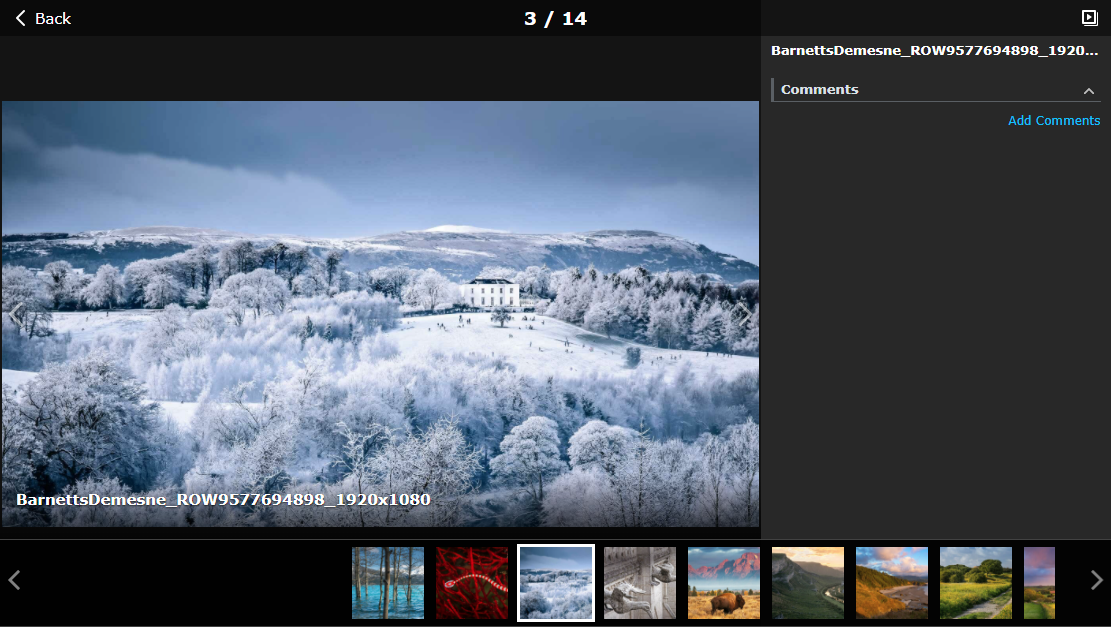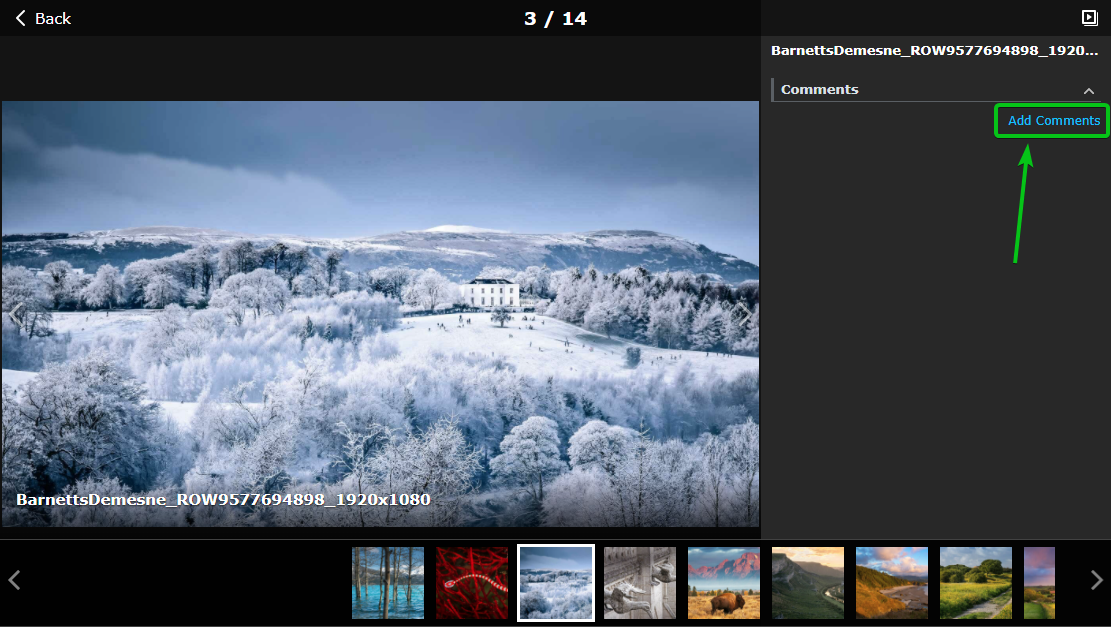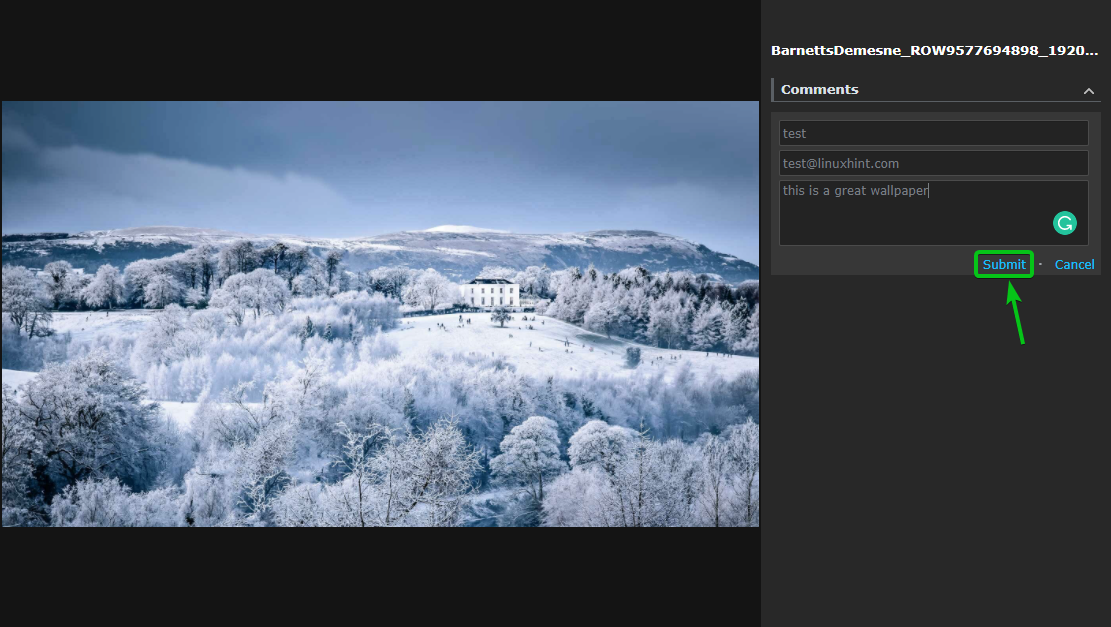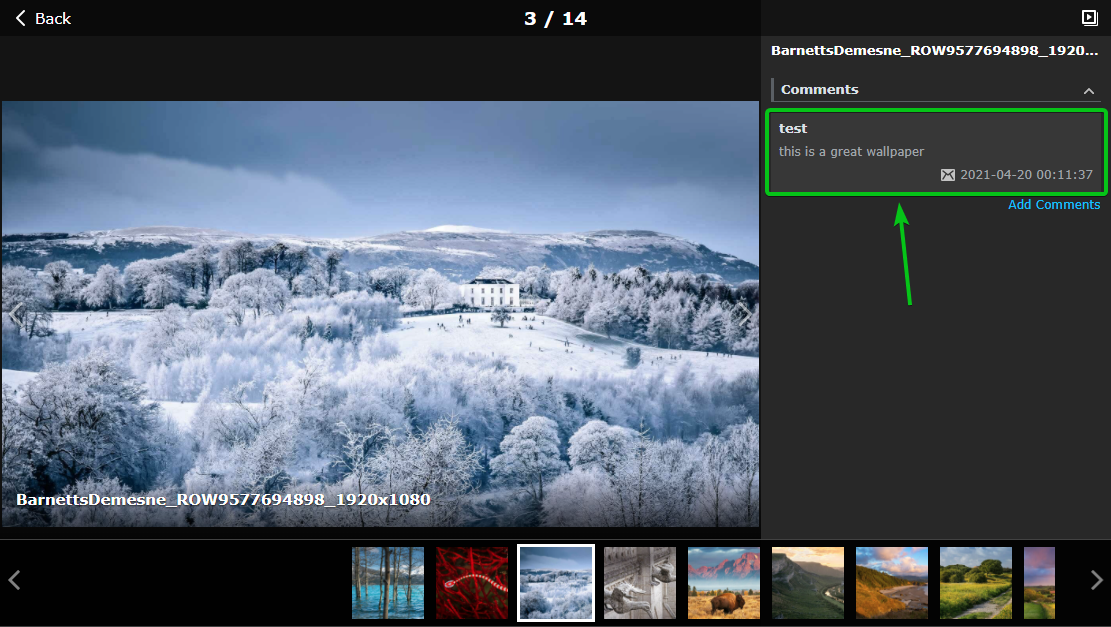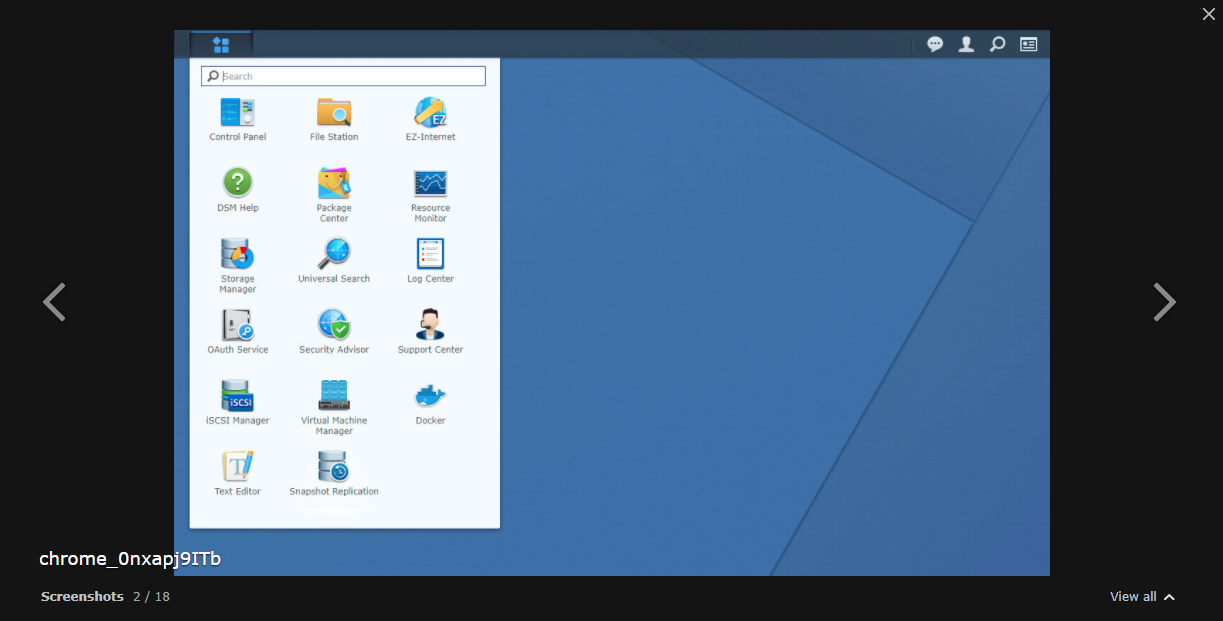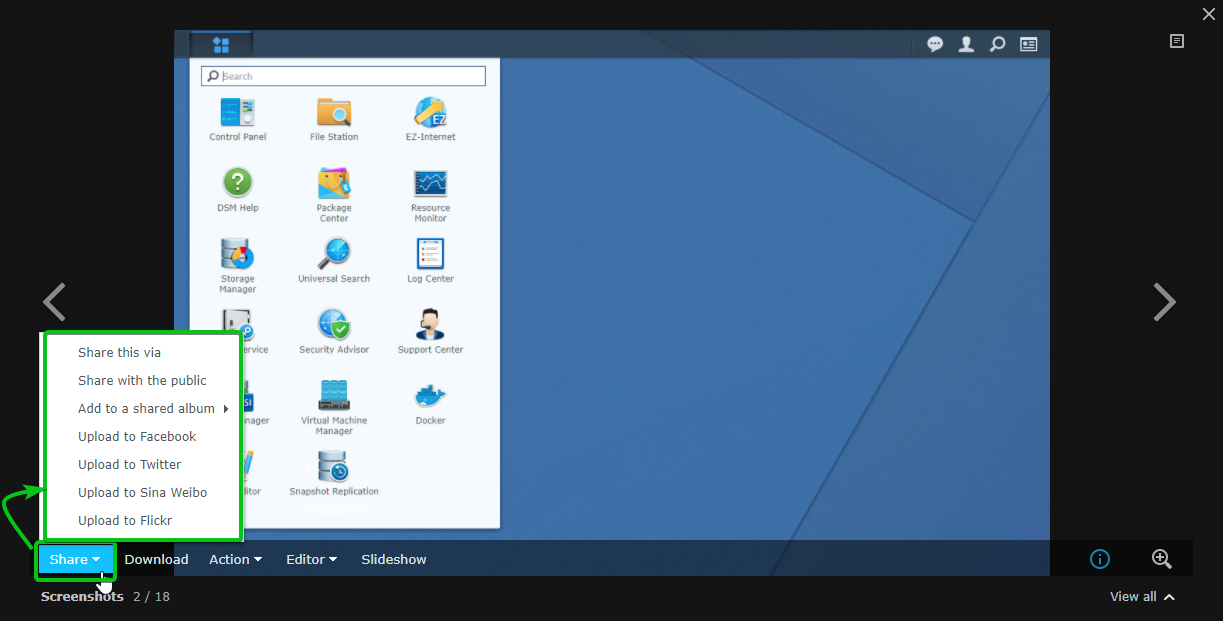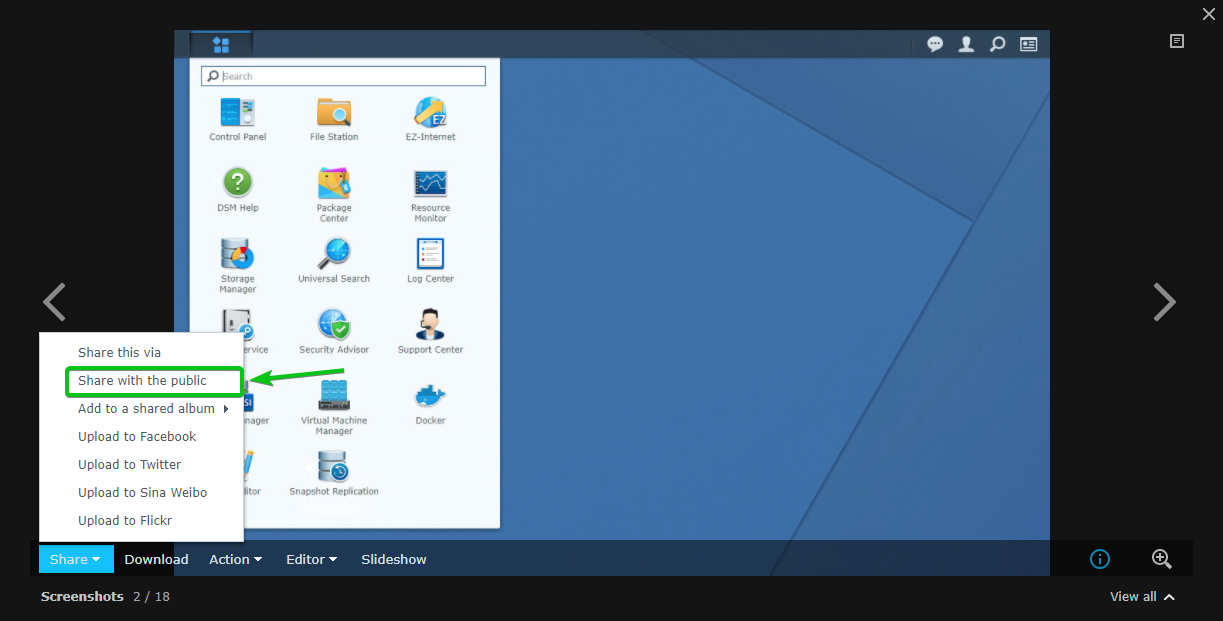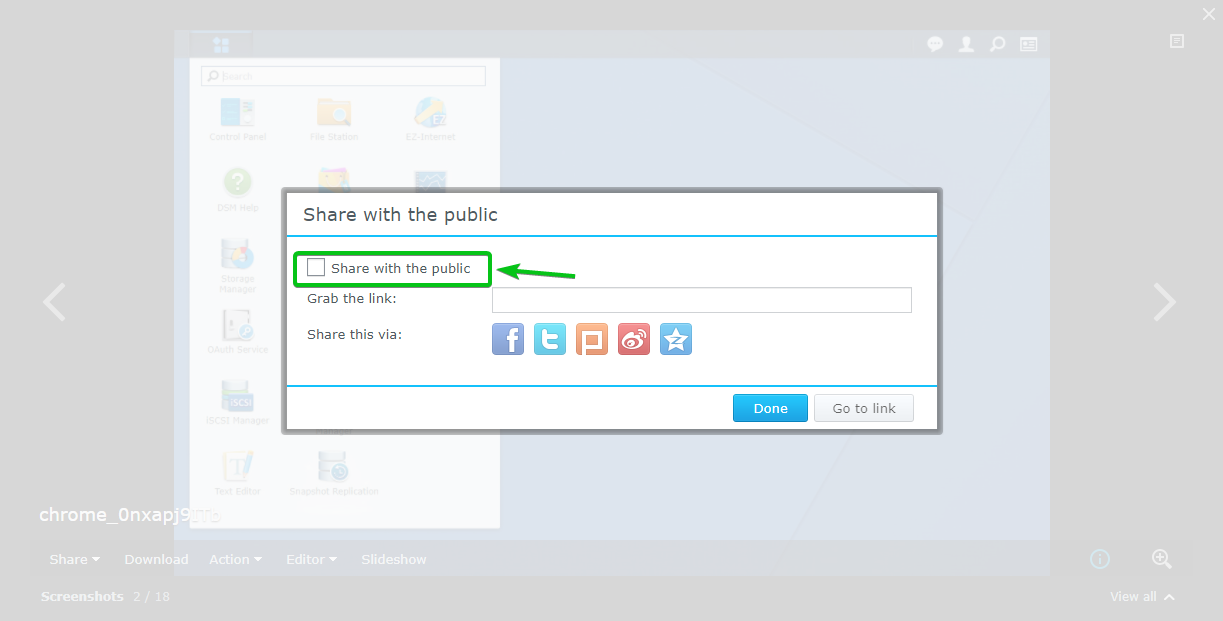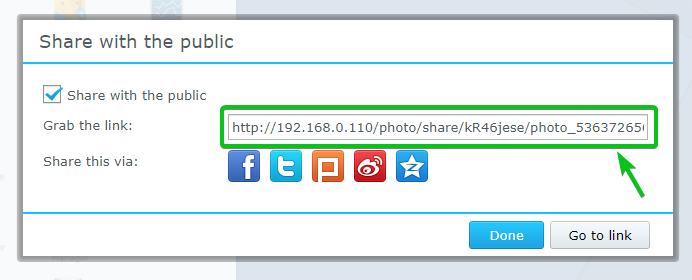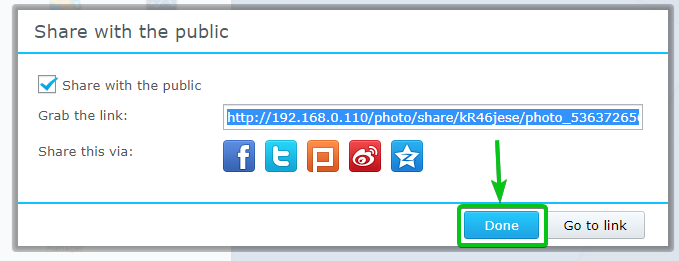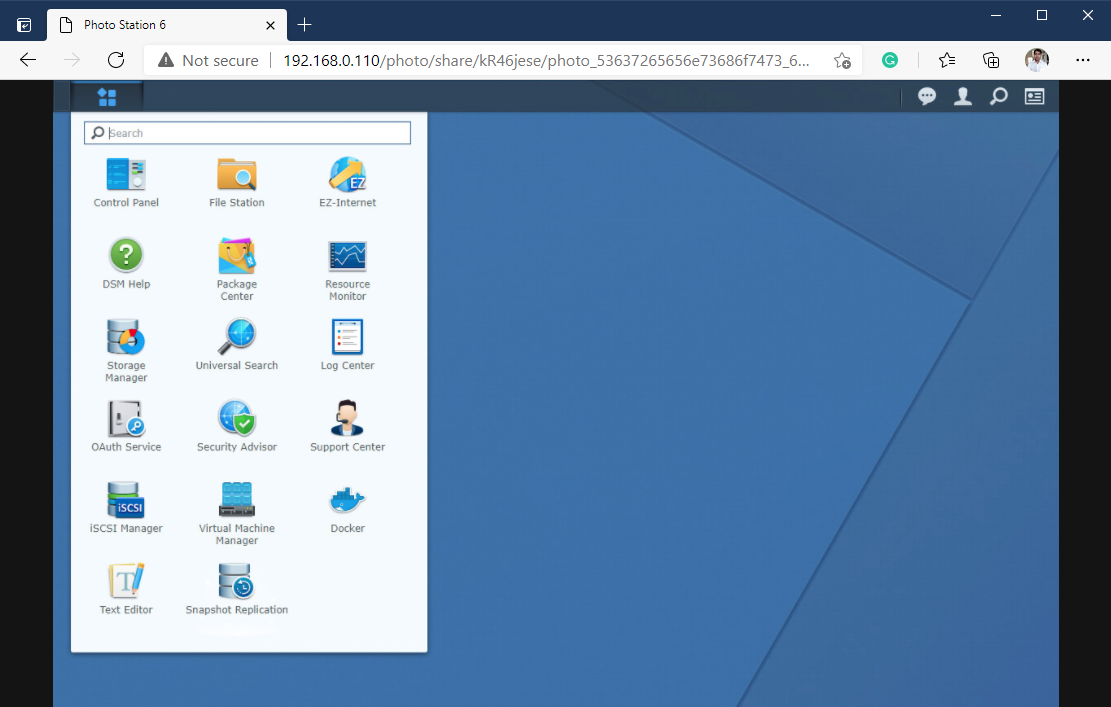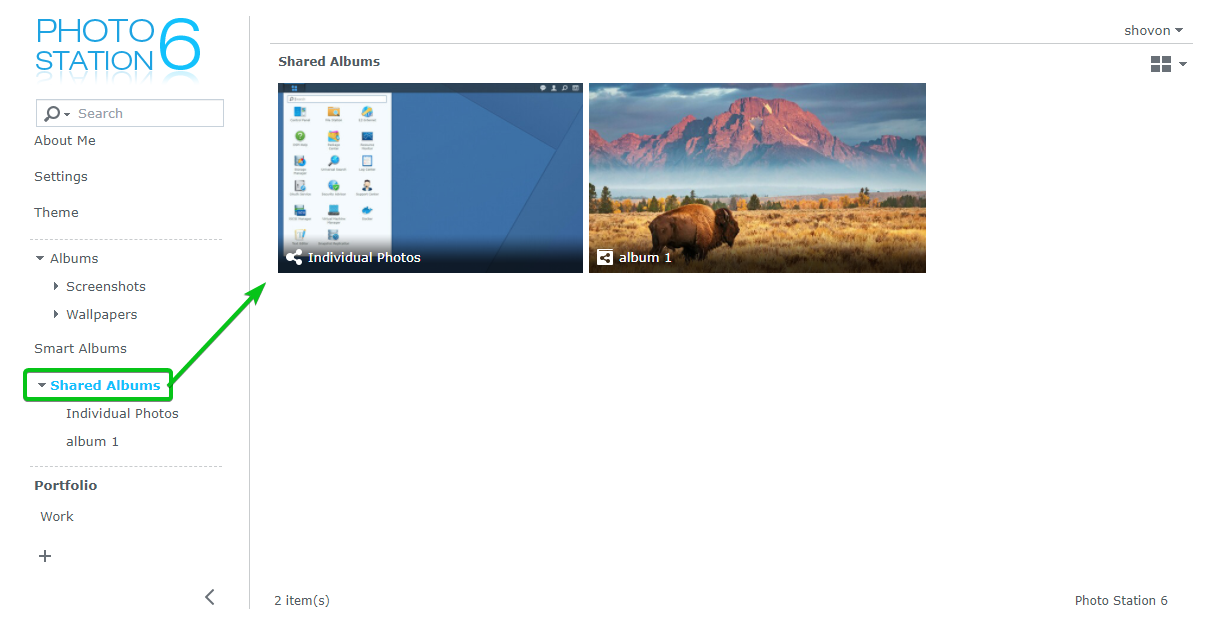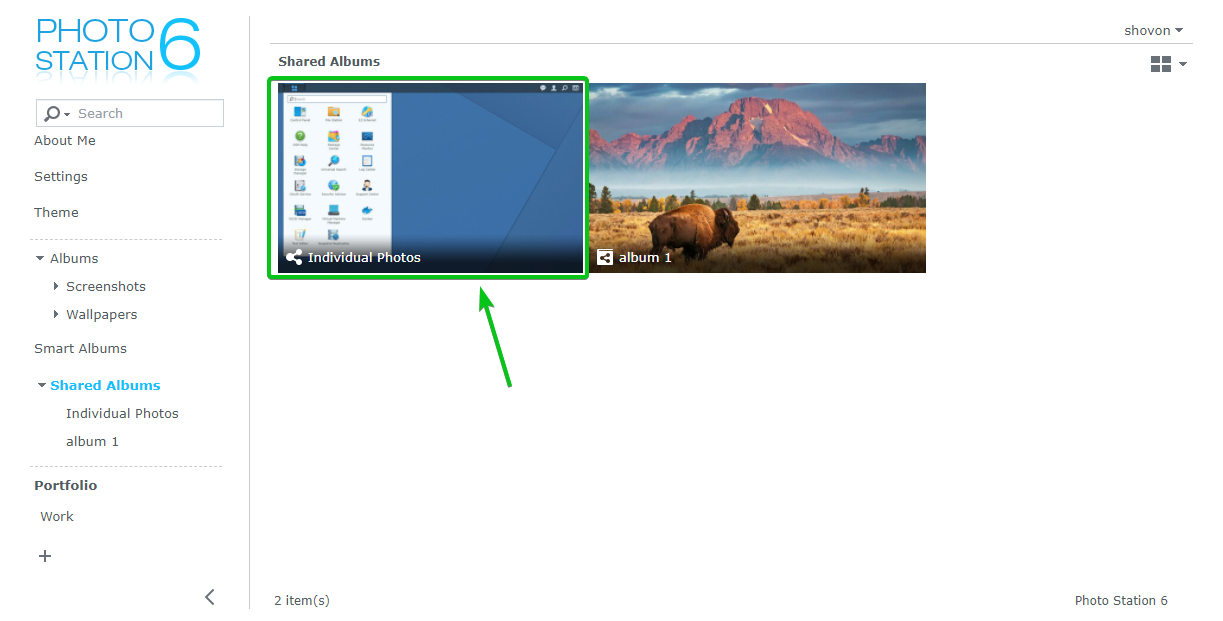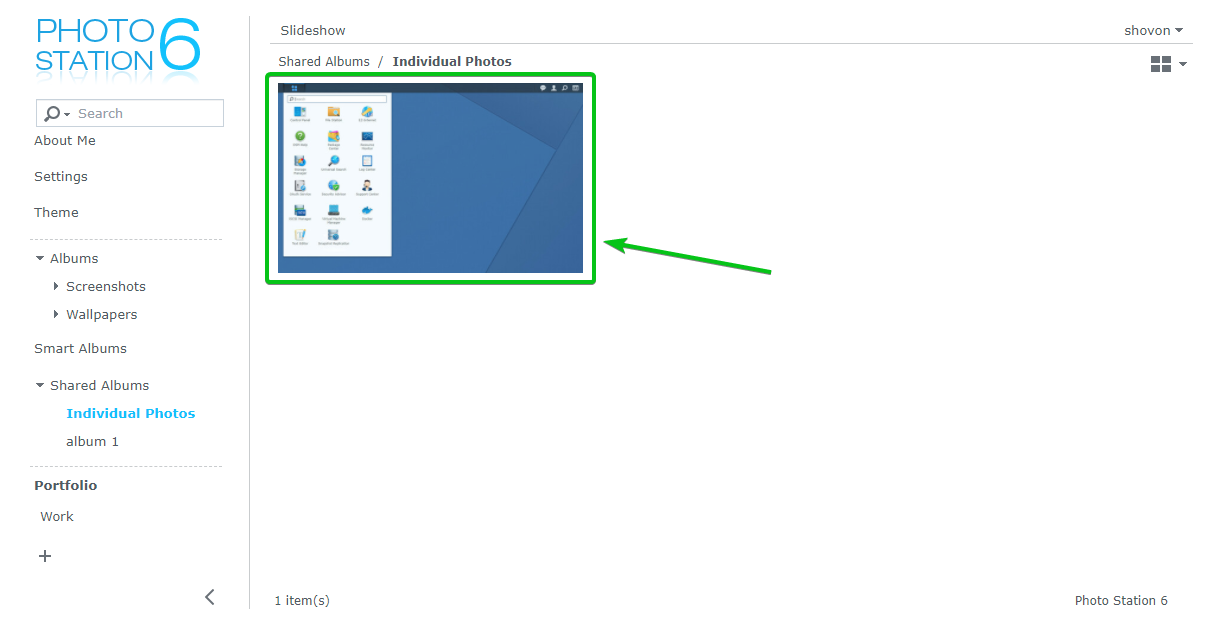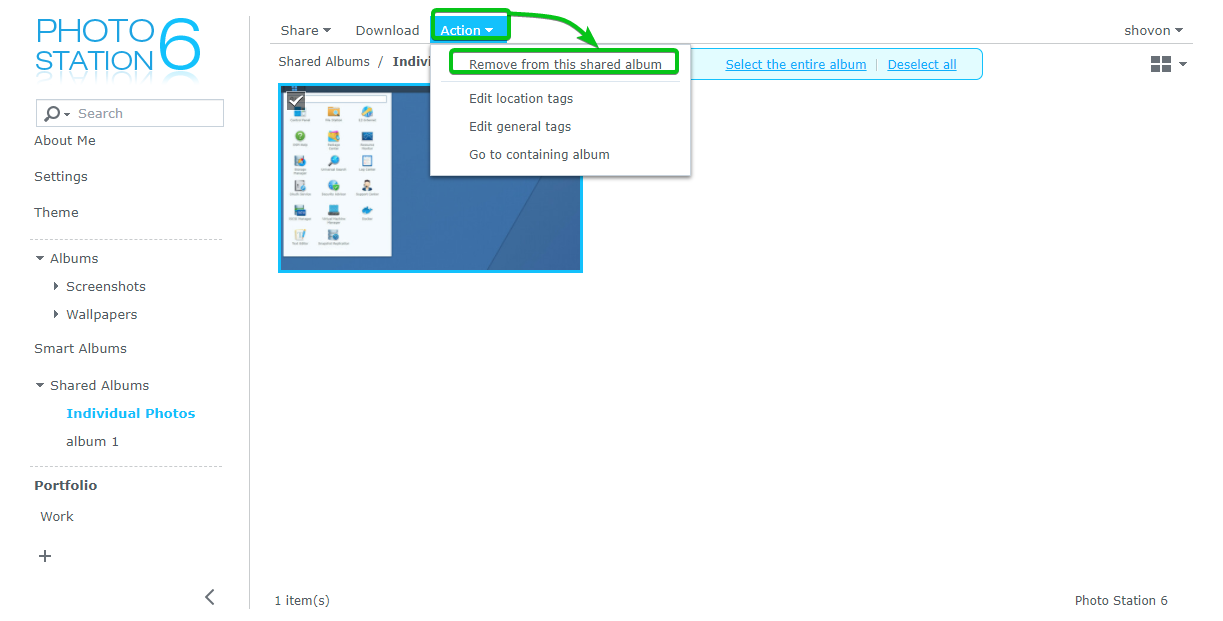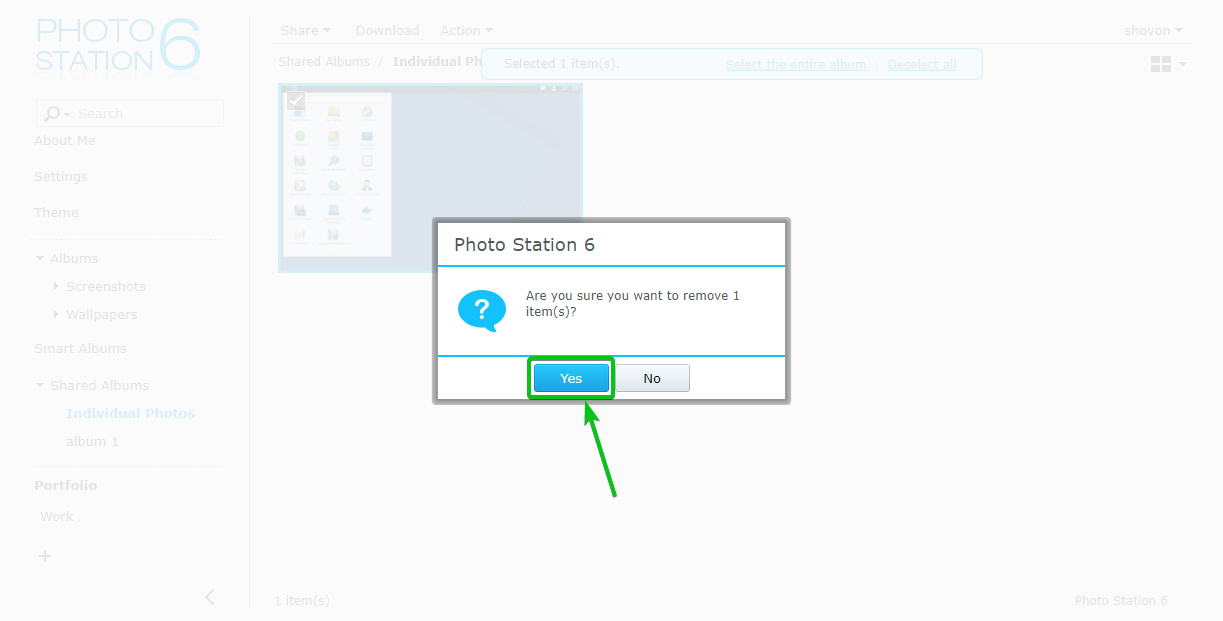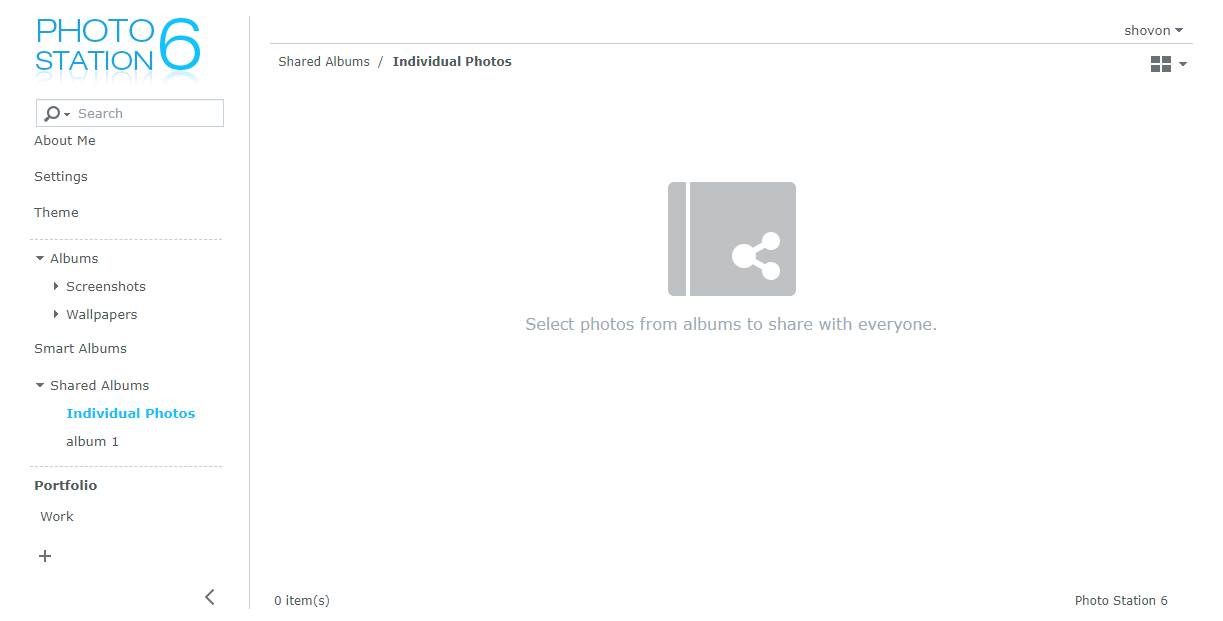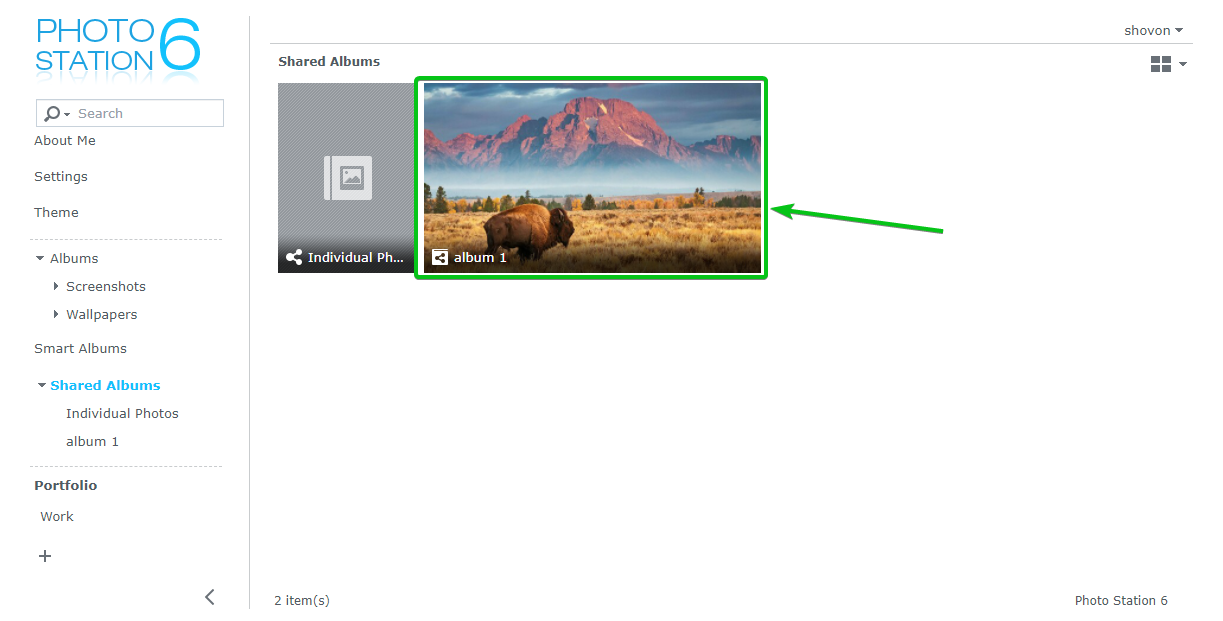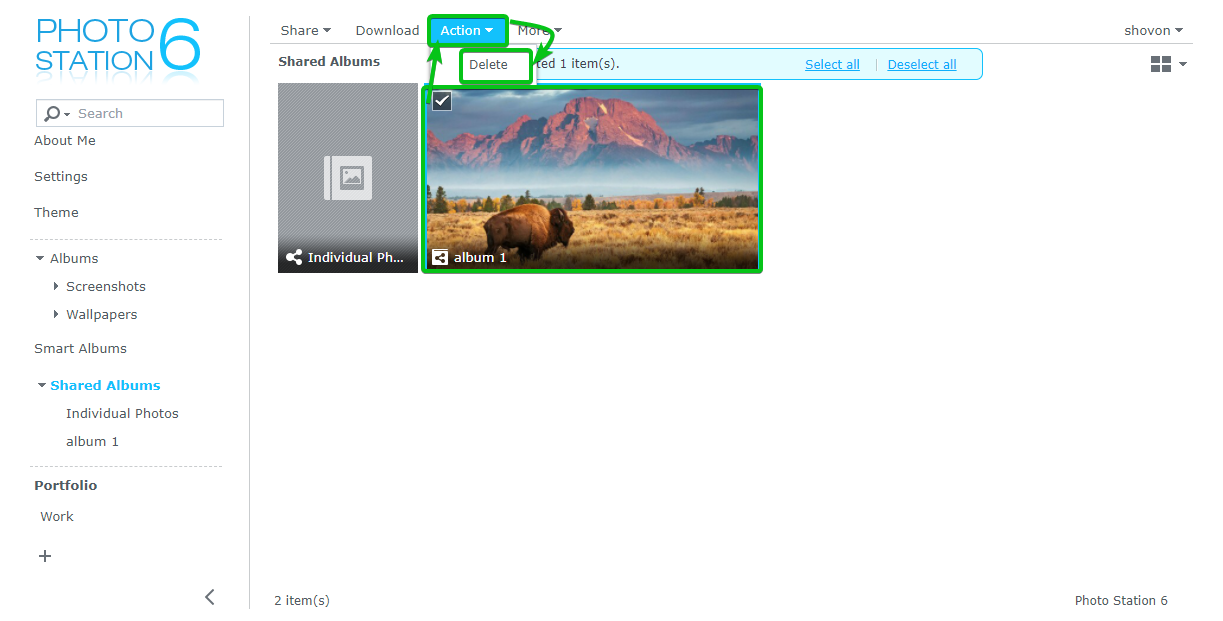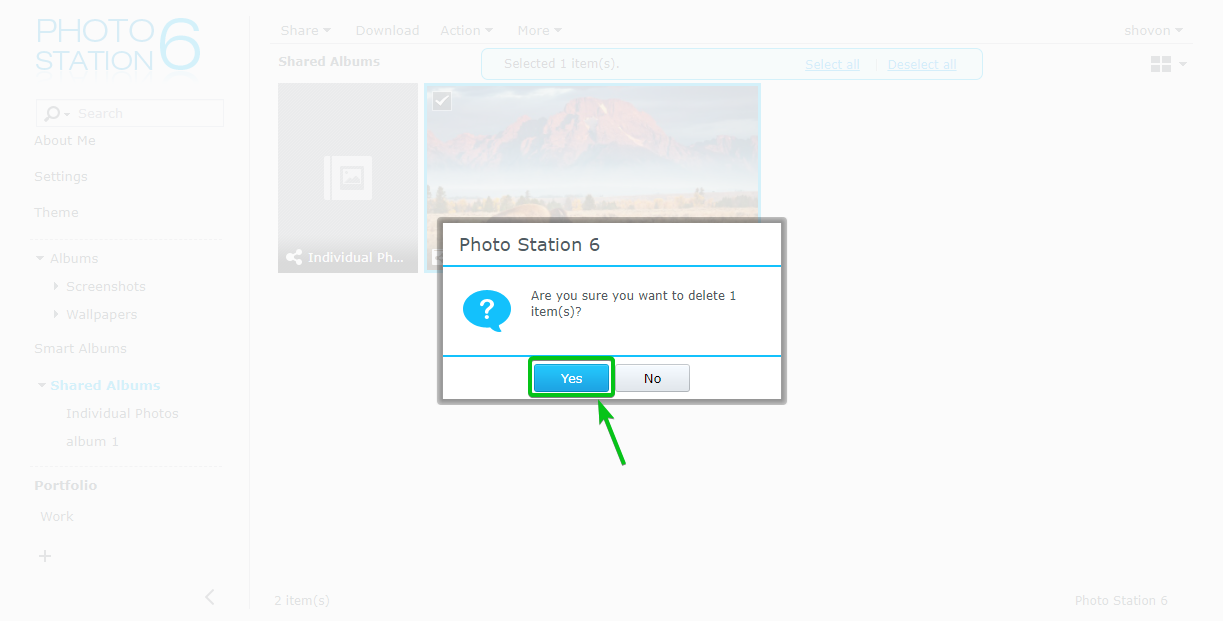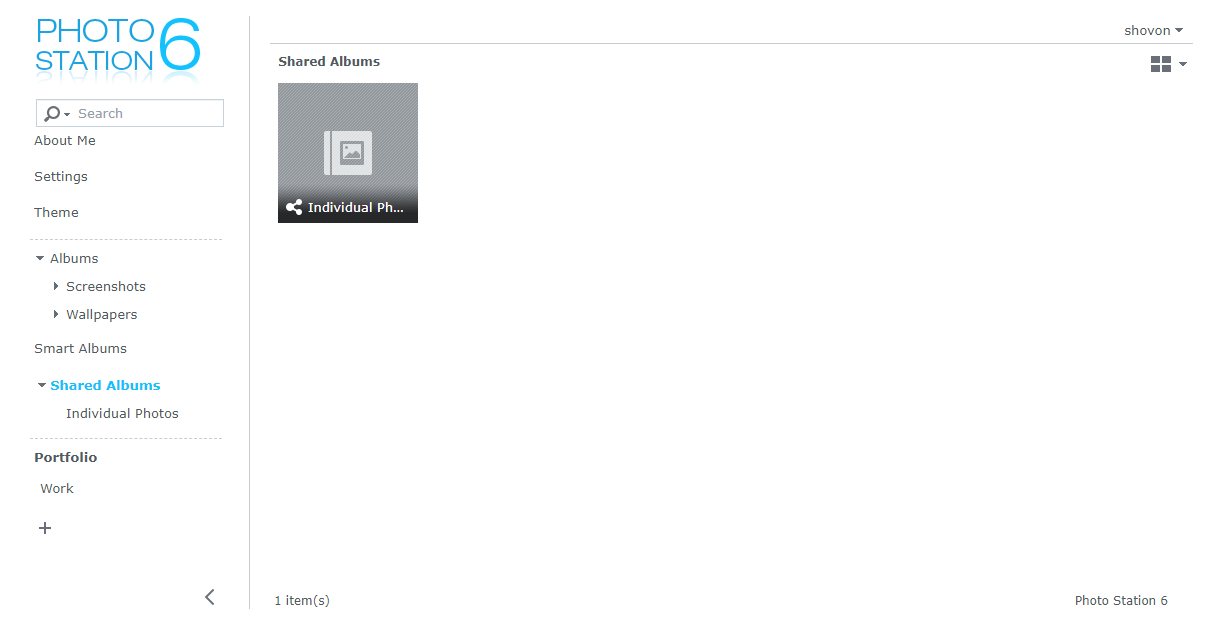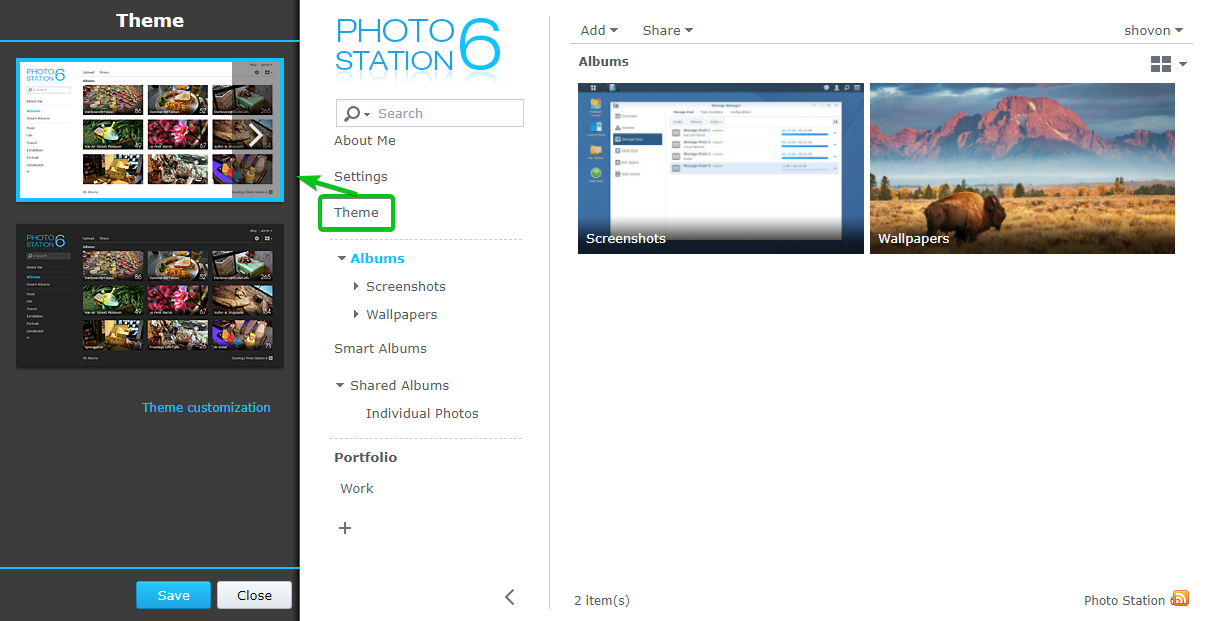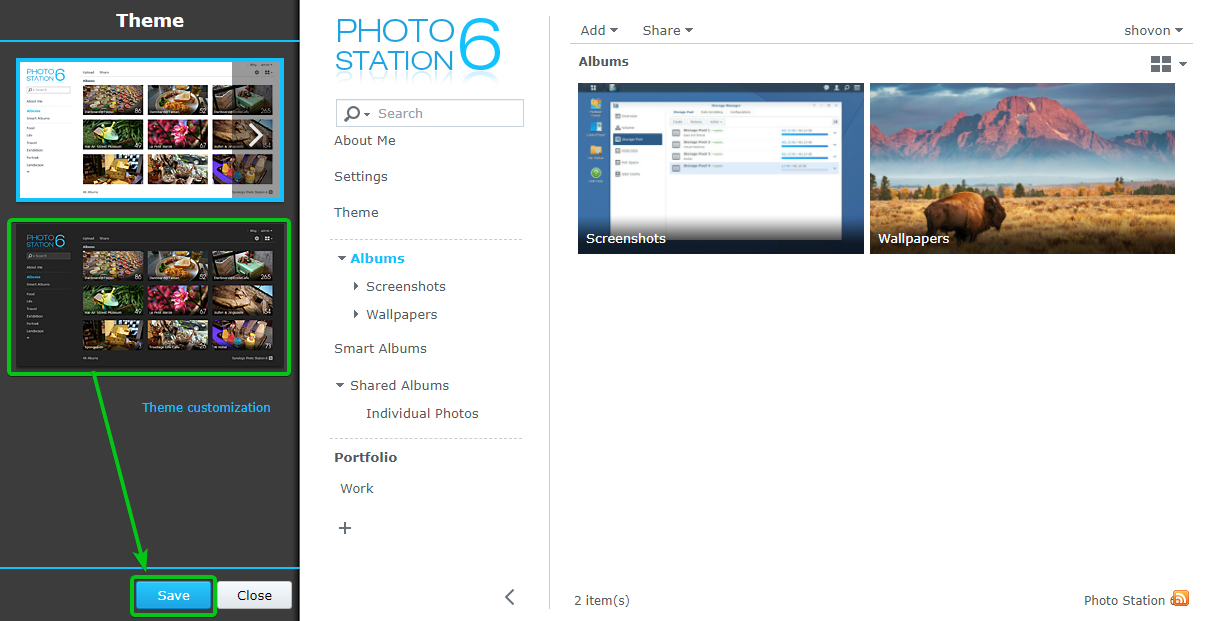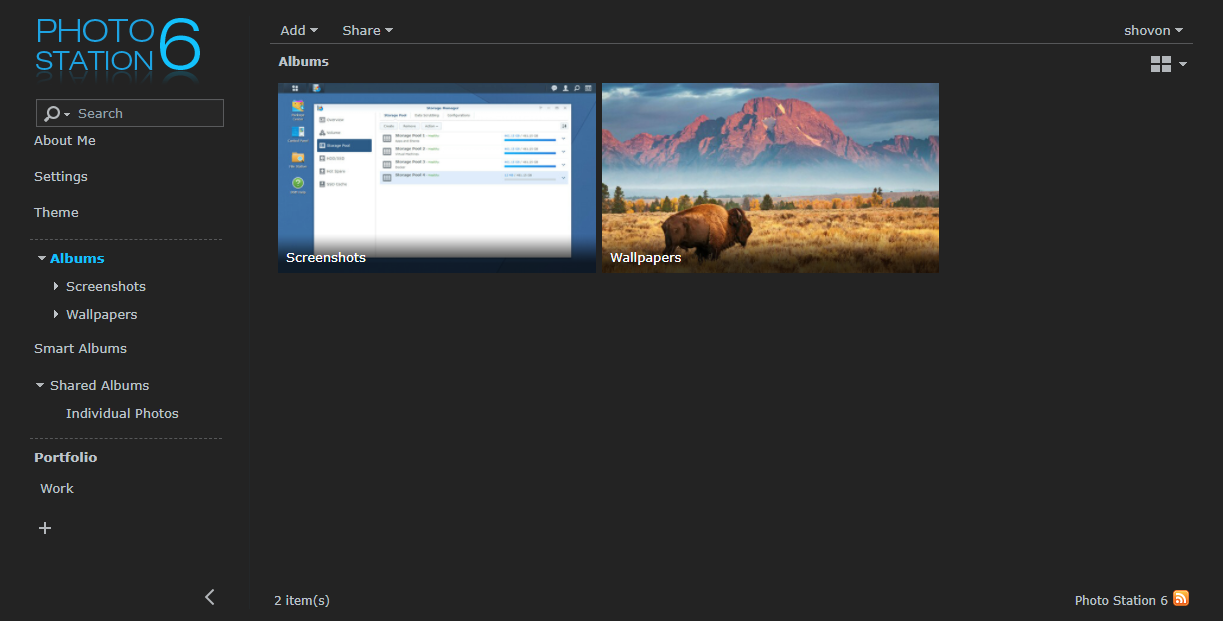Synology Photo Station is an app for your Synology NAS to manage all of your photos. Using the Photo Station app, you can organize your photos into albums and portfolios, share your photos and albums with other people and get feedback. The Photo Station app has other advanced photo management features that will help you in your day-to-day tasks.This article will show you how to install and use the Synology Photo Station app on your Synology NAS. So, let’s get started.
Installing Synology Photo Station:
To manage photos with your Synology NAS, you have to install the Photo Station app. The Photo Station app is available in the Package Center of your Synology NAS.
So, open the Package Center app as marked in the screenshot below.
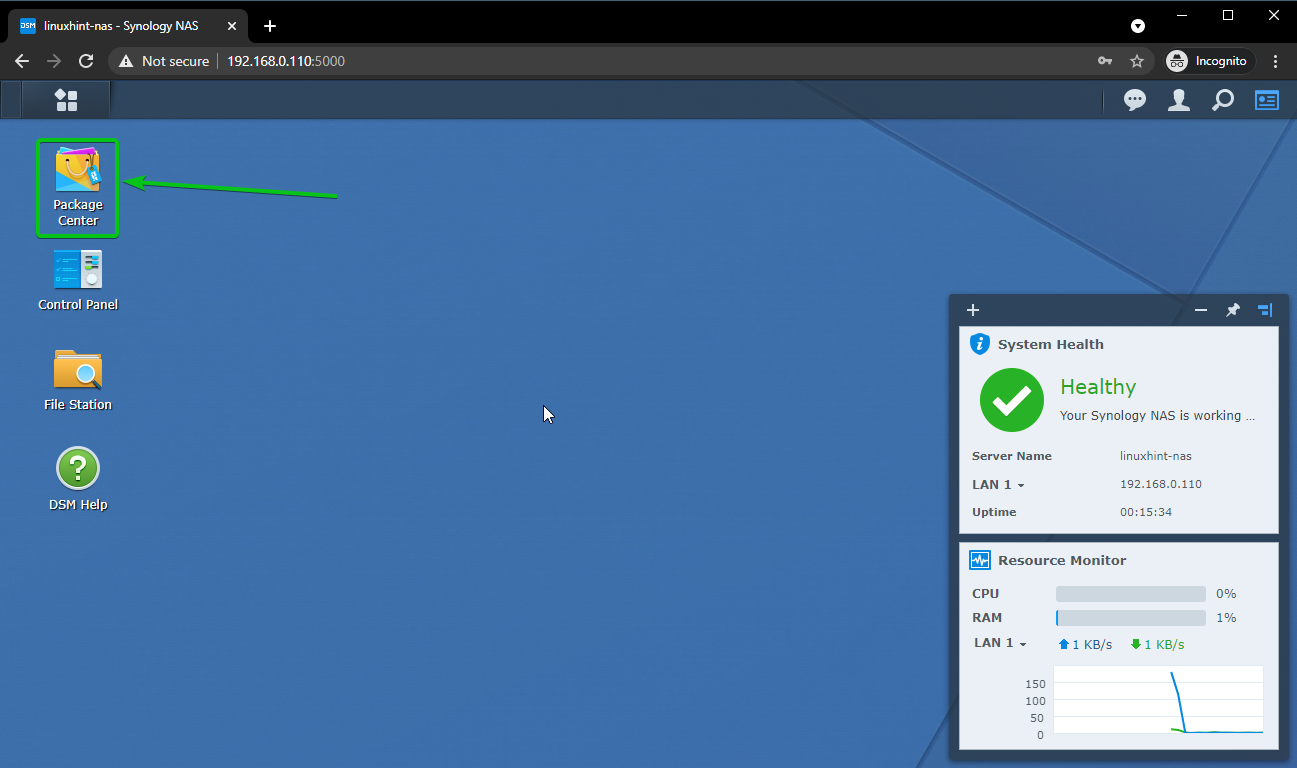
The Package Center app should be opened.
Now, search for the apps that match the keyword photo.
As you can see, the Photo Station app comes up in the search result.
Click on the Install button of the Photo Station app as marked in the screenshot below.
The Photo Station app depends on the PHP 7.0 app. So, you will be asked to install it as well.
To install the PHP 7.0 app, click on Yes.
The PHP 7.0 app is being downloaded. It may take a few seconds to complete.
Once the app is downloaded, it will ask you to select a volume to install the app.
Select a volume from the dropdown menu and click on Next.
Click on Apply.
Once the PHP 7.0 app is installed, the Package Center app should download the Photo Station app. It may take a few seconds to complete.
Once the app is downloaded, it will ask you to select a volume to install the app.
Select a volume from the dropdown menu and click on Next.
Click on Apply.
The Photo Station app is being installed. It may take a few seconds to complete.
Click on OK.
The Photo Station app should be installed and ready to use.
Opening Synology Photo Station:
Once the Photo Station app is installed, you can open it from the Application Menu of your Synology Web management interface, as shown in the screenshot below.
The Photo Station app should be opened.
Creating a New Album:
On Photo Station, your photos are organized in albums. So, the first thing you do is create a new photo album where you can upload and organize your photos.
To create a new album, navigate to the Albums section of the Photo Station app.
As you’re running the Photo Station app for the first time, you can click on the Add button as marked in the screenshot below to create a new photo album.
You can also click on Add > Create album as marked in the screenshot below to create a new photo album.
The Create album wizard should be displayed.
Type in a name and short description for the album.
Select the permission type of the album from the Permission Type dropdown menu as marked in the screenshot below.
Private Album: The album will be private, and only you can view it.
Public Album: The album will be public. Anyone with the album link can view it.
Password: The album will be password protected. Anyone with the album link and the password can view it.
Once you select a Permission Type, you can click on Assign Privileges to manage the owner and group that can access the album.
The Assign Privileges window should be opened. You can allow other users and groups access to this album from here.
By default, the photos you upload to this album are converted to a suitable format and size. If you don’t want that, check the Disable conversion for this album checkbox as marked in the screenshot below.
Once you’re done, click on OK.
A new album should be created.
Uploading Photos to the Album:
To upload photos to the album you’ve created, click on it from the Albums section of the Photo Station app as marked in the screenshot below.
To upload photos to the album, you can either click on the Add button as marked in the screenshot below.
Or, you can click on Add > Upload files as marked in the screenshot below.
The photo uploader window should be displayed, as you can see in the screenshot below.
The photo album you will be uploading photos to should be selected in the top-left corner, as shown in the screenshot below.
You can choose what to do when you upload photos that you’ve already uploaded to the album in the top-right corner.
Rename – The newly uploaded photo will be renamed if it’s already uploaded before.
Skip – The newly uploaded photo will be skipped if it’s already uploaded before.
Overwrite – The newly uploaded photo will replace the one that’s already uploaded to this album.
You can upload photos to the album from your computer or your Synology NAS.
To select photos from your computer and upload them to this album, click on the Your computer button.
To select photos from your Synology NAS and upload them to this album, click on the Your Synology NAS button.
I will upload photos to the album from my computer, So, I will click on the Your computer button as marked in the screenshot below.
Now, select the photos that you want to upload to the album and click on Open.
The photos to be uploaded to the album should be displayed, as you can see in the screenshot below.
To upload the selected photos to the album, click on OK.
As you can see, the photos are being uploaded to the album. It may take a few seconds to complete.
Once all the photos are uploaded, you should see the following window. Click on OK.
As you can see, all the photos are uploaded to the album.
You can change the view mode of the photo album from the top-right corner of the album, as marked in the screenshot below.
I have changed the view mode to Timeline, as you can see in the screenshot below.
You can click on any of the album photos to open it with the image viewer, as shown in the screenshot below.
Listing All the Photo Albums:
You can navigate to the Albums section to list all the photo albums you’ve created on the Photo Station app, as marked in the screenshot below.
Rate and Tag Photos:
You can rate and tag photos using the Photo Station app. Once you rate or tag photos, you can use these criteria to filter photos and create Smart Albums. I will talk about Smart Albums in the next section of this article below.
To rate or tag a photo, open it with the photo viewer. Then, hover the mouse pointer on the top-right corner of the image and click on the icon as marked in the screenshot below.
The details of the photo should be displayed, as you can see in the screenshot below.
You can rate the photo using the marked section of the screenshot below. You can rate a photo 1 star, 2 stars, 3 stars, 4 stars, and 5 stars, respectively.
As you can see in the screenshot below, I have rated the photo 4 stars.
From the Tag section, you can add different types of tags to the photo.
Location Tag: You can geotag (using a world map) the location where you’ve taken the image.
People Tag: You can tag the people that are in the photo.
General Tag: You can add different named tags to the photo.
If you choose to add a Location Tag, a world map will open up, and you can select your location from the map.
If you choose to add a People Tag, you can mark rectangular sections of the photo and type in the person’s name in that marked section of the photo to add a People Tag. You can add as many people tag as you want.
If you choose to add a General Tag, type in the tag title and press <Enter> to add a General Tag.
As you can see, a General Tag is added to the photo.
Creating a Smart Album:
The Photo Station app has an amazing feature called Smart Album. In Smart Albums, you don’t have to upload any photos. The photos you’ve already uploaded are automatically added to their respective smart albums, depending on the criteria you’ve defined while creating the albums.
To create a Smart Album, navigate the Smart Albums section of the Photo Station app as marked in the screenshot below.
Then, click on Create.
Or, click on Add > New Smart Album as marked in the screenshot below.
The Create window should be displayed. You can create a Smart Album from here.
This article will create a smart album that will show you 20 recently uploaded photos from every album to demonstrate how Smart Albums work.
Now, type in a name for the smart album. I will call it Recently Uploaded 20 Photos.
Apply a Recently uploaded filter using the Filter by action dropdown menu as marked in the screenshot below.
Type in 20 as the Recently uploaded filter value as marked in the screenshot below.
Once you’re done, click on OK.
A new Smart Album Recently Uploaded 20 Photos should be created, as you can see in the screenshot below.
In the Recently Uploaded 20 Photos, Smart Album, the last 20 recently uploaded photos from all of my albums are listed, as you can see in the screenshot below.
There are many other filtering options that you can use in your Smart Albums.
For example, you can limit the filter to the photos of one or more albums only. To do that, click on the Albums dropdown menu and select the albums you need from the list.
Once you select the albums you’re interested in, the filters will be applied to only the selected albums.
You can also filter photos using their filename.
To do that, type in the keywords (separated by whitespace) and select how you want to match the keywords from the dropdown menu as marked in the screenshot below.
All of these words: This filter will find only the photos where the filename has all the keywords.
Any of these words: This filter will find only the photos where the filename has any of the keywords.
The exact phrase: This filter will find only the photos where the filename has the exact keyword.
You can filter the photos by so the date they were taken or the date they were uploaded. You can also filter some of the recently uploaded or recently commented photos.
You can also filter photos by tags, ratings, and different photo properties.
If you choose to filter photos by tags, you can select whether you want to match the photos that have any of the tags or must have all the tags you’ve added.
Any: Match the photos that have any single one of the tags you want to filter with.
All: Match only the photos that have all the tags you want to filter with.
To add a tag, click on the dropdown icon and select the tags you want to filter with.
As you can see, I have added 2 general tags to filter photos.
If you want, you can click on the + icon as marked in the screenshot below to add multiple tags or photo properties filters.
As you can see, a new filter is section is added.
You can configure a photo filter as before.
If you want to remove a photo filter, click on the – icon as marked in the screenshot below.
The photo filter should be removed.
Creating a Portfolio Album:
You can pin multiple photo albums and smart albums to a portfolio. A portfolio will help you organize your photo albums.
To create a new portfolio, click on the + icon from the Portfolio section as marked in the screenshot below.
An empty textbox should be displayed.
Type in the name of your portfolio and press <Enter>.
A new portfolio should be created, as you can see in the screenshot below.
Click on the newly created portfolio (Work in my case) to access it.
To pin photo albums to the portfolio, click on Pin Here as marked in the screenshot below.
You can also click on Pin Here from the top section of the Photo Station app as marked in the screenshot below to pin photo albums to the portfolio.
All the photo albums should be listed.
Check the photo albums that you want to add to the portfolio and click on OK.
The photo albums you’ve selected should be added to the portfolio, as shown in the screenshot below.
To add a Smart Album to the portfolio, navigate to the Smart Albums section and select a Smart Album that you want to add.
Now, click on Action > Pin to click on the portfolio to add the Smart Album. In my case, it is the Work portfolio.
The Smart Album should be added to the portfolio, as you can see in the screenshot below.
Sharing an Album:
You can share an album with your friends and family.
To share an album, navigate to the Albums section of the Photo Station app and click on the album you want to share.
The album should be opened.
To share the album, click on Share > Share with the public as marked in the screenshot below.
The Share with the public window should be opened. You can share your selected photo album from here.
First, type in the name of the shared album in the Album Name section.
If you want the share link to be valid and accessible for a certain period, check the Customize validity period checkbox and set the validity period for the link using the dropdown menus as marked in the screenshot below.
If you want to password-protect the share link, check the Enable Password Protection checkbox and type in a password for the share link as marked in the screenshot below.
You can configure some advanced settings as well.
For example, if you want to allow the users to comment on the photos in the shared album, you can check the Allow Comments checkbox as marked in the screenshot below.
Once you’re done, click on OK.
A sharing link for the album should be generated, as you can see in the screenshot below.
You can copy the share link and send it to your friends and family.
Once you’re done, click on Done.
As I have set a password for the shared album, if anyone tries to access the share, they will be prompted for the password, as shown in the screenshot below.
Type in the shared password and click on OK.
The shared photo album should be displayed, as you can see in the screenshot below.
You can click on any photo from the album to open it with the image viewer, as shown in the screenshot below.
As I have allowed commenting on the photos in the shared album, the people who have access to these photos should add comments to the photos.
To add a comment, click on Add Comments.
Type in your comment and click on Submit to add it.
As you can see, the comment is added to the photo.
Sharing a Photo:
You can share a single photo as well.
To share a photo, open it with the image viewer, as shown in the screenshot below.
Hover the mouse cursor on the bottom section of the image viewer and click on Share as marked in the screenshot below.
Different sharing methods should be displayed. You can choose any one of them depending on your need.
To create a public share link as before, click on Share with the public as marked in the screenshot below.
Now, check the Share with the public checkbox to generate a share link for the photo.
A sharing link should be generated. Copy the link and share it with your friends whom you want to have access to the share.
Once you’re done, click on Done.
Your friends can access the photo you’ve shared with them using the share link, as you can see in the screenshot below.
Managing Shared Photos and Albums:
To manage your shared photos and albums, navigate the Shared Albums section of the Photo Station app as marked in the screenshot below.
You should find all the photos you’ve shared in the Individual Photos album.
As you can see, the photo I’ve shared is in the Individual Photos album.
To remove a photo from the share, select it and click on Action > Remove from this shared album as marked in the screenshot below.
To confirm the removal operation, click on Yes.
The photo should be removed from the Individual Photos album, and the share link would no longer work.
In the same way, you can remove a photo album that you’ve shared from the Shared Albums section as well.
To remove a photo album from the share, select it and click on Action > Delete as marked in the screenshot below.
To confirm the removal operation, click on Yes.
The shared photo album should be removed, and the share link would no longer work.
Changing Photo Station Theme:
At the time of this writing, the Photo Station app has 2 themes. A Light theme and a Dark theme.
To switch the Photo Station app theme, navigate the Theme section of the Photo Station app as marked in the screenshot below.
Select the theme you want to apply to the Photo Station app from the left side and click on Save.
The selected theme should be applied to the Photo Station app, as shown in the screenshot below.
Conclusion:
This article shows you how to install the Photo Station app on your Synology NAS. I have also shown you how to use the Photo Station app to manage photos like creating new albums, uploading photos to the album, listing photo albums, rating and tagging photos in the album, creating smart albums, portfolio albums, sharing photos and albums, and managing shared photos and albums. I have shown you how to change the theme of the Photo Station app as well.

